|
Home
Up

Marcom Award
2007-2008-2009
2010-2011-2012
2013-2014

Videographer Award
2007-2008-2009
2010-2013-2015
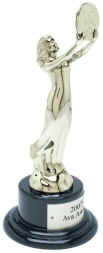
AVA Award Winner
2007-2008-2009
2010-2011-2012
2013-2014-2015
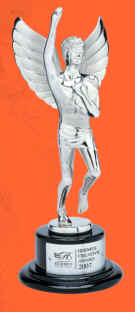
2008-2009-2010
2011-2012-2013
2014
Hermes Creative
Award Winner

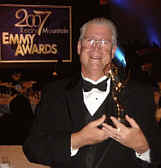
Ed
Sharpe / CouryGraph Productions
Glendale Daily Planet / KKAT-IPTV 2007 EMMY®Award Winner
2007
Rocky Mountain Region Emmy® Award Winner for Breaking News/ Continuing
Coverage
FIRST
IN GLENDALE!

Berkeley Film Festival
Grand Festival
Pioneer In
Television Award
2011

Remi Award Winner
Worldfest Houston
2009 - 2010 -2011

2009 EMPixx Awards
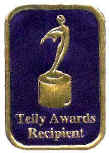
Telly Awards 2006-2007-2008-2009-2010

2008 & 2009
Communicator Awards
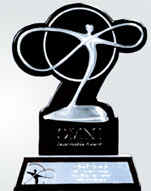
Omni Intermedia Awards
2007-2008-2009

Millennum Awards
2006-2007-2008

Marcom Award
2007-2008-2009
2010-2011-2012
2013-2014
 
W3 Media Awards
2008/2009
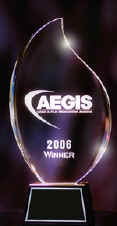
2007/2008/2009 Aegis
Finalists and Winners

Accolade Award Winner
2007-2008-20010

Arizona Assn. of Black Journalists Diversity Winner
2008/2009
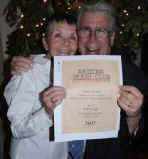
Arizona Press Club Winner
Ed Sharpe,
The Glendale Daily Planet:
Use of Online Media
"Cesar E. Chavez 2007"
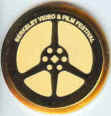
Berekeley Film Festival
2006-2007-2008-
2009-2010-2012
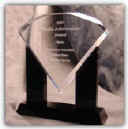
Media Achievement Awards

2008/09 Finalists and Winners - DV Awards



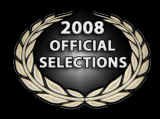
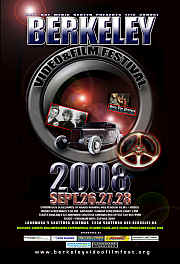

CouryGraph
Productions



CALIFORNIA
HISTORICAL RADIO SOCIETY
IS PLEASED TO HONOR
EDWARD
A. SHARPE
WITH THE
CHARLES D. 'DOC' HERROLD
AWARD FOR
OUTSTANDING ACHIEVEMENT IN
THE PRESERVATION AND DOCUMENTATION OF
EARLY RADIO.
BY
THE BOARD OF DIRECTORS, 1992:


| |
|
Book Topics Archive 1
This is an extension of Lesa's Book
Topics
on Glendale Daily Planet!
|
The Desert
Hedge Murders by Patricia Stoltey

By:
Lesa
Holstine Glendale Daily Planet Book Topics Editor
It takes a great deal of patience
for a sixty-year-old  former judge to accompany her mother's travel club to
Laughlin, Nevada and Oatman, Arizona. Sylvia Thorn was a
reluctant recruit to her mother's trip. But, it will only
get worse in this mystery, reminiscent of the Keystone Cops,
The Desert Hedge Murders by Patricia Stoltey.
former judge to accompany her mother's travel club to
Laughlin, Nevada and Oatman, Arizona. Sylvia Thorn was a
reluctant recruit to her mother's trip. But, it will only
get worse in this mystery, reminiscent of the Keystone Cops,
The Desert Hedge Murders by Patricia Stoltey.
How could Sylvia ever expect to keep tabs on the Florida
Flippers, a group of seventy and eighty year old women?
They're independent, opinionated, and out of control. And,
it only makes it worse when Sandra Pringle finds a body in
her bathtub, soon after check-in at the hotel in Laughlin.
While the Florida Flippers are excited about the body, and
want to investigate the murder, Sylvia suspects Sandra and
her roommate, Patsy, know a little more about the dead man
than they're letting on. It only takes one evening of the
Flippers running around the casino, asking questions, for
Sandra to take the opportunity to slip away from the group.
Patsy's stories about Sandra's whereabouts are a little
suspicious, but the Flippers' vacation plans aren't squashed
by Sandra's absence. The women all board the bus to Oatman,
Arizona, anticipating their visit to the ghost town. But,
their tour of the Lone Cactus Gold Mine is disrupted by a
grisly discovery. Between the dead man, and the tour group's
problems, Sylvia suspects the Flippers might be in danger. A
visit from an FBI agent confirms there's something more
involved than a suspicious death. Sylvia may think something
is wrong. The Flippers see it as more to investigate,
getting in the way of the police and FBI as they scatter all
over.
Back in Florida, Sylvia's brother, Willie, knows his sister
is in trouble. After his experiences in Vietnam, Willie
suffers from Post Traumatic Stress Disorder. But, he is also
psychic. His comments to his octogenarian father, Peter, and
their inability to reach Sylvia, sets the two men on a
wild-goose chase. After flying into Las Vegas, they team up
with an old friend of Peter's from World War II. A trip in
an old motorcycle sidecar on Old Route 66 isn't quite what
Willie had in mind when he knew he needed to reach his
sister.
Since the Flippers need to return to Oatman a couple times,
Stoltey has the opportunity to capture the town with all of
its charms. She includes the ghost stories, the hotel and
restaurant, the old gold mine. Sylvia's reaction to the wild
burros that actually roam the streets is priceless. She
feels quite threatened by the animals. So much of the town
is included in the story, including Oatie the Ghost, and the
Gable/Lombard honeymoon suite.
Stoltey's madcap mystery is highlighted by the odd group of
seniors. Sylvia's mother is right. The former judge comes
across as too prim and stuffy. She needs to loosen up.
Willie, with his lovable quirks, is a more likable
character. The Florida Flippers, and the motorcycle ride
from Las Vegas to Oatman, add humor to a complicated story. The
Desert Hedge Murders is called "A Sylvia and
Willie Mystery". Poor Sylvia is overshadowed by the
Florida Flippers and Willie. But, the ending leaves
possibilities for future adventures for the brother and
sister. Sylvia's already an avid fan of mysteries. If she
learns to loosen up, she might even enjoy future cases.
Patricia Stoltey's website is www.patriciastoltey.com
The Desert Hedge Murders by Patricia Stoltey. Five Star
Publishing (A Gale Group), ©2009. ISBN 9781594147852
(hardcover), 278p.
lholstine@yahoo.com
book blog: http://lesasbookcritiques.blogspot.com
Twitter @LesaHolstine
|
| The Deadly Combination @ Velma Teague

By:
Lesa
Holstine Glendale Daily Planet Book Topics Editor
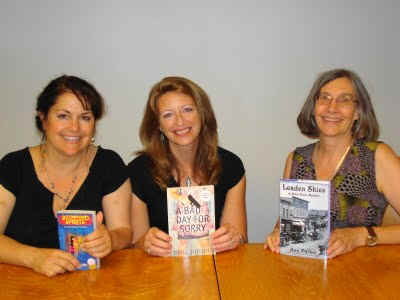
(left to right, Juliet Blackwell, Sophie Littlefield, and Ann
Parker Photo by Lesa Holstine)
The Deadly Combination of Juliet Blackwell, Sophie Littlefield, and Ann Parker were a hit at the Velma Teague Library when they appeared to discuss "Strong Heroines in Crime Fiction". They themselves exemplify strong women showcasing their talents. And, it was obvious they're having fun touring together. They brought that sense of fun to the library program.
After introductions, they thanked me, and said how pleased they were to be at the Velma Teague Library. They said they told other people in the mystery community they were coming to Glendale, and everyone said, oh, you're appearing at the Teague. Sophie told the audience the library was lucky to have so much community support, and it was good to see people turn out for a library program.
Each author introduced their books and characters. Ann Parker said she
almost feels as if she's local because her publisher is Poisoned Pen Press in Scottsdale. She told the audience that she writes a historical mystery series set in Leadville, Colorado during the biggest silver rush in the world. People came from all over, but weren't prepared for Leadville. At 10,000 feet, it's winter for nine months of the year there. Some people thought they could just pick silver off the ground. Ann's character is a woman who runs a saloon in Leadville, Inez
Stannert. She calls her a woman in a man's world. The three books in the series all have rhyming titles, Silver Lies, Iron Ties, and Leaden Skies. She said they've had a good time teasing her about future titles. She thought Golden Thighs might be going too far, but the others assured her it might be a hit.
Juliet Blackwell is actually Julie Goodson-Lawes. She said she wrote her first mystery series with her sister, using a family name, Hailey Lind. Those books made up the art forgery mystery series. The fourth book in that series will be out next summer, with a new publisher. The first book, Feint of Art, was nominated for an Agatha for Best First Mystery Novel, and then, after three books, the series was dropped. Juliet said she's writing her new books by herself. It's a paranormal series, beginning with Secondhand Spirits. Some readers have told Julie this is the first paranormal book they ever read.
Julie said Secondhand Spirits was fun to write. When she first decided to write a book about a witch, she said the only fun witch she knew was from Bewitched, and she didn't want to write Bewitched. But, her background is in anthropology, so she researched the history of witchcraft. There has been a lot of mystery, and atrocities still committed in the name of witchcraft. Witchcraft is important to women's issues because most people accused are women. Witchcraft is often associated with healing. The wise woman is respected in villages until things go wrong, and then she takes the blame. There are serious themes about witchcraft and culture. Juliet showed her cover, and said you can tell it's a fun book because of the sparkles on the cover. But, she said she thinks it's a little more serious than the cover indicates.
A Bad Day for Sorry is Sophie Littlefield's first published book. She said it's considered part of St. Martin's hardboiled publications. When she thinks of strong women, she thinks of the middle-aged woman, often overlooked by society. Stella Hardesty is fifty, and she suffered from domestic abuse. She kills her husband, and that unleashes a part of her she never knew she had. Sophie said she herself went through a mid-life crisis, and had a bad attitude. She was frustrated with her experiences, needing reading glasses, etc. She complained that no one warned her about changes - she can't see to put her mascara on. Women of a certain age are not respected by society.
The authors asked the audience what they thought when they heard "strong women". Responses ranged from determined, problem solver, goes against convention. Julie said if anyone watched The Closer or Saving Grace, the characters were more mature women. They said the people buying books are women, grown-ups. One woman in the audience commented, "We have time to read." Another word thrown out was flexibility. Julie said at one time women protagonists, such as Sara Paretsky's
V.I. Warshawski, were just women put into the male role as a private investigator. Now, female characters are strong, and very individual. Sophie said that might have been the source of some of her irritation. She used to have to wear men's suits, with the floppy white bows that women wore. Now, books celebrate that women are themselves.
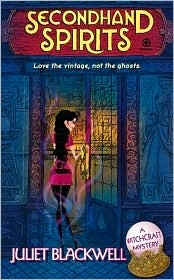 Juliet summed that part of the discussion up, saying women show strength in culture, family relationships, romantic relationships, physical, beauty and self-image, strong opinions and politics. Sophie said culture focuses on physical beauty. Her character, Stella, is twenty pounds overweight, ordinary-looking. She acknowledges that she's aging. Some agents were willing to take Sophie on as a client, but they wanted Stella to be more attractive. Fortunately, she found an agent comfortable with the character. Juliet summed that part of the discussion up, saying women show strength in culture, family relationships, romantic relationships, physical, beauty and self-image, strong opinions and politics. Sophie said culture focuses on physical beauty. Her character, Stella, is twenty pounds overweight, ordinary-looking. She acknowledges that she's aging. Some agents were willing to take Sophie on as a client, but they wanted Stella to be more attractive. Fortunately, she found an agent comfortable with the character.
Juliet said her books always have an element of romance. She said a woman can still be strong with an interest in romance. Blackwell said she's willing to argue that men's fiction also has romance, but in a different form. She said readers want well-rounded characters, and life had romantic relationships, connections with friends and community. For a witch, romance is an issue, because women are the most dangerous when sexual. In Europe, the traditional belief is that the more sexually attractive one is, the more dangerous. Isn't it the sexy ones who are likely to kill you?
The Malleus Maleficarum was a witch-hunter's handbook that covered sexual magic. Part of the handbook covered those who believed in witchcraft, and those who didn't believe. The more people believed, the more likely they were to turn in their neighbors. If a witch cast a spell sexually, someone would fall for them.
Blackwell's character, Lily Ivory, is a natural witch. She was born with powers. Lily is afraid of romance and sex because it might stir up something primal in her. Her feelings are part of the character arc in the series. How do you let yourself become vulnerable? In her previous series, Hailey Lind wrote of a character with two love interests. It reflects contradictory desires and interests, and provides tension.
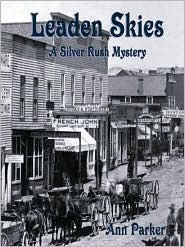
Ann Parker said she wanted to provide context for the world Inez Stannert lives
in, her woman in a man's world. The 1870 census said there were 300 saloons in Leadville. Three of them were run by women. So, she plays around with assumptions when people come to town, assumptions that a female saloon keeper might be easy. It's a boomtown in Leadville, and, like Inez, people are coming from all over to make new starts and shed their pasts. In the 19th century, everyone came to Leadville, investors, prospectors, women who followed the miners, as prostitutes, bakers, launderers, and miners themselves. Inez walks a knife's edge. She is a saloon keeper, but she's also spiritual. She attends church, but can handle herself in a brawl at the saloon. Her husband disappeared. He's been gone eight months. People often disappeared back then, just took off, or fell down a mine. Inez doesn't know if she's a married woman or not. In Silver Lies, she meets a man, and almost has to seduce him. How does the outside world view her? She wants to make her position public with the man she's seeing. At the same time, she wants to be perceived as a successful business woman.
According to Juliet, when writing women in mysteries, family becomes an issue. It's better to have characters without small children, because a mother wants to protect her children. Lily Ivory, Blackwell's heroine, was run out of a small west Texas town at seventeen. She's spent her life traveling, looking for a place to settle. The Haight-Ashbury district in San Francisco is safe for a witch. Lily runs a vintage clothing store. The book, Secondhand Spirits, is about motherhood. Lily was rejected by her mother, raised by an elderly woman who was a witch herself, so was comfortable with one. She provided Lily with a sense of family. The book also includes La
Llorona, a demon. Spanish-speaking cultures have variations of the legend about her, that she was a woman of humble means who had children with a man who left her. In Mexico, the story says he left her with the children, and she drowns the children in the river, and then herself. She wanders the riverbanks, calling for her children, and wailing. La Llorona means "the weeping woman", and she takes children if they're out at night. The stories of La Llorona are like the Bogeyman. In Secondhand Spirits, Lily deals with a mother of lost children, and comes to grips with her own fears.
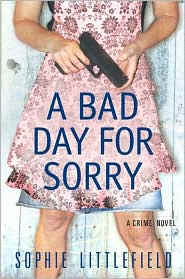 Sophie Littlefield brought up Robert
Crais' Elvis Cole. When she thinks of physical strength, she thinks of a bad ass such as Elvis. She said all of the male protagonists in crime novels are strong, and they never seem to work out. Littlefield's character, Stella Hardesty, tries to intimidate men into not being abusive. It's unrealistic for a fifty-year-old woman who hasn't worked out to have physical strength. So, Stella starts a fitness program. She looks for ways to handcuff men, so she buys herself bondage items for restraining men. Sophie said she knew her character needed to restrain them, and she was looking for the plastic handcuffs police use, but the Internet led her to bondage sites, and that's what happened with Stella. When creating women characters, physical strength must be considered. Julie pointed out that Stella has another weapon, a gun. Lily Ivory doesn't need a gun. And, Inez Stannert has guns, and her words. Sophie Littlefield brought up Robert
Crais' Elvis Cole. When she thinks of physical strength, she thinks of a bad ass such as Elvis. She said all of the male protagonists in crime novels are strong, and they never seem to work out. Littlefield's character, Stella Hardesty, tries to intimidate men into not being abusive. It's unrealistic for a fifty-year-old woman who hasn't worked out to have physical strength. So, Stella starts a fitness program. She looks for ways to handcuff men, so she buys herself bondage items for restraining men. Sophie said she knew her character needed to restrain them, and she was looking for the plastic handcuffs police use, but the Internet led her to bondage sites, and that's what happened with Stella. When creating women characters, physical strength must be considered. Julie pointed out that Stella has another weapon, a gun. Lily Ivory doesn't need a gun. And, Inez Stannert has guns, and her words.
According to Ann Parker, Inez is a woman with strong opinions, and she uses those against others' opinions. She said, if we think politics are bad now, the politics of 1880, as shown in Leaden Skies, included shady dealings. Grant was expected to run for a third term as president, but he didn't get the nomination. In 1876-77, there was a push for the woman's vote, but it didn't happen in Colorado. In 1880, there was a woman running a woman's newspaper, in Colorado, that was for woman's suffrage, and supported prostitutes. These are elements in Leaden Skies. Inez doesn't get suffrage. Characters were not interested in women's rights because they were making their own way.
The authors were asked about their writing schedule. Sophie said she had been a stay-at-home mom, and volunteered. Once her children were 12 and 14, she transferred her energies to writing. So, she gets up, writes, takes the kids to school, writes, picks the kids up, and she yells at them, and they yell at her, then she writes. Once she was published, the writing time was cut in half. It's important to be part of the book community. She works all the time, but, if she's not writing, she's working on promotion.
Juliet responded that it takes absolute determination to write constantly. She gets up at 4, and writes. She's a Peet's Coffee addict. It's a very strong coffee. She has no transition time. She just gets up at 4, and starts writing. Nobody talks to her at that time of morning. She's discovered nothing is open, so there are no distractions. She gets more done in those first two or three hours than later. She has a day job; she works for herself. She writes for several hours, gets her son up and off, works at her job, takes a nap at 2, and gets a second wind. She'll research later in the day, and does her
blogging, Tweeting, and correspondence with her editor. She's president of her local chapter of Sisters in Crime. She spends time reading other people's manuscripts (as they all do). She doesn't watch TV. It's hard to tell friends that work (writing) is what she loves to do, and she'd rather write than go out with a friend. When writers get together, they talk writing.
Ann told the audience she doesn't write at the pace of the others. She has a job, two kids and a spouse. She said it takes a while for her to write. She's always motivated to write the book, and is all excited to start, and then she loses steam. Then life hits, and then she'll get a call or contract from her publisher that nudges her. Once she has a deadline, she's propelled by panic. She blasts through to the end of the book. When readers told her Leaden Skies was fast paced at the end, she knew it was because she was rushing when she wrote it. She has a friend, Margaret Grace, another writer, who lives nearby, and invited her to her house to get away and have the chance to write. So, she went to Margaret's house, disappeared into the guestroom, and wrote big chunks of the book on weekends.
When asked if they ever run out of ideas, Sophie said she wrote eight books before her first one was published, and they were all kinds of genres, inspirational, horror, everything but science fiction. She said as you learn one thing, other things fall into place. Now she understands more as to the process of writing mysteries. She has mental muscle memory. But, she won't run out of ideas.
Juliet said she has to trim back ideas, rather than worrying about running out of ideas. She does research, and said she could write 100 pages on a topic. Stephen King called it "killing your little darlings", saying there are sections of your writing that you loved, but they just don't fit. If it doesn't fit, you have to kill it. They said they all have files for rejects, thinking they'll use them someday. Juliet said she has scrap paper with ideas on them. It's only the new author who doesn't know what to write.
Ann Parker, Juliet Blackwell, and Sophie Littlefield are definitely a deadly combination. It was a treat to bring them to the audience at the Velma Teague Library.
Ann Parker's website is www.annparker.net
Leaden Skies by Ann Parker. Poisoned Pen Press, ©2009. ISBN 9781590585771 (hardcover), 298p.
Juliet Blackwell's website is www.julietblackwell.net
Secondhand Spirits by Juliet Blackwell. Penguin Group (USA), ©2009. ISBN 9780451227454 (paperback), 336p.
Sophie Littlefield's website is www.sophielittlefield.com
A Bad Day for Sorry by Sophie Littlefield. St. Martin's Press, ©2009. ISBN 9780312559205 (hardcover), 288p.
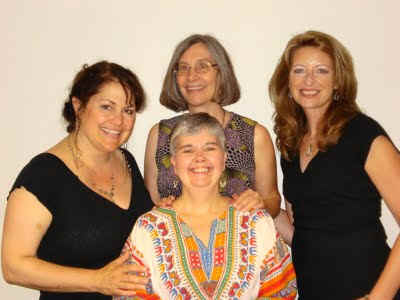
(left to right, Juliet Blackwell, Ann Parke, Sophie
Littlefield
and Lesa Holstine in the middle front! Photo by Cassandra
Sollano)
lholstine@yahoo.com
book blog: http://lesasbookcritiques.blogspot.com
Twitter @LesaHolstine
|
Julie & Julia by
Julie Powell
 I had no intention of reviewing Julie Powell's book since I thought
everyone knew about it with the movie, Julie & Julia coming
out with Meryl Streep. But, when a librarian friend told me she didn't
know there had been a book, I thought I'd at least give a short summary.
I had no intention of reviewing Julie Powell's book since I thought
everyone knew about it with the movie, Julie & Julia coming
out with Meryl Streep. But, when a librarian friend told me she didn't
know there had been a book, I thought I'd at least give a short summary.
Julie & Julia is subtitled "365 Days, 524 Recipes, 1
Tiny Apartment Kitchen: How One Girl Risked Her Marriage, Her Job, &
Her Sanity to Master the Art of Living". And, Julie Powell actually
did risk all of that. At twenty-nine she was married, living in a small
apartment in New York City, working a number of temp jobs that
eventually turned into a secretarial job for a government agency. She
had a group of odd friends, spent evenings drinking, worrying about
having a baby before it was too late. Frankly, Julie's life was a little
boring. On a trip home, she swiped her mother's copy of Julia Child's Mastering
the Art of French Cooking, the first step in a year-long project,
without even realizing it. When she tried a recipe from it, and her
husband, Eric, complimented her and suggested culinary school, she made
the mistake of saying maybe she'd just cook her way through the book.
And, then she started blogging about it.
Julie Powell is a disaster in this book. Her life, her apartment, her
friends, and her language in the book and blog are disastrous. Her
husband is the saving grace of the book, and of her life. With Eric's
encouragement, she plows her way through the year, and the recipes.
Somewhere along the way, she finds a cheering section on her blog, and
attracts the attention of the media. And, she learns a lesson about
looking for the joy in life.
To be honest, I read Julie & Julia because I want to see
the movie. I can't wait to see Meryl Streep as Julia Child. Reading the
book was like watching a NASCAR race, waiting for the giant crash. Even
though you know it's not right to watch the crash, you can't look away,
watching it over and over. It's a cliché that's been used often before,
nothing original in that comment. But, Julie Powell's life was a
disaster, and I agreed with some of her blog readers who tired of her
language. She did a wonderful job, though, with the imaginary
conversations between Paul and Julia Child. Julie & Julia
is the story of a woman who triumphed, completed a tough goal with the
help of her husband and friends. I wouldn't necessarily recommend it. I
hope I can recommend the movie.
Julie Powell's blog is www.juliepowell.blogspot.com
Julie and Julia: 365 Days, 524 Recipes, 1 Tiny Apartment Kitchen:
How One Girl Risked Her Marriage, Her Job, & Her Sanity to Master
the Art of Living by Julie Powell. Little, Brown & Company, ©2005.
ISBN 9780641852169 (hardcover), 320p.
lholstine@yahoo.com
book blog: http://lesasbookcritiques.blogspot.com
Twitter @LesaHolstine
"I think the health of our civilization, the depth of our awareness
about the underpinnings of our culture and our concern for the future can
all be tested by how well we support our libraries." - Carl Sagan |
|
An
Afternoon with J.A. Jance

By:
Lesa
Holstine Glendale Daily Planet Book Topics Editor
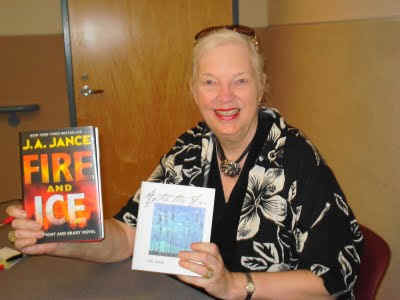
J. A. Jance - Photo by Lesa Holstine
The Foothills Branch Library in Glendale advertised the
program as "An Afternoon with J.A. Jance." It was a
delightful way for over 100 appreciative people to spend the
afternoon, with a gifted, funny, storyteller.
Before the program even started, Jance was asked who she likes
to read. She said she was reading Lee Child right now. She
also mentioned Michael Connelly and Alexander McCall-Smith.
Although she signed a number of books ahead of time, she was
promoting her new mystery, Fire and Ice, and her
autobiographical book of poetry, After the Fire. She
said if you read that book you would know who she is, and
where her characters came from.
J.A. Jance (Judith Ann) looked at the large audience, and said
people who live in New York don't understand that Phoenix
isn't a one-horse town. Just because she does a signing in
Scottsdale doesn't mean she shouldn't do them elsewhere. She
said she appreciates the Glendale Library allowing her to
appear there.
As she started singing, "Another opening, another
show...", she said she's two weeks into doing two or
three events a day, so we might have to give her a second to
connect. She said her website is at JAJance.com.
On the site, readers will find the covers of her books, a
schedule of all of her appearances. Her books are listed in
order, because some people are Mr. Monk, and have to go back
to the beginning and read everything. She also has a blog
there. Jance said she loves writing books, and she's paid well
to write them. But, she writes her blog because it's how
writers process events in life. Her first blog entry was
written three years ago when her son-in-law lost his nine year
battle with melanoma. But, he was a light-skinned redhead who
grew up in Tucson, had two terms in Iraq, and was Active Duty
in the Coast Guard just prior to the disease. That entry was
entitled, "Respect Must be Paid."
But, most of Jance's entries are lighthearted. She and her
husband, Bill, have played a lot of golf this year. It's a
miracle, because previous to golf, Jance's athletic endeavors
were limited to jumping to conclusions. But, after her
husband's knee problems were taken care of, they play golf
three times a week. His golf scores are better. But, hers
haven't improved.
She said she's used to writing around people, and can write
anywhere. She was one of seven kids who did homework at the
kitchen table. She usually sits in a chair in the living room
with her laptop, and writes her books, and answers her email.
She was sitting there one day, and heard a beep, beep, beep.
She thought the smoke detector battery was going, but heard it
again. Up above the bar, where her husband keeps his Rosenthal
Lotus stemware, she found a trapped sparrow. She shooed it out
of the bar to the living room. But, the living room has a high
ceiling, and for the next forty-five minutes, she and her
husband threw things at it, pillows, the dog's toys, noodles
from the pool, trying to get it. Finally, when it tired out,
and landed on an owl statue, she grabbed him, and took him
outside and let him loose. She said he probably went back and
told astonishing stories of people chasing him. But, her blog
entry that day said, "I Got a Birdie!"
Jance said she doesn't discuss politics or economics on her
blog. It's just a window an a writer's life. She's accessible
via her website and email. People write to her. When Damage
Control came out in paperback, there must have been a
shipment to North Carolina Target stores that had the pages
numbered wrong. Her readers didn't write to her publishers,
because their email addresses aren't accessible. They wrote to
her.
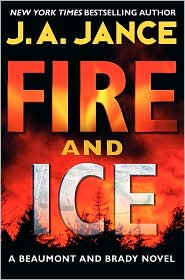 One
woman who read the latest book, Fire and Ice,
complained about the ending of the book, that she must have
been missing something. Jance went back, and said, no, that's
how it ends. The woman immediately wrote back and told her all
the aspects of the book that she felt had been left dangling.
Judy said she has a quota of 100,000 words, and she'd already
used up her quota. One
woman who read the latest book, Fire and Ice,
complained about the ending of the book, that she must have
been missing something. Jance went back, and said, no, that's
how it ends. The woman immediately wrote back and told her all
the aspects of the book that she felt had been left dangling.
Judy said she has a quota of 100,000 words, and she'd already
used up her quota.
According to Jance, when she writes a book, she writes them,
and, once finished, prints two copies, one for her husband,
and one for her agent. Once she gets them back, she sends the
corrected manuscript to New York, the place that thinks
Phoenix is small. They also think everything in Arizona is
close together. Then she gets the editorial letter, telling
her what needs to be changed to make it work. She sends that
back quickly, because that's when she gets a check. When it
comes back, it's been copy-edited. Jance's books are 400 pages
long. Think of your worst English teacher nightmare with red
letters, and magnify that by 400 times. Then more people read
it, and it goes into galleys. Once the galleys go out, you
can't make a lot of changes. After reading the galleys for Damage
Control, there was no resolution to one problem. Fire and
Ice came from needing to resolve it.
Last week, Jance did an interview with a young man from a
newspaper. She said she can tell when someone has never read
murder mysteries and disapproves of them, one of those on a
murder mysteries aren't literature kick. He said, "Isn't
combining two characters in one book a gimmick?" She
said, "No, it's a sales tool." He asked if there was
pressure to get her male and female characters in bed, and she
said, no. She said she hasn't read the article, but it was a
small paper.
Fire and Ice is J.A. Jance's 39th published book, and
it appears on the New York Times Bestsellers List at
#8 on Sunday. In 1964, she wasn't allowed in the the creative
writing program at the University of Arizona because she was a
girl. She was married to a man who was allowed in, but all he
did was imitate Faulkner and Hemingway by drinking. But, he
said there would only be one writer in the family, and he was
it.
 Hour of the Hunter is the story of a teacher who
couldn't get into a writing program, but her husband did. Her
husband is dead at the beginning of the book, and the crazed
killer is a former professor in the creative writing program.
This is Jance's favorite story because of the storyline.
Hour of the Hunter is the story of a teacher who
couldn't get into a writing program, but her husband did. Her
husband is dead at the beginning of the book, and the crazed
killer is a former professor in the creative writing program.
This is Jance's favorite story because of the storyline.
Jance said she started to write books in the middle of March
1982. She was a single parent with two little kids, no child
support, and a job selling life insurance. Her fortieth and
forty-first books are written, and due to come out. Her first
book was 1200 pages, but never published. It should have
counted as three. It was the size of The Oldest Living
Confederate Widow Tells All, and then some.
Jance told us she uses real places in her books. She has spent
half her life in Arizona, and half in Washington state. It's
easier to remember real places, and it appeals to readers. The
distances are real, and the books are plausible.
She uses her own life as background in the books. For
instance, Ali Reynolds had a scholarship to attend NAU in
journalism. In 1962, Jance had a scholarship, and was the
first of seven children to go to college. She wouldn't have
been standing at the library today without that scholarship.
Ali has a loyalty to the people who gave her the scholarship,
and that's how she gets involved. One reader wrote and
complained about Ali and the scholarship business, that it was
all filler. Jance replied that everything in books is filler;
chapters are empty until the words get put there.
Then there was the email from a man in Tucson who said he
liked the Joanna Brady books, but wouldn't read another until
she got rid of the bitch who is her mother. That woman is
patterned on Judy's own mother, who loved the character. She
said she was the first woman in books who knows how the world
really works. Jance told the man we have to deal with the
relatives we have, rather than the ones we wish we had.
Here's another story of background to the books. Judy's second
husband, Bill,the nice one, (He says her first husband was so
bad, it made his life beautiful.) is a Formula One fan. So,
she said, for his birthday, why don't we go to Monaco for the
race at the end of May. He said, no. That made her mad. So,
she called everyone, the children and grandchildren, and said,
for Bill's birthday, I'm going to charter a jet, and we're all
going to Disneyland. Then, she told him, this is what we're
doing for your birthday. He could tell her no, but not the
kids and grandkids. It was dreadful. Bill had been concealing
how bad his knees were. He was in pain, and could go no
further than 50 yards without having to sit down, or lean on
something. So, her daughter had a two-year-old toddler with
her, and she needed help. And, there was Bill, needing her
help. He had both knees replaced last June, and went on tour
with her last July. He said he wished he'd done it sooner.
So, in Fire and Ice, when J.P. Beaumont has his kids
and grandkids at Disneyland, you know where that background
came from. Jance has been writing about J.P. Beaumont since
1982. She enjoys writing about him because she doesn't write
only about him; she writes about other characters. J.P. has an
inner ear problem. Even the sight of a boat gives him sea
sickness. So, when he goes to Disneyland and rides the
Teacups, it's above and beyond.
J.A. Jance said she writes only one book at a time, but she's
dealing with three at a time, creating one, editing one, and
touring for a third. Before a book comes out, her daughter
reads it, and talks about it with her so she can remember
what's in the book. It was a little difficult this time,
because with a daughter at 3 1/2, who is a "fire hose of
conversation", the only time to talk was when her
daughter was in the car on her way to or from work. Her
daughter didn't like one of the stories used as background.
When Jance's son-in-law was sick, he watched a lot of Home
& Garden TV. He knew he was dying, and wanted to make sure
the little house was in good shape, so he was doing a
kitchen/bathroom remodel when he was one step from hospice.
But, he did get to see it before he died. He also wanted a
working washer/dryer for the baby. So, they bought a
top-of-the-line, front-loading, turquoise Kenmore. For two
years it worked good. Then, they called the repairman, who
must be much busier than the Maytag repairman. When he finally
got there, and too it apart, he held up a bunch of baby socks,
and said, these are supposed to go in a knit laundry bag, not
washed alone. So, when Butch and Joanne's front-loading washer
has problems, readers can now diagnose the problem - baby
socks.
Jance said she used to be able to give her books titles,
before she became a "Big Thing", such as debuting a
book at #8 on the New York Times list. She's just a
girl from Bisbee, Arizona. In publishing, the NYTimes
is top of the heap. But, last night, at Changing Hands
Bookstore, she met a woman who said she was reading the books
to her mother, who has cancer and is undergoing chemo. The
books mean a lot to them. Judy said talking to readers is the
only way to find that out, the things that really count.
Now that she's a "Big Deal", she has a title
committee, her editor and marketing staff. Since she has two
publishers, she has two title committees, which is why she has
two books in a row with "Fire" in the title. The
funny thing is, the two editors who insisted on the titles are
now gone. She would normally tell us the name of her next one,
but not with the next one with the same word in the title.
Instead, she'll just say the new Ali Reynolds book goes on
sale on Dec. 2.
Queen of the Night is Jance's next thriller. The
Tohono O'odham Tribe has a legend about the Night Blooming
Cereus. It's the story of an old grandmother who retrieves her
grandson to take him home to the desert people. She tires, but
for her efforts, she's turned into a plant. And for one night
a year, it's the most beautiful plant of the year, the Night
Blooming Cereus. It grows on the Deerhorn cactus. The cactus
has buds in the spring, and they bloom once a year. But, no
one knows exactly when it will bloom, sometime in the middle
of May to the middle of June. People can only predict within
48 hours when it will happen. At 6 PM, the buds open, all over
the Sonoran Desert. By midnight, the flowers are as big as
dinner plates, white with tinges of yellow. And, the scent is
so beautiful it's called Ghost Scent. Only one moth knows when
it will bloom, and it shows up to pollinate the flower. By 6
AM, it's gone.
Most of the time, Jance's books aren't based on real cases.
Real people are affected by crime, and they date their lives
before and after the crime. Queen of the Night deals with the
legend of the old white-haired woman who brought back
children. There's a whole group of brought back children in
the book.
When Jance ended, and said she'd take questions, she warned
the audience that she has hearing problems, and had dropped
her hearing aid under a car recently, and hadn't put it back
yet.
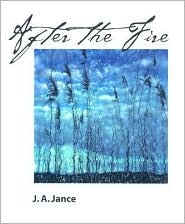 She
was asked about not getting into the creative writing program
at University of Arizona. She said the creative writing
teacher, and her ex-husband were both dead by the time her
first book came out. Her first husband died at 42 of chronic
alcoholism the year after she divorced him. For a long time,
she was really angry about not getting into the program. It's
ironic that the publisher of her poetry book, After the
Fire, is the University of Arizona. She received an
honorary Doctorate of Humane Letters a few years ago, but they
never let her do the commencement speech. She
was asked about not getting into the creative writing program
at University of Arizona. She said the creative writing
teacher, and her ex-husband were both dead by the time her
first book came out. Her first husband died at 42 of chronic
alcoholism the year after she divorced him. For a long time,
she was really angry about not getting into the program. It's
ironic that the publisher of her poetry book, After the
Fire, is the University of Arizona. She received an
honorary Doctorate of Humane Letters a few years ago, but they
never let her do the commencement speech.
Judy said, if she had managed to fight her way into that
creative writing class, with a teacher that didn't want her
there, he might have drummed that writing spark out of her.
Instead, she stayed close to her storytelling roots.
Tony Hillerman once told her, "Literary fiction is where
not much happens to people you don't like very much."
Why J. A. Jance? Her actual name is Judith Ann Jance, but, in
1983, Avon told her nobody would read police procedurals
written by a woman. Her first six books had no biography or
picture. The rumor in Seattle was that a retired Seattle cop
wrote the books.
When asked if she keeps a chart of characters, Jance said she
counted on her memory for a while. She now keeps a character
file, but she didn't have one for the first couple Joanne
Brady books. Desert Heat went all through the
editorial process, and it took two readers to tell her she
brought back a character she had killed in a previous book.
She said it took her a few books to backtrack and explain
that.
The final question was about what J. A. Jance reads. She said
she reads murder mysteries, but she would tell us about three
books she thinks are important.
The Madonnas of Leningrad - WWII, and the Allies
headed to Leningrad. Museum workers lived in the museums. The
paintings were gone, but they lived there, and even ate
library paste to survive. The docents would look at empty
frames, and describe what was in each picture. One of the
docents was a woman who was responsible for the Madonnas.
Mr. Pip - There was a war of ethnic cleansing in a
little island in the South Pacific. It was a war that really
happened, but the world didn't really care because it was
blacks killing blacks. The Anglos all left, except for one
little man. He stayed on, and when the war was over, and the
people realized there were no teachers for the school, he said
he'd teach. He took over the job, and invited experts in as
guest speakers, such as a fisherman to teach the children how
to fish, and which fish were good. And, he would read to the
kids from Great Expectations. And, when he finished,
he would start over. So, there was the teacher reading to the
kids about Dickens' England. When the revolutionaries found
out, they took the book. So, the teacher and kids tried to
reconstruct the story.
Last year, when Jance spoke at Changing Hands Bookstore, they
offered her a book. She was too tired to say Fried Green
Tomatoes at the Whistle Stop Cafe was her favorite book,
so they gave her one she hadn't heard of, The Guernsey
Literary and Potato Peel Pie Society. It told how the
island of Guernsey was abandoned by the British in World War
II, and taken over by the Germans. The people formed a faux
literary society to get around the German curfews.
All three of the books deal with how art sustains us in hard
times. Jance said, perhaps that's why her book sales are up
20%. People need a place to go that doesn't deal with politics
or the economy. So, it's no surprise.
Beguile the time is the ancient charge of the storyteller. J.
A. Jance is honored to do that.
J. A. Jance's website is www.JAJance.com.
Fire and Ice by J. A. Jance. HarperCollins, ©2009. ISBN
9780061239229 (hardcover), 352p.
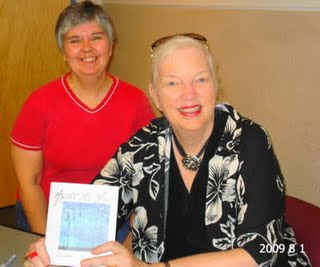
Lesa Holstine and J. A. Jance Photo by Sarah Herlache
lholstine@yahoo.com
book blog: http://lesasbookcritiques.blogspot.com
Twitter @LesaHolstine
VIDEO TO BE POSTED LATER SAT
EVENING
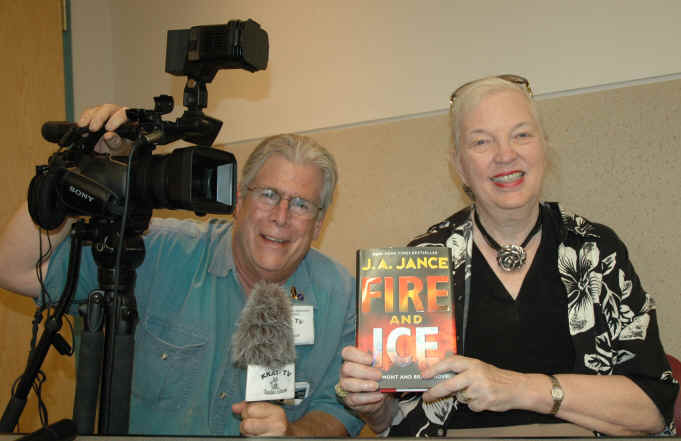
Ed Sharpe
- Publisher Glendale Daily Planet / KKAT-IPTV and World
Renowned
Mystery Author J.A. Jance at the Foothills Branch of the
Glendale Public Library |
Tim Myers Appears for
Authors @ The Teague

By:
Lesa
Holstine Glendale Daily Planet Book Topics Editor

( 3 PM on
Wednesday, Aug. 28 ) Tim Myers, on tour
to promote his new mystery, A Slice of Murder, written under
the name of Chris Cavender for Kensington Publishing, appeared at the
Velma Teague Library. His appearance opened with a short biographical
sketch.
Tim Myers is an Agatha Award nominated author who has published nineteen
novels and has appeared on the Independent Mystery Booksellers
Association national bestseller’s list ten times, ranking as high as
#2. Under the name Tim Myers, he writes the Lighthouse Inn mysteries,
the Candlemaking mysteries, and the Soapmaking mysteries, as Elizabeth
Bright the Cardmaking mysteries, and as Melissa Glazer the Clay and
Crime mysteries. One of Tim’s books was chosen by The Mystery Guild as
an Editor’s Choice, and was also named one of their Ten Most Wanted
books. There have been ten large print editions of Myers’ books as
well. In addition, he has published over 80 mystery short stories, and
has been nominated for three Derringer awards for excellence in short
mystery fiction. His short fiction has appeared in the anthologies The
Haunted Hour, Mystery Writers of America’s A Hot and Sultry
Night for Crime, and Murder Most Crafty. He is currently
writing the pizza shop mysteries for Kensington as Chris Cavender, and
has eight more books under contract with Kensington, St. Martin’s, and
Penguin/Berkley Prime Crime.
Tim's presentation was quite funny at times. He said he got started as a
writer because Dr. Seuss was driving him crazy. He never intended to
become a stay-at-home dad, but, eighteen years ago, when his daughter
was born, and he held her in his arms, he told his wife he wanted to be
a stay-at-home dad. But, at that time in the South (North Carolina), it
was unusual for a man to do that. He became alienated from all the
groups he had belonged to, and most mothers didn't welcome him.
Intellectually, it isn't very stimulating staying home to take care of a
baby. So he decided to try to write. And, it was logical for him to try
mysteries because he loves to read mysteries. At the age of nine, he
discovered Agatha Christie. He surprised his father when he asked for a
complete collection of Christie at that age. His father wasn't a mystery
reader, and probably only read one of Myers' books before he died.
Myers said he tried to write, and his first efforts were derivative.
But, one of his early short stories was accepted by Alfred Hitchcock
Mystery Magazine for its Department of First Stories. So, he
thought he had it made. But, his next 123 submissions were rejected.
Some stories were rejected multiple times. Tim told his wife when he hit
100 rejections, he'd be done. Then, when he passed 100, he told her he'd
quit at 200 rejections.
Tim worked on short stories while his daughter napped. He and his wife
had agreed he would go back to work when their daughter entered
kindergarten. But, at that point, he told her he had the bug, and he
would like to write. So, she told him to give it a year, and try to
write a book. He wrote a couple that weren't any good. Every fall they
would have "The Conversation" about what Tim would do for the
rest of his life. His wife never lost faith in him.
 One day, Myers thought about the fact that he loved lighthouses and
mountains, so maybe he'd try to write a story about a lighthouse in the
mountains. He drove to the Outer Banks, and took 200 pictures. He
mentioned that North Carolina should really be two states because the
Scots settled the western part of the state, and the English settled the
east. Myers' family, who were Scots, were there for many generations. In
writing the story, he wanted to put a lighthouse in the mountains, and
had to come up with a reason for it. So, his lead character's
great-great-grandfather had built the lighthouse for his wife, and she
died in childbirth three days before the lighthouse was finished. Tim's
wife read the book, and was upset when she reached that point, and
hasn't read another one of his books.
One day, Myers thought about the fact that he loved lighthouses and
mountains, so maybe he'd try to write a story about a lighthouse in the
mountains. He drove to the Outer Banks, and took 200 pictures. He
mentioned that North Carolina should really be two states because the
Scots settled the western part of the state, and the English settled the
east. Myers' family, who were Scots, were there for many generations. In
writing the story, he wanted to put a lighthouse in the mountains, and
had to come up with a reason for it. So, his lead character's
great-great-grandfather had built the lighthouse for his wife, and she
died in childbirth three days before the lighthouse was finished. Tim's
wife read the book, and was upset when she reached that point, and
hasn't read another one of his books.
Myers said, unlike his previous attempts, when he wrote this book,
everything made sense. His characters started to behave logically. He
was proud of the book. He sent it to his agent. Two weeks later, she
called, and said she loved the book, but he had to take the lighthouse
out of the mountains, saying he couldn't do that, and he would have to
make a change. He said, you're right. I do have to make a change. If you
don't understand the story, you're fired. So, he sent it to another
agent, who accepted it. Myers wrote five of the lighthouse mysteries.
Craft mysteries were just starting to be published, and his agent asked
if he could do any crafts. He said, sure, he did crafts. He was a
stay-at-home dad. So, when asked if he could do candlemaking, he said
sure. He admitted to the us that he never had, but he writes fiction, so
people shouldn't believe everything he says. Myers went to a craft store
and bought four kits and six books about candlemaking, and stayed up
until 3 AM. He said he wasn't very good at it, so he couldn't pretend to
be a professional. Tim tried to decide why someone who making candles
who wasn't proficient, and realized if they inherited a business because
a relative died it would work. Mystery = someone dies, so Harrison Black
inherited At Wick's End candle shop from his great aunt. Tim killed her
early in the book, At Wick's End.
Someone at NAL contacted Tim's agent, and said she loved Tim Myers'
books, and did the agent know anyone who wrote like him for a crafting
mystery. Tim said he's always made cards with his daughter, and he
suggested card-making. But, the publisher wanted a female author because
the audience for crafting mysteries tend to be female. Myers said he
knows that 90% of his readers are female, and he said he could do it.
The publisher was doubtful, but gave him a chance saying she wanted
fifteen pages, written in first person, in a female voice. She didn't
think he could do it. He came up with Jennifer Shane as the character, a
spunky, young woman, not afraid to make mistakes. He likes Jennifer, and
the publisher liked the synopsis, so wanted thirty to forty more pages.
Tim said he heard Jennifer's voice in his head. They liked the material
at NAL, but wanted him to use a female pen name. He hesitated since he's
always said, if he gets arrested, he wants his name spelled right,
Myers, with only one e. He likes to go into bookstores and see his name
spelled right, and have former girlfriends from high school see his name
on book covers. But, he decided his name on the cover wasn't as import
as getting the books published. Those books were published under the
name Elizabeth Bright. The Elizabeth was after his late friend,
Elizabeth Daniels Squire. And, he went to a bookstore, trying to pick a
last name. Tim said there was nothing between Lilian Jackson Braun and
Rita Mae Brown, so he came up with Bright. He thought that was a good
place to be in the alphabet. His degree is in marketing, and he said his
business background has been invaluable in his writing career.
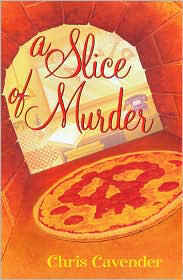 According to
Myers, in publishing cozy mysteries, almost every time an author loses
an editor, the next editor dumps him. He said his first three series had
characters who were single, without many family connections or love
interests. So, for his next series, he wanted to give his character a
big family. Tim's wife is from a large family, so he observes their
holidays and times together. Ben Perkins is the oldest of six who work
in a soap factory. He's the troubleshooter of the family in books with
titles such as Dead Men Don't Lye and A Pour Way to Die.
But the editor of his soapmaking series left, and the new editor wanted
a new series written under a new name. Myers, who had been in Vermont
for a few hours, set a pottery series in that state, picked the name
Melissa Glazer, and named his character Carolyn after author Carolyn
Hart. According to
Myers, in publishing cozy mysteries, almost every time an author loses
an editor, the next editor dumps him. He said his first three series had
characters who were single, without many family connections or love
interests. So, for his next series, he wanted to give his character a
big family. Tim's wife is from a large family, so he observes their
holidays and times together. Ben Perkins is the oldest of six who work
in a soap factory. He's the troubleshooter of the family in books with
titles such as Dead Men Don't Lye and A Pour Way to Die.
But the editor of his soapmaking series left, and the new editor wanted
a new series written under a new name. Myers, who had been in Vermont
for a few hours, set a pottery series in that state, picked the name
Melissa Glazer, and named his character Carolyn after author Carolyn
Hart.
Tim said he had done lots of craft mysteries, and wanted to write a food
one. He watched the Food Network, and decided a pizza place would
be great. A Slice of Murder, written as Chris Cavender,
features Eleanor Swift, a widow who is fiercely independent. Tim, who
has been married for twenty-eight years, and dated his wife for seven
years before that, gave Eleanor that type of relationship. In contrast,
he gave her a sister, Maddy, who is often-married, and often divorced.
She's spunky, has tried all of the crafts that Myers' wrote about, and
keeps Eleanor from taking herself seriously.
All of Myers' books are set in small towns based on towns near where he
lives in North Carolina. He goes to the towns, takes pictures, draws
maps, and moves shops and buildings around. In one town, he saw a group
of shops, and one was painted a bright blue. He said that had to be the
pizza shop, so he put the pizzeria in a blue building, and called it A
Slice of Delight because that's what pizza is to him, a slice of
delight.
Tim said he has a contract with St. Martin's, and all he can say is that
it will be a food-related mystery that comes out sometime in the next
fifty years. Then Berkley asked him to do a series. According to Myers,
it's lots of work to do multiple series, so he wasn't sure he wanted to
do it. But, Berkley bought his next idea, based on the first draft. So,
he'll be doing another series for them as well.
Some reviewers have commented about the many levels in some of his
books, including A Slice of Murder. Tim finds that funny
because he said he makes up the stories as he goes along. He wants to
see what
|
Garry
Disher's Appearance for Authors @ The Teague

By:
Lesa
Holstine Glendale Daily Planet Book Topics Editor
I was very fortunate to have the chance to act as author escort for
Australian author Garry Disher today, picking him up at his hotel,
taking him for his appearance at the Velma Teague Library, and then
taking him back. We had the chance to talk a little, so, although most
of this summary will be from his library appearance, a few of the
comments may be from our conversation.
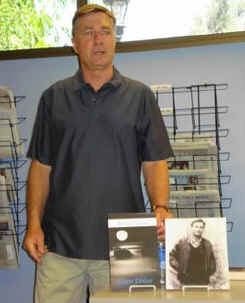 Garry Disher is the Ned Kelly Award winning author for his crime novel, Chain
of Evidence. He's now on tour for the fifth Challis/Destry mystery,
Blood Moon.
Garry Disher is the Ned Kelly Award winning author for his crime novel, Chain
of Evidence. He's now on tour for the fifth Challis/Destry mystery,
Blood Moon.
Before he could even start the program, an audience member asked about
the spelling of his name, Garry. He said his family was originally from
Scotland, so his name comes from places such as Glengarry. He lives in
Australia, about an hour and a half from Melbourne.
Garry started the program by telling us that his love of books came from
his childhood. His parents were readers, and there were always books in
the house. He said you have to be a reader before becoming a writer. He
taught Creative Writing, and he said invariably 30%-40% of his students
were not readers.
But, his family lived in rural Australia, and they received books from
the Country Lending Library, a train that came from Adelaide once a
month. They couldn't select titles, but they could ask for types of
books, so his father received books about WWII, his mother received
romances, and he received children's books. He learned to create stories
from his father, who told his own stories every night, ones he made up.
His father also taught him pacing because he never finished the stories.
He would say, I'll finish tomorrow night, and he never would. His
stories were always cliffhangers.
So, Disher wanted to be a writer since childhood. He wrote short stories
in college, and then went to London with friends. He traveled Europe,
worked on a kibbutz in Israel, and then went on his own to South Africa,
where he stayed for two months because he ran out of money and couldn't
get home.
Back in Australia, he said he took an Australia history degree. Since he
writes literary novels as well as crime novels, that degree helped him
with the research experience. He's written books about Australia's
Depression, and the war years. He had some stories accepted for
publication, which led to a Creative Writing scholarship to Stanford in
California. He was in his mid-twenties, in a very small program with
others, including a woman in her 60s who was working on a story that
went on to win the National Book Award. it was a small class, an intense
workshop.
After Disher had a book of short stories published, he taught 10 week
creative writing workshops. Then he taught creative writing at Technical
and Further Education (TAFE) institutes. He taught part-time, and wrote
part-time for ten years. Finally he quit to write full time. Disher said
his income immediately plummeted. But, he is one of the Australian
authors who now makes a living writing. However, in the early years, in
order to survive he worked odd jobs such as driving a taxi, and writing
book reviews. The average income for an Australian author is less than
$10,000 a year.
Garry said he's written about 45 books, of various types, mostly
fiction. He has written books for children and teens, some of them
published in the U.S., including The Bamboo Flute and The
Divine Wind. It was just by chance that he started writing
children's books. When he was at Stanford, he wrote a final story called
The Bamboo Flute. Disher's father left school at 12 in the
1930s in the Great Depression. He said he had a teacher that thrashed
him with a cane. His only happy memories of school were of a bamboo
flute that he made himself, and learned to play. He could play by ear,
until he lost the tips of his fingers to a harvesting machine. Garry
said he always felt so sad for this father, so he wanted to write the
story for him. When he wrote the adult version, he wasn't finished with
the story or character, so he redid it for children. He usually writes
for teens.
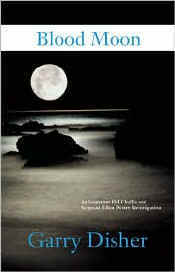 Disher has also written literary novels, but they were not published in
the U.S. He has two series of crime thrillers. The first books featured
a bank robber, Wyatt. Those six books are scarce, and out-of-print. It's
difficult to get copies of those because there is an underground
readership for the Wyatt books. According to Disher, all fiction is
driven by questions. For the Wyatt books, the question is, "Will he
get away with it?" This series was inspired by Donald Westlake, who
wrote about Parker, a bank robber, under the name of Richard Stark.
Disher wanted to write about crime from the other side. The seventh book
in that series will be out next year, after a gap of 10 years. It's at
the editor's right now, with a tentative title of Dirty Old Town.
Disher has also written literary novels, but they were not published in
the U.S. He has two series of crime thrillers. The first books featured
a bank robber, Wyatt. Those six books are scarce, and out-of-print. It's
difficult to get copies of those because there is an underground
readership for the Wyatt books. According to Disher, all fiction is
driven by questions. For the Wyatt books, the question is, "Will he
get away with it?" This series was inspired by Donald Westlake, who
wrote about Parker, a bank robber, under the name of Richard Stark.
Disher wanted to write about crime from the other side. The seventh book
in that series will be out next year, after a gap of 10 years. It's at
the editor's right now, with a tentative title of Dirty Old Town.
Blood Moon is the fifth in the Challis and Destry series.
He showed us the Australian copy. In Australia, the books come out in
trade paperback. They don't have a tradition of hardcover there, because
books are so expensive.
John Harvey's Inspector Resnick books inspired Disher to write this
series. They are police procedurals. Disher said he likes the regional
setting rather than major metropolitan cities. Cities are anonymous.
Harvey's books take place in Nottingham, England. Disher's take place on
the Peninsula, an area defined by the coastline. It's near Melbourne,
with a number of pretty little towns. Disher said setting is vital to
fiction, particularly crime novels. Although Disher uses the Mornington
Peninsula as the setting, he changes the town of Hastings to the
fictional town of Waterloo, because he doesn't want residents to
criticize the books if he changes locations or adds buildings to the
town.
The series has a central character, Detective Inspector Hal Challis, but
also a staff of characters. There are about thirty in the regional
office. Disher said he likes a cast of characters, like Resnick's. There
is always a central mystery in the books, but the police are
investigating other mysteries as well.
Disher said it's important to provide a sense of place and community.
The books include the public and private lives of the characters,
including workplace tension. It provides the mood of the place. Disher
said he's seen changes after seventeen years living on the Peninsula.
The towns have doubled in size. Young families moved in, but, now, with
the economy, many of them can't afford their houses. There are not
enough schools for primary-age children. All of this causes strain, but,
especially on the police. They feel it with the staff shortage. It may
take a long time to respond to a call because there are only two or
three cars on the road. At the same time, there are some of the richest
homes in Australia in the area. There are extremes of rich and poor
there.
But, Disher said the story comes first. He wants them to be good
mysteries. He writes different sorts of mysteries. Chain of Evidence,
the book that won the Ned Kelly Award for Best Novel, features people
that disappeared. According to Disher, his books are not necessarily
whodunnits, but why done it. He finds that more interesting.
Disher talked about the progression of mysteries, saying thirty to fifty
years ago, in the American tradition, a private eye had a bottle of
scotch in his desk drawer, and a woman with big breasts would come in
and ask for help. But, the reader never met the private eye's family.
They had no sense of his community.
But, when Sara Paretsky and Sue Grafton came along, the major thrust of
women's mysteries dealt with more personal issues. Characters who had to
deal with ailing relatives, aging parents, even what was in the
refrigerator to eat, were more real to us. We could relate to these
characters. They weren't super heroes. We felt closer to them, although
they would act when we didn't.
Garry was asked if his characters had major flaws, and he said sometimes
it's not a flaw, but something makes him a sympathetic character. He
then gave Inspector Challis' background. In the early novels, he worked
in a different region, a rural one. One of the books is based on an
actual case. Challis' wife had an affair with another policeman, and
they conspired to kill him. They were caught, but this situation is the
base to show readers something about Challis. He questions himself.
Where did I go wrong? Why did she fall out of love with me? He doesn't
hate or condemn her. He lets her call him from prison, but he doesn't
love her anymore. This shows a side of Challis.
There is unresolved sexual tension between Challis and Sergeant Ellen
Destry from the beginning of the series. Destry has a shoplifting habit.
She hates herself for doing it, and feels guilty. Then, she'll return
the item. But, in other ways, she's honest.
Scobie is a constable whose wife was sacked by email, and she didn't
take it well. In Blood Moon, she is attracted to a
fundamentalist, crackpot church.
Disher said, yes, he did get sick of writing the Wyatt series for a
while. He still wants to write general fiction and books for children.
When asked how he makes the switch from children's books to crime
novels, he said most of those books are for teenagers. Themes can be
darker for teens. But, the writing should be treated just as seriously.
Disher said some of the best fiction in Australia and the United States
is fiction for Young Adults.
When he read from Blood Moon, he commented that some of his
storylines are based on actual cases or newspaper stories. The scene he
read about he destruction of a house was based on such a case in
Australia.
Garry said he tries to appeal to the reader's senses. Early on, he
offered a story to be workshopped at Stanford. It was an internal story
about a woman who sees an old boyfriend in a bar. But, afterward, one of
the women told him, "Your writing suffers from sensory
deprivation." He asked her what she meant, and she said, she can't
see the character, or smell the smoke in the bar, or taste the pretzels.
The story is all in your head, but I don't experience it. This lesson
was one of the best he learned.
When asked about similarities between Australia and the U.S., he said
there are more similarities than differences. But, he noticed three
differences. He reads mostly American crime novels, and there is a
multitude of police forces, and they don't work together. There are
federal police, state police, sheriffs, local police. In Australia there
are only two types, federal, and each state has there own, and that's
it. The District Attorney is not elected, but appointed by the state.
And, third, there is little gun ownership. Even farmers and ranchers
need special permission to own guns. There was a terrible mass killing
at one time in Australia, and, in response, all guns were banned. There
are some, mostly illegal, but not to the extent in the United States. He
wondered how does it affect crime in the U.S. Would it affect the crime
rate if there were not so many guns?
Disher said he learned something from Ed McBain's 87th Precinct books.
McBain's characters didn't grow older. Garry said in the first Wyatt
book, he mentioned he was a Vietnam vet. By the seventh book, he doesn't
talk about that, because if he had continued to age him, he would be in
his 60s, not exactly the right age for a bank robber.
Disher ended his presentation by saying he does have an idea for another
series. His talk was fascinating about writing and his books.
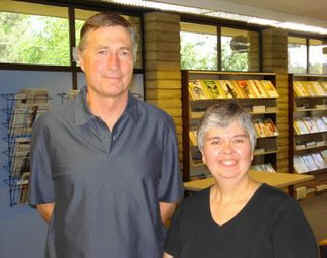
Garry Disher is the Ned
Kelly Award winning author
with Lesa
Holstine Glendale Daily Planet Book Topics Editor
Photo by Bette Sharpe
lholstine@yahoo.com
Book
Topics Archives Here on Glendale Daily Planet
book blog: http://lesasbookcritiques.blogspot.com
Twitter @LesaHolstine
"Libraries are the best value you can get for your tax
dollars." - Lorna Barrett, Bookmarked for Death
|
Blood Moon by Garry
Disher
Australian author, Garry Disher, will appear at
the Velma Teague Library on Tuesday, May 19 at 2 p.m. as part of the
Authors @ The Teague series.
 Garry Disher's Blood Moon is worth reading for a number of
reasons. How many crime novels have you read lately set in Australia?
How many of them have a well-developed cast of police in a modern police
procedural? How many of those books are written by the winner of the Ned
Kelly Award for Best Australian Crime Novel?
Garry Disher's Blood Moon is worth reading for a number of
reasons. How many crime novels have you read lately set in Australia?
How many of them have a well-developed cast of police in a modern police
procedural? How many of those books are written by the winner of the Ned
Kelly Award for Best Australian Crime Novel?
Even if you haven't read the four novels that preceded Blood Moon in
the series, you can pick the storyline up easily. It doesn't take long
to like Detective Inspector Hal Challis. He and Sergeant Ellen Destry
just started living together. Since he's her boss, they are not yet sure
what problems they'll face.
But, for the police department in Waterloo, on the Peninsula, southeast
of Melbourne, the first problem they face is Schoolies Week. It's
similar to our spring break, but students who just finished their
twelfth year exams take off to the coastal communities to party. As
students converge, the force tries to help with all of the typical
crimes associated with students and townspeople, including date rape.
At the same time, they have a case that catches the attention of the
press and politicians when the chaplain at a prestigious school is found
beaten, in a coma, on his front lawn. The case of a missing woman seems
minor, but the small force may find themselves with murder on their
hands.
As in all good police procedures, the police deal with a number of
crimes at the same time. As Disher tells of those stories, he skillfully
develops the characters of different officers. And, he does an excellent
job revealing Hal Challis' past and his character, in short glimpses.
Challis didn't like attention. "He liked to slip through life
unnoticed." And, his thoughts about his work are interesting.
"The job promised continued human misery and droning days."
Then there's the comment about "Paperwork that swamped his days and
gave him a permanent low-level sense of anxiety and aggravation."
But, maybe this is the most insightful comment that Hal was a private
man whose "Daily work demanded that he uncover people's
secrets."
Blood Moon is all about secrets. It's about Ellen Destry's
secrets that might shock the reader. Other officers have secrets that
are revealed in the course of the book. Then there are all the little
secrets in people's lives that lead to violence. It's a powerful book
about secrets that come to light under Australia's, and Garry Disher's, Blood
Moon.
Blood Moon by Garry Disher. Soho Press, ©2009. ISBN 9781569475638
(hardcover), 386p.
lholstine@yahoo.com
book blog: http://lesasbookcritiques.blogspot.com
Twitter @LesaHolstine
"Libraries are the best value you can get for your tax
dollars." - Lorna Barrett, Bookmarked for Death
|
Annette Mahon for
Authors@The Teague

It was a pleasure to host Annette Mahon for Authors @ The Teague. As an
author, she spoke about her romances and mysteries. As a native of Hilo,
Hawaii, she spoke of love for the island, although she now lives in
Arizona. And, as a quilter, who uses her quilts in her books, she
brought gorgeous quilts to discuss in conjunction with her books.
The audience was very impressed with Annette's Phantom of the Opera
quilt. It's autographed by the cast members who appeared here at Gammage
Auditorium, and the actor who signed as the Phantom, was playing the
Phantom when Mahon saw it in NYC.

Mahon said she always brings quilts along to her talks because she is
"all about them". Two recent romances, Dolphin Dreams,
and Holiday Dreams, are the first two in "The Matchmaker
Quilt Trilogy." She said she's way behind in the third book due to
personal reasons. But, this is a series about three sisters that their
mother called her gems. She named them Jade, Momi (Hawaiian for Pearl),
and Ruby. An old Hawaiian quilt has been handed down in the family,
through the female line. This is the first time the family has had three
sisters in the family. When the first girl gets the quilt, she meets her
true love.
Above the Rainbow, Mahon's first romance, featured a woman in a
quilt shop. An architect was to renovate the building, and, naturally
the tenants worry. So, this one was set up with conflict between the two
main characters. Three books later, that woman's cousin took over the
quilt shop, in Chase Your Dreams. When Mahon wrote that book,
she described material used for a quilt. She was surprised to find
material that met her description, so she made a quilt from it.

Annette Mahon's romances deal with Hawaiian culture. Her characters put
themselves into their quilts, their spirit. And, then the Hawaiian
ancestors come back and visit in dreams, giving them advice. The sisters
in the Matchmaker Quilt series dream when the sleep under the heritage
quilt made by their great-grandmother. In Dolphin Dreams, a
dolphin is the aumakua, the family totem, and the main character dreams
about them. Annette said she tries to write about the real Hawaii. The
women are local, so they are multicultural. The heroes vary as to
ethnicity.
The six books in Mahon's Secret Romance series all have pink covers.
Those books are set in Malino, a fictional small town in Hawaii. Mahon
said she likes that town, and she may return to it. Her characters
include a wedding consultant, a waitress, a bank teller and a
beautician. In the most recent book in the series, The Secret
Correspondence, the heroine works in a care center, and secretly
corresponds with the son of the one of the patients.
Annette Mahon writes and publishes with Avalon. She said all of her
books are still in print, an advantage when writing for smaller
publishers. The books are available for a long time. Avalon publishes
for romances, traditional mysteries and westerns for the library market.
According to Mahon, she always liked romances and mysteries. She wanted
to write a mystery about older ladies who quilted together, but the
first book just went nowhere for her. Then, she came up with Maggie
Brown, the driving force behind the quilt group. In the first mystery, A
Phantom Death, an actor who grew up in the Phoenix area is found
dead in the desert, and he was appearing in Phantom of the Opera.
Maggie knew the young man, whose body was found near her former house.
She now lives in Old Town Scottsdale.
Since so many mysteries include recipes, Mahon said she thought she'd
include quilt blocks in her mysteries. Then, when she was working on it,
Phantom of the Opera came to Gammage Auditorium in Tempe. So,
Mahon stood at the stage door, and eventually had the cast sign the
blocks for her quilt.

In Ominous Death, one of the members of the quilt group is in a
care home. She knows how the "Angel of Death" has killed
people in care homes, and she's convinced she's going to die. When
someone else dies, she's a suspect, and the members of the St. Rose
Quilting Bee have to prove that one of their own is not the killer.
Annette said she enjoys making quilts to go with the books, including
the lap quilt she made for this one, because lap quilts are perfect for
a care center in a cozy mystery.

The third book in this series, Bits and Pieces, is scheduled
for publication in January 2010. It's based on The Robert William Fisher
case in Scottsdale, in which a woman and her children were killed when
the house exploded, and the husband is the suspect, a fugitive. In this
mystery, one of the members of the quilt group sees the husband in Big
Mart, and follows him when he leaves the story.
When Annette was asked about her background, she said she was born and
raised in Hawaii, and is third generation. She's from Hilo. When she
went to Left Coast Crime in March, held on the Big Island, she decided
she wanted to bring the quilters to the island. She'd like to set her
next mystery there, and send the quilters to a quilt camp. She's working
on how to bring her quilters to Hawaii because she has problems with
taking the group. Do spouses go? Is it just the church quilt group, or
other people from the church?
Annette said she went to Syracuse, New York to college. She went to
library school, and she worked in public libraries. But, like so many
women, she couldn't get a job in Hawaii. So, she got a job in New York,
then met and married her husband. She said there are a lot of Hawaiians
in the Valley, over 200 of them in a club. They hold the Aloha Festival
in March in Tempe Town Lake, and tens of thousands of people attend.
When she was asked how she got started, Annette said she was always a
big reader. When her husband met some of her classmates, he asked them
what they remembered about her, and they said Annette always had a book.
She said she loved the Beatles song, "Paperback Writer," and
that was her pie in the sky dream, to have books in paperback. And her
mysteries have come out in paperback.
Annette said she didn't start writing early. She went to parochial
school, and had self-esteem issues. She started writing in her 40s, when
her third daughter was born. She wanted to write romantic suspense in
the heyday of romance, but her first book was only one third of the
length it should be, and it will never see the light of day. Then she
joined Romance Writers of America. She just never had a good idea for a
romantic suspense novel, although she likes to read them.
She attended conferences, and had been writing partials, a synopsis and
three chapters. Someone finally told her she needed to write the entire
book. So, for her first book, she followed the advice, write what you
know. She wrote a romance set in Hawaii, in a quilt shop. It sold, and
then the editor wanted to know what else she had. The only thing she was
working on was also set there, and she didn't think they'd want a second
novel set in Hawaii, but she was wrong. They were looking for
multicultural books set in Hawaii. In answer to a question, she said
she'd never had an agent. According to Mahon, you don't need an agent
for romance. She said you do for mysteries, but she's been trying, and
she can't get one. It's harder to get an agent than to sell a book. She
said you don't need an agent for the type of romances published by
Avalon. They do romance, traditional mystery and westerns. At one time,
they did career romances. Word count for Avalon is 50,000-70,000, with
the mysteries and historical romances on the longer end of the scale.
Annette said she met her editor at a conference, and sent it the
manuscript at her request. Then, she didn't hear, and when she contacted
her, it turned out they had lost it. Mahon sent it in again, and they
bought it. She said she doesn't make a lot of money; it barely covers
expenses. And, if she goes to conferences, she goes in the hole. But,
she always wanted to write.
Annette Mahon ended her program by saying in her "older
years", she knows she's had a wonderful life. She answered a
questionnaire from high school, "What did you want to do in high
school? Did you accomplish it?" She wanted to graduate from
college, have a family, and write. She's done all three, and Annette
Mahon has sixteen books to her credit.
Hawaii, quilts, mysteries and romance. With Annette Mahon as the
speaker, it was a successful Authors @ The Teague program.
lholstine@yahoo.com
book blog: http://lesasbookcritiques.blogspot.com
Twitter @LesaHolstine
"Libraries are the best value you can get for your tax
dollars." - Lorna Barrett, Bookmarked for Death
|
| |
Liars Anonymous
by Louise Ure

By:
Lesa
Holstine Glendale Daily Planet Book Topics Editor
 No one writes about wounded female characters in the way
Louise Ure does, and she tops herself in her latest crime
novel, Liars Anonymous.
No one writes about wounded female characters in the way
Louise Ure does, and she tops herself in her latest crime
novel, Liars Anonymous.
Jessie Dancing was just doing her job as a Roadside Assistance
Operator in Phoenix when she answered a distress call from a
vehicle equipped with Hands On Emergency. The driver told her
he was fine, and he'd check on the other driver. But, she
thinks she hears Darren Markson in a fight, and then killed.
Unfortunately for Jessie, the man's wife insists he's in New
Mexico, so the Tucson police want to speak to her.
She doesn't want to return to Tucson, but Jessie is forced to
go there to deal with the crime she knows she heard. Tucson
was once her home, but after a violent incident in her past,
her mother disowned her, and she left her large family behind.
Now, one overheard incident draws her closer to the criminal
world of the border city, with its connections to gangs and
illegal aliens trying to cross from Mexico.
Liars Anonymous gives readers a character that is
sympathetic in the beginning of the but, but one that grows
more difficult to like as the story develops. Jessie Dancing
may not always be likable, but her role in life has brought
her to this point. She's thirty-two, a woman who grew up the
oldest of seven children, but the outsider in the family.
Rejected by her mother, she's spent her life trying to be a
hero, the one who could make things right for her brothers,
her friends, for unprotected children. It's obvious when she
remembers, "I'd always stocked my vehicles with the kind
of stuff that would get my brothers out of whatever minor
scrape they'd gotten into growing up. Need a tow? Call Jessie.
Run out of gas? Call Jessie. Lost the key to the toolshed?
Call Jessie. It was an old habit that was hard to break."
Jessie Dancing's old habits might help other people, but this
time, her attempts to be the hero might be her fatal flaw.
Heroes can't always save themselves, and, Jessie spirals
out-of-control in her rage, while she attempts to set wrongs
right. Once again, Louise Ure brings readers a character that
we have to follow. Jessie Dancing makes Ure's Liars
Anonymous her most powerful novel yet.
Louise Ure's website is www.louiseure.com
Liars Anonymous by Louise Ure. St. Martin's Minotaur, ©2009.
ISBN 9780312375867 (hardcover), 288p.
lholstine@yahoo.com
see back articles in the Book Talk archives
Twitter @LesaHolstine
"Libraries are the best value you can get for your tax
dollars." - Lorna Barrett, Bookmarked for Death
|
Donis Casey at the
Velma Teague Library

By:
Lesa
Holstine Glendale Daily Planet Book Topics Editor
(Photo of Donis
by Lesa Holstein)
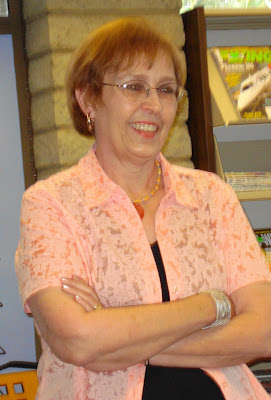 Donis Casey, author of the Alafair Tucker mysteries, spoke at the
Velma Teague Library as part of the Authors @ The Teague series.
She was at the library to promote her latest book, The Sky
Took Him, the fourth in the series.
Donis Casey, author of the Alafair Tucker mysteries, spoke at the
Velma Teague Library as part of the Authors @ The Teague series.
She was at the library to promote her latest book, The Sky
Took Him, the fourth in the series.
Donis started her program by mentioning that it was Earth Day, a
very appropriate day to talk about this series. She said she bases
these stories on her grandmother and other family members, and for
them, it was always Earth Day. Those people never wasted anything.
She said Alafair, who has ten children, raises her own vegetables
and the animals for meat. She and her family are self-sufficient.
At the beginning of the next book, she's growing a Victory Garden
because it's set during World War I. Casey said she still
remembers her grandmother laying sliced apples on burlap on the
the tin roof of a shed to dry the apples. She said she loves to
research the lifestyle of her characters, although she remembers a
lot of it because she saw it when she was growing up in Oklahoma.
The self-sufficient lifestyle was a way of life in the first half
of the twentieth century. Now it's almost gone. Few people sustain
themselves on a farm in the way Alafair Tucker's family does.
Casey mentioned that she was born just after World War II. Her
next book is set in World War I, but as she did the research she
realized a lot of the things going on were the same as what she
heard from her parents about the Second World War. For instance,
during WWI, Americans lost a lot of civil liberties. They passed a
law that made it illegal to criticize government policies out
loud, even it it was the truth. People went to prison for
criticizing the government. Some were labor union organizers.
People found socialism frightening. Donis Casey's next Alafair
Tucker title will probably be All Men Fear Me. It's based
on a WWI poster of a woman pointing, with a cap on that says
"Public Opinion", and the poster says "All Men Fear
Me."
The Sky Took Him, Casey's latest book,  is set in 1915, when the war is coming. It's already going on in
Europe. A lot of people are opposed to the U.S. getting into the
war, and there is a lot of sympathy for the Germans. In fact,
Wilson was elected on a platform about keeping the country out of
the war. This is relevant because Alafair has a new son-in-law who
is German, and they are starting to get flak. Alafair doesn't want
to hear about the war. She is involved with her family, and with
war talk, she considers her sons, and it frightens her.
is set in 1915, when the war is coming. It's already going on in
Europe. A lot of people are opposed to the U.S. getting into the
war, and there is a lot of sympathy for the Germans. In fact,
Wilson was elected on a platform about keeping the country out of
the war. This is relevant because Alafair has a new son-in-law who
is German, and they are starting to get flak. Alafair doesn't want
to hear about the war. She is involved with her family, and with
war talk, she considers her sons, and it frightens her.
Donis Casey's first three books were set in Boynton, Oklahoma in
the eastern part of the state. But, in The Sky Took Him,
she takes a trip Enid, to the northwestern part, the Cherokee
Strip. The land had belonged to the Cherokee, but they never lived
there. They grazed their cattle. By the end of the 1800s, they
leased it to cattle ranchers. That led to the Cherokee Land Run,
in which a gun was fired, and the people who had lined up took off
in cars, wagons, bicycles and their feet, running to the plot of
land where they had staked a claim. Then, they had to go to the
Land Office, and stand in line. It was so busy, they were doing a
"land office" business. They had to live on the land for
two years.
Casey's sister-in-law's grandfather had made that run and owned
land in Enid. Casey said she set this book in Enid because her
publisher wanted her to avoid the St. Mary Mead syndrome. In the
Miss Marple books, St. Mary Mead is a small town in which a number
of people are murdered. So, her publisher told her to take Alafair
somewhere.
Donis' sister-in-law lives in Enid, and when they go there, she
likes to take Donis and her husband to a historic restaurant in a
converted building that was a laundromat. There are historic
pictures on the wall, including one of Randolph Street, the main
street in Enid, with a millinery shop and Klein's Department
Store. And there is picture of this street that shows two women
walking down the street. If you've seen movies that start with a
still photograph that segues into live action, that's how Donis
saw that picture. She saw Alafair and her oldest daughter, Martha,
walking into Klein's. That's the first scene Casey wrote for The
Sky Took Him.
Alafair Tucker is a farm wife with a large family, so she needed a
compelling reason why she would get on a train and go somewhere.
So, Casey decided Alafair would go to visit her sister in Enid.
And, she would only go for a family emergency, such as someone
dying. So, Donis gave Alafair a dying brother-in-law, so she would
take the train to support her sister as a family duty. She's the
mother of ten kids, with Martha the oldest at twenty-four, and
Grace, the youngest, at three. Martha volunteered to go with her
mother to help, and that surprised Alafair. Martha has a job in a
bank that she loves. But Martha had reasons to get out of town,
and it involved a man.
Casey had to decide what time of year to set the book. She said
Cherokee Strip Days, when Enid celebrates the run in September,
were the most interesting days of the year. She went through old
newspapers at the Enid Library, and went to the ones for Sept. 16,
1915 to find how the town celebrated. She hadn't realized it was
only twenty-two years after the run, so most people were still
alive who had made the run. There was a huge celebration in Enid,
on the large double town square. For three days, that huge square
was blocked off for a carnival, street dances and an two hour
parade. The parade was led by the Cheyenne Indians. Donis'
husband, Don, tells stories of seeing the Cheyennes come to town,
and setting up their tepees. The population of Enid in 1915 was
25,000. Casey copied the description of the town celebration for
her book. Eugene V. Debs, the head of the Socialist party, was the
speaker. At that time, Oklahoma was a "lefty" state.
Casey also did research at the Museum of the Cherokee Strip. Like
many towns, they had moved a schoolhouse, a Victorian house, and
an old land office to the museum. There was also information about
the oil boom going on right about that time. There was a big oil
strike in 1916 right outside Enid. Donis said there were a million
ways a person could kill themselves in the oil fields. When
drilling oil wells, they often became plugged up. In order to open
the well, they sent a torpedo down the well, made of
nitroglycerin. Then they'd drop a weight down to explode it and
open the well. There were special groups of people who did that
work. And, they blew themselves up a lot. They were called
shooters, and received huge bonus pay. They could be recognized by
their missing body parts. Donis named one Pee Wee, and he had one
eye, and missing fingers.
Census reports from 1910 and 1920 where a big help. In 1910, the
population of Enid was divided by race, White, Black, Indian, and
Asian. There was one Asian person in 1910. In 1920, there were
five Asians. Donis said she wondered about that one Asian person,
and what they were doing there, so she created an Asian woman for
her book.
So, she has one Asian person, a shooter, oil wells, a fair, and
Alafair comes to Enid during the fair. Her niece's husband has
disappeared on a business trip at this time, and Alafair thinks he
just took off, since she doesn't have a good opinion of him. There
is also an evil businessman character, who owns an enormous bank
building. He's an enemy of Alafair's dying brother-in-law. They
both made the run twenty-two years earlier, and something
happened. Also, Martha was running away from someone, who turns up
in Enid. There are a number of side stories in the book. Casey
said she loved the way The Sky Took Him turned out.
In describing Enid, Donis said it's flat, part of the Great
Plains. The Chisholm Trail runs through it. It's flat, with oil
and wheat fields, and red dirt. People who grew up there, like
Donis' husband, are often claustrophobic because they're used to
wide, open spaces. She said he grows nervous in sections of the
country where the trees grow over the road and form a tunnel. In
Enid, the wind blows continually.
Casey said she grew up in Oklahoma, and was thirty-six when she
moved to Arizona. She realized it was the first time in her life
she wasn't watching the weather all the time. She felt her
shoulders relax. In Oklahoma, there's wind, and cold, tornadoes
and ice storms. It's windy all the time. They have one nice month,
October. In Arizona, the weather is calm, and she feels calm. In
Oklahoma, people must be tough, and have a mental toughness to put
up with the weather.
Donis was asked about Grace, and she said Grace is one of the most
popular characters. Gee Dub is the other one, and he's based on a
real person. He's the other one people like. She even received a
letter from a man who knew the time period of the books, who told
her not to kill Gee Dub in WWI.
She said she's trying to write one book for each kid in the
family, and hopes she can pull it off. Each kid is different, so
she might succeed. Grace was born in 1912. By the time she is 18,
it will be 1930, and the Depression. Casey said she doesn't want
to write about that period because that's the only thing so many
people think of for Oklahoma. They don't realize that Oklahoma was
rich. She wants to write about the booming, rich period.
In saying that, she said her publisher said not that many people
would be killed in a year in a small town, and Donis laughed and
commented that the publisher didn't know Oklahoma. That wouldn't
be a stretch there, even today.
Donis pointed out the covers of her books, and that there are
family pictures on the front of most of them. She bought the
picture on the cover of The Drop Edge of Yonder because
the woman looked just like her Aunt Mary, and Alafair's daughter,
Mary, is the focus of this book. She told us the picture in the
background is the family home, Alafair's home, in Boynton. And,
the little girl on the cover of The Sky Took Him is Donis.
That's supposed to be a picture of Grace.
The Sky Took Him is a statement Grace makes during the
story. All of the titles are something a character says. When
Grace goes to sleep, she says she goes to the sky. Grace is
somewhat like her mother, extra-intuitive.
When she was asked about her characters, Casey said the characters
become real people, and talk for themselves. According to Donis,
Graham Greene said the first time a character does something you
didn't expect is when they come alive, and then you let them to
it. For her, writing is almost a spiritual experience. It's
torture to write, and it takes her a year to write a book. But,
once in a while, something happens, and it just comes out. There
is a revelation at the end of The Sky Took Him, and Donis
never saw it coming. She was just as shocked as Alafair when
Alafair realized what had happened.
Donis Casey said, don't overthink the story. Just get out of the
way.
For personal reasons, Donis has not been able to tour for The
Sky Took Him. We're very grateful she was able to appear at
the Velma Teague Library for the Authors @ The Teague series.
Donis Casey's website is www.doniscasey.com.
The Sky Took Him by Donis Casey. Poisoned Pen Press, ©2009. ISBN
978-1-59058-571-9 (hardcover), 252p.
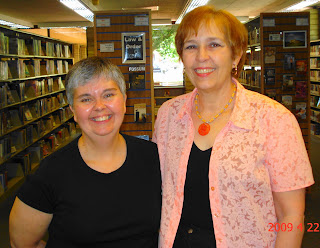
Photo by Bette Sharpe
lholstine@yahoo.com
book blog: http://lesasbookcritiques.blogspot.com
Twitter @LesaHolstine
"Libraries are the best value you can get for your tax
dollars." - Lorna Barrett, Bookmarked for Death
|
|
| |
|
|
|
|
| |
Laura Lippman
at the Velma Teague Library

On her book tour to promote Life Sentences, Laura
Lippman appeared in front of a very appreciative audience at
the Velma Teague Library. The New York Times
bestselling author started by asking the audience what they
liked to read, and if they liked mysteries. When an audience
member mentioned she liked historical mysteries, Laura kidded
and said then she wouldn't like her books because she writes
novels set in the present day, such as her latest one, Life
Sentences.
Lippman said she was going to talk about where ideas come
from. Many authors won't talk about that. They don't want to
reveal secrets. They're afraid they would unveil a mystical
process in public. But, Lippman taught writing, so she's not
afraid to discuss the topic.
Laura Lippman as written fourteen novels, ten in the Tess
Monaghan series, and four standalones. She's also written a
book of short stories. Some of those books are what she calls
lightning bolt books, books that came about because she was
hit by an idea. Most of the short stories were written because
of an external prompt. Someone compiling a book asks, can you
write on this topic - golf, cocaine, poker, greed, New
Orleans, Washington, D.C., and Laura said, sure, I can write a
story on that topic.
According to Laura, when she's not looking, an idea becomes a
book. She writes something called the Memory Project, and
encourages her students to do something similar. She said
emotions can be conveyed through vivid descriptions. She kept
journals, and said when she talked about how she felt, no
memories came back. But, if she wrote descriptions of her day,
who she saw, where she went, memories came back. Those
memories or ideas become part of stories.
For instance, on the plane today, she read an article in Texas
Monthly about San Antonio. She lived there from 1983 to
1989, and the article brought back an overwhelming memory of
her twenties, and living there.
So, there are the lightning bolt books, and the strings of
ideas that become books. She found the string for Life
Sentences on the same day she was hit by a lightning bolt
for another one. It was April 1985, and opening day for the
Washington Nationals. It was the return of baseball to
Washington, D.C. Her husband had been a big fan of the
Washington Senators, and they went to the game with friends.
On the way, they passed the Wheaton Plaza Mall, and they all
had the same thought. In 1975, two sisters, 10 and 12, went to
the mall, and disappeared, never to be seen again. There were
no witnesses, no clues. It's a stone cold mystery.
Lippman thought, what if someone showed up, claiming to be one
of the girls? That lightning bolt idea became the novel, What
the Dead Knew. On the same day, as they were driving to
D.C., Laura's husband told stories. We all have anecdotes we
tell over the years, the same stories, what she calls
"first date" stories. Her husband told about being
crazy over the Washington Senators as a boy, so crazy that he
took his radio with him to school on opening day, and when he
knew it should be getting toward the end of the game, he went
to the restroom to listen. His favorite player was Mike
Epstein. He was Jewish, and Laura's husband is Jewish. It was
the bottom of the ninth, bases loaded. Epstein came to bat to
face Vida Blue. And her husband prayed and offered up all
kinds of things, that he would be better in religious school,
etc., if Epstein would get a hit. And, Epstein hit a grand
slam to win the game. Only there is a problem with the story.
Mike Epstein never hit a grand slam on opening day. They
researched it, and there was nothing that dramatic on opening
day. Lippman's husband was a reporter, an ethical one. He
didn't consciously make up that story. This became a string of
an idea for a book. What if there's a story you're always
telling about yourself? What is it like to find out it's
wrong?
As a writer, Lippman loves to read crime novels. But, it's
hard to read them while she's writing. She can read British
crime fiction while she's writing, particularly the darker,
noir, ones. She can also read memoirs, since they are so
specific in story and voice that she's not likely to imitate
them. She recently picked ten favorite memoirs for The
Guardian, the British newspaper. She discovered she liked
the ones about ordinary lives, such as Calvin Trillin's About
Alice, stories of his wife. He had written about her in
other books, and when she died, he received lots of letters
from people. He realized they thought they knew Alice, but
they didn't know her. They knew the character he created. So,
he wrote the book to tell about her and their marriage, a
recognizably normal marriage.
Another favorite memoir is Truth and Beauty by Ann
Patchett. It's a book about writers and friendship. Patchett's
friend was the author Lucy Grealy, a poet who wrote her own
memoir, Autobiography of a Face. She had cancer of
the jaw as a child, and numerous surgeries to get it repaired.
She died of an accidental heroin overdose. When asked about
her memoir, Grealy answered, I didn't remember it. I wrote it.
I'm a writer. It brings up the question, in a memoir, can you
improve upon the past if you're a good enough writer?
Lippman doesn't like fake memoirs. She's interested in the
ethics of memoir writing. Some authors check with others to
get all the facts write. Is it a memoir if you combine five
summers into one? As a reporter, if she sees quotation marks,
Lippman expects that someone actually said it.
But, when her husband's story fell apart, it was a string. Ten
of fourteen of Lippman's novels are inspired by real life
stories, crimes that captured her imagination. Every
Secret Thing was inspired by a crime in England. Two
ten-year-old boys killed a three-year-old boy. The case drew
all kinds of attention in England in 2000 because the boys
were almost old enough to be released. Some people said nine
years was not enough, and they wanted them to go into the
adult system. However, the judge said children were different,
and it was expected that children could change in the juvenile
system. He was not only going to release them at 19, but he
was going to release them with new names, new national I.D.
numbers, and penalties for anyone who outed them. This
wouldn't work in the U.S. because our press laws are
different.
There were two cases in the United States that occurred at the
same time. One was famous. In Washington, D.C., Dr. Elizabeth
Morgan alleged that her husband had sexually abused their
daughter. No one believed her, so she made her daughter
disappear. Then, she went to jail for two years when she
wouldn't answer questions about her daughter's whereabouts.
The story of a prominent white woman, a doctor, drew a great
deal of media attention.
At the same time, there was a similar case in Baltimore, but
it wasn't covered outside of Baltimore. Jackie Bouknight was
black, poor, possibly with mental problems. She was suspected
of abuse of her son, and he was put in foster care. When he
was returned, there was too much time before social services
checked on them. By the time they checked, there was no
evidence of a child. She wouldn't tell where he was, and
evoked the Fifth Amendment against self-incrimination,
refusing to answer questions. There was Constitutional
protection. The government couldn't build a case that
Bouknight has killed her son. All they knew is that a minor
child was missing. However, in the interest of the child, the
judge ruled the mother must tell where he was. Instead,
Bouknight went to jail for seven years on a contempt charge. A
friend of Lippman's recently ran into Jackie at the
courthouse. This was a string for Life Sentences.
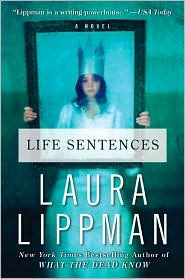 In Life Sentences, a memoir writer, Cassandra, has
used up her life stories, and needs something to write about.
She reads about a childhood friend, Callie, who had a similar
case to Jackie Bouknight's. Cassandra, who writes only for her
own glory, thinks how wonderful it would be when she tracks
Callie down. However, she never thinks others won't be an
enthusiastic as she is. This is a story of contrasts. One
woman, Cassandra, defines herself by talking. She can't shut
up. The other character, Callie, defines herself by silence.
Something has to disappear before you know it's missing.
Lippman said she plays fair with Callie Jenkins' story, and it
is a crime novel.
In Life Sentences, a memoir writer, Cassandra, has
used up her life stories, and needs something to write about.
She reads about a childhood friend, Callie, who had a similar
case to Jackie Bouknight's. Cassandra, who writes only for her
own glory, thinks how wonderful it would be when she tracks
Callie down. However, she never thinks others won't be an
enthusiastic as she is. This is a story of contrasts. One
woman, Cassandra, defines herself by talking. She can't shut
up. The other character, Callie, defines herself by silence.
Something has to disappear before you know it's missing.
Lippman said she plays fair with Callie Jenkins' story, and it
is a crime novel.
In 2007, Laura Lippman did an event with an author. She
mentioned a memoir she had read, and he said it was written by
his ex-girlfriend. He thought he came off badly. Lippman went
back and looked it up, and he was on fewer than three pages.
Worse than being a character in a memoir is being a minor
character.
When What the Dead Know came out two years ago, no
one outside the Baltimore/D.C. area asked about the real
story. In 1985, the disappearance of two sisters was not a
national story, as it would be today. But, at every event she
did nearby, Lippman was asked if she got permission from the
family to write the book. Her nice answer was that she was a
reporter whose intentions were pure. She was writing a novel
about grief that was open-ended. We want people to get over
grief because we're uncomfortable. The nice answer is that it
would have been mean to call them up. The not-so-nice answer
was, I don't need anyone's permission to write anything. If
she was only writing about people just like her, it would be
boring. Lippman decided she gets to write whatever she wants
to write about, but readers can get whatever they want out of
it. She just hopes people don't read Life Sentences,
and look at Cassandra, and say, I bet Laura is a lot like
that. People can infer what they want, and they do. She
discovered that from the email she gets on her website. She
does try to answer all of her email.
So, if she makes comments about older women who won't touch a
computer, she might be basing it on two older women she knows,
her mother and mother-in-law. Laura's mother was a children's
librarian in charge of the AV squad, but she won't touch a
computer. Laura said, if she gets to have her say, so do her
readers.
Lippman said mystery readers are extremely sophisticated
readers. Those readers will do the heavy lifting for an
author. So, she writes for the smartest people she knows -
librarians, teachers, readers.
Laura Lippman said, "I get to write what I want. You get
to read what you want. Now, you can ask what you want."
And, she opened the program to questions.
The first question was, should a reader start at the beginning
of the Tess Monaghan series. Lippman said she thought the best
introduction was to start with The Sugar House,
unless you were a reader that needed to start at the beginning
of the series. She thought she got better as a writer. And,
Tess Monaghan wasn't a very good private detective when she
started out, and by that book, she was better at it.
Lippman said her standalones are dark and sad. Mistakes are
made by ordinary people. Her short stories are dark and sick,
black comedy. The title story of her book, Hardly Knew Her,
is an homage to Member of the Wedding by Carson
McCullers. She's proud of the story "Scratch a
Woman". Her stories are an outlet for her dark, cynical
humor.
Laura Lippman thinks Life Sentences and What the
Dead Knew are the two best books she ever wrote. What
the Dead Knew is a circle. It starts with a question, and
ends with the answer. Life Sentences is a shaggy dog
story.
According to Lippman, it troubles some people that an author
borrows a story. It's as if they took something of value from
someone. She's been asked if she uses someone's story because
you make more money that way. She said there's enormous leeway
in fiction to borrow stories. However, she does feel that Law
& Order goes too far sometimes in borrowing real life
crimes, and making them into sleazy stories.
When asked about the future of journalism, Lippman said she
was horrified by what has happened to newspapers. She and her
father both worked for the Baltimore Sun, for a total
of forty years. That newspaper, once one of the best, is not
unreadable. She forgets to read it now because it's so bad.
She believes journalism will survive because people need it.
Reporting is expensive, and someone needs to underwrite it.
Lippman teaches in the Writers in Paradise program at Eckerd
College, a program started by Dennis Lehane. It's sponsored by
the St. Petersburg Times, still a good paper. They
recently covered a small theft by a politician. But, if
newspapers don't catch politicians, it will only get worse.
Laura is happy to be out of journalism, but her husband misses
it. When the Baltimore Police Department announced they would
not be releasing the names of officers involved in shootings,
for the safety of the police officers, her husband wrote a
letter to the editor, saying that information had to be
available to reporters. He went on to say reporting is a
skill, and bloggers can't cover those stories. They only know
how to link to what others are reporting. Newspapers have to
have reporters.
At the end, Lippman discussed the Kindle. She said she doesn't
love her Kindle. She travels a lot, and can't carry as many
books as she'd like on a trip. But, she will only buy
"B" books for her Kindle, ones that she doesn't want
to keep. Recently, she was reading two memoirs on the Kindle,
and forgot she switched from one to another. Every book looks
the same on the Kindle, with the same type. Books shouldn't
look the same because appearances are important.
She said in Life Sentences, she wanted different type
in the ten chapters that were from Cassandra's memoirs, but
didn't get it, probably because of cost. But, authors,
readers, librarians, and publishers understand the importance
of appearance to a book. Appearances are important.
Laura Lippman's website is www.lauralippman.com
Life Sentences by Laura Lippman. William Morrow, ©2009. ISBN
978-0-06-112889-9 (hardcover), 344p.

|
|
| |
|

By:
Lesa
Holstine Glendale Daily Planet Book Topics Editor
Storm Kayama, a lawyer from Oahu, goes to Maui for what she assumes will
be a short trip with a possible new client. Lara Farrell is a former
windsurfer opening a new dive shop, and she needs legal advice as to the
property and insurance. But, when Storm arrives, Lara doesn't seem to
have time for her. Instead, she's involved with her business plans while
her boyfriend, Ryan Tagama, is involved with his father's real estate
business. The delays only serve to allow Storm to get involved where she
shouldn't. The day she arrives, someone bombs a restaurant. The
subsequent suicide of one of Lara's employees, and his attempted murder
of his two young daughters shock her. When Storm attempts to help a
surviving daughter, she becomes emotionally involved with some of Lara's
staff.
Before she knows it, Storm is poking around where she shouldn't get
involved. Somehow, all the violence seems to turn back to the Yakuza, a
violent Japanese crime organization, with connections deep in the local
community, including businesses, politics, real estate and child
prostitution. It's enough to make a lawyer curious and angry. And, it's
enough to make Storm Kayama a target.
Atkinson skillfully pulls all of the strings together in this mystery.
All of the characters, from Storm to her boyfriend, Hamlin, to Lara and
her employees, are three dimensional characters with complex
motivations. Even minor characters, such as Sergeant Carl Moana of the
Maui Police Department, are well done. Deborah Turrell Atkinson's last
two books are fast-paced, exciting stories. And, Pleasing the Dead
is a fascinating story that can be recommended to any reader for the
suspense, storyline, characters, and local color. Now, I can highly
recommend these books.
Deborah Atkinson's website is www.debbyatkinson.com
Pleasing the Dead by Deborah Turrell Atkinson. Poisoned Pen Press, ©2009.
ISBN 978-1-59058-597-9 (hardcover), 296p.
lholstine@yahoo.com
book blog: http://lesasbookcritiques.blogspot.com
Twitter @LesaHolstine
"Libraries are the best value you can get for your tax dollars."
- Lorna Barrett, Bookmarked for Death
|
| |

By:
Lesa
Holstine Glendale Daily Planet Book Topics Editor
Valley of the Lost by
Vicki Delany
 There are some outstanding traditional mysteries coming out of Canada.
Louise Penny's Armand Gamache mysteries immediately come to mind.
Although I missed Vicki Delany's debut novel, In the Shadow of the
Glacier, after reading Valley of the Lost, I'm willing to
put her up there with the other Canadian authors who write intriguing
police novels.
There are some outstanding traditional mysteries coming out of Canada.
Louise Penny's Armand Gamache mysteries immediately come to mind.
Although I missed Vicki Delany's debut novel, In the Shadow of the
Glacier, after reading Valley of the Lost, I'm willing to
put her up there with the other Canadian authors who write intriguing
police novels.
When Lucky Smith found a dead woman in the bushes near the Trafalgar
Woman's Support Center, the former hippie brought home the baby that was
beside her. Lucky's daughter, Molly, wasn't happy because as a police
constable on probation, she needed her sleep. But, despite the baby that
cried all night, Molly willingly teamed up with Sergeant John Winters to
try to find the woman's killer. But, Ashley's past isn't easy to track
down. No one knows her last name; she seemed to be off heroin, but died
of an overdose. Is it just one more death to be attributed to the
current rash of drug crimes in Trafalgar?
While Winters struggles with the case, his wife, Eliza, is struggling
with her own issues. As a high-profile model, she's in demand to act as
a spokesperson for a resort development that is tearing apart the
community. And, since they only moved to Trafalgar after Winters left a
job as a homicide cop in Vancouver, she'd like to fit into the
community.
Delany's mystery combines the best of traditional mysteries with my
beloved police procedurals. There is a focus on the investigation, but
the author doesn't neglect the other people involved, Molly's parents,
Winters' wife, a local newspaper reporter, Ashley's former roommate.
Anyone could be connected when the police don't know who the victim is.
Winters is very frustrated when he says, "A murder investigation
starts with the victim....Who hated/feared/loved/had an accident
with/even a chance encounter with the victim so that he or she ended up
killing her? It all flows from there."
And, Vicki Delany successfully brings all of that flow together in a
fascinating mystery, Valley of the Lost. Delany is an author to
watch.
Vicki Delany's address is www.vickidelany.com
Valley of the Lost by Vicki Delany. Poisoned Pen Press, ©2009. ISBN
9781590585955 (hardcover), 312p.
lholstine@yahoo.com
book blog: http://lesasbookcritiques.blogspot.com
Twitter @LesaHolstine
"Libraries are the best value you can get for your tax
dollars." - Lorna Barrett, Bookmarked for Death
|
| |
|

By:
Lesa
Holstine Glendale Daily Planet Book Topics Editor
Cara Black Appears for
Authors @ The Teague

Cara Black appeared at the Velma Teague Library to
discuss her mystery books, the Aimée Leduc Investigation series. She
introduced Aimée as half American and half French. She's the owner of a
computer security firm, with her partner René, who is a dwarf. There is a
DeLuc Detective agency in Paris, so Black reversed the name. Aimée
inherited the business from her father. She rides a scooter, and likes bad
boys.
Like Jacqueline Winspear when she appeared for Authors @ The Teague, Black
referred to Stephen King's book, On Writing, when she talked
about her latest mystery, Murder in the Latin Quarter. She said
King talks about writers, where they get their ideas, and how it all comes
together. She said she thinks of the process as rocks, several of them.
First, you hear about an idea, and then something comes together. Rocks
need to ignite and fuse together. That's how the ideas come together for a
book.
Black's editor provided the first rock or idea for the latest book. She
said Aimée Leduc has never had a case on the Left Bank, so maybe she
should cross the river in this one. Cara rode her bike up and down a
boulevard, but each area she saw was too different to provide one setting.
Paris is divided into 20 districts.
The second rock came from a friend in Paris who had a daughter in high
school. The students there met urban explorers who went in the underground
tunnels in Paris. They explored them, and partied. Cara asked if she could
go down in the tunnels. So, they received permission to go underground
beneath the high school.
The third rock came from a friend, a Commissaire, a high-ranking inspector
in Paris. Cara takes him to dinner when she goes to Paris, plies him with
drinks, and asks what he is working on. She once asked him why he talks to
her, and he said because he wants her to get it right. In 2007, he said he
had just come back from his final testimony in England, where he spent
five hours testifying in English. When she questioned for what, he said,
oh, I guess I didn't tell you. He was in charge of the Princess Diana
investigation, and this was the final inquiry in London. When asked, he
said their findings were that the chauffeur was high on alcohol and drugs,
and blood levels showed that.
Black decided then to set her story, Murder in the Latin Quarter,
 in September 2007, two weeks after the car crash, at a time when the world
was still watching. The Aimée Leduc series is set in the mid-90s. And,
people don't remember what was happening at that time.
in September 2007, two weeks after the car crash, at a time when the world
was still watching. The Aimée Leduc series is set in the mid-90s. And,
people don't remember what was happening at that time.
In setting the book in the Latin Quarter, Black picked one of the oldest
parts of Paris. The Gauls and Romans were there, and there is still a
great deal of Roman influence left in Paris. There was a Roman road
running through it. Black asked a man what the scallop shell on a building
meant, and he said it was part of the old pilgrimage route to Spain. The
Sorbonne is in the Latin Quarter. It was the first university, and
everyone from Europe came there. They spoke Latin at the Sorbonne, hence
the name, the Latin Quarter. The Grandes écoles were here. In order to
get in, students must take competitive written and oral exams. The
graduates became part of the old boys' network, the power base of France.
Aimée would have hit against that wall.
After reading from Murder in the Latin Quarter, Black took
questions. The first one was about her love of Paris. She said she grew up
in the San Francisco Bay area, and attended a French Catholic Girls'
School. Her father was a Francophile, who liked art, and loved good food
and wine. While Cara was in high school, she read a book by Romain Gary,
the French author who won the Prix Goncourt twice. He was married to the
actress Jean Seberg. Cara wrote a fan letter to Gary, and when she
received a thank you note back, with his address in Paris on the back, she
took it as a personal invitation to visit. When she was backpacking in
Europe at 18 or 19, she went to Paris, and decided to go see Mr. Gary. She
found the address, a beautiful building, and went up an elaborate
staircase. When a man opened the door, she told him she had written a
letter, and he answered. He told her just a minute, and slammed the door.
When he reopened it, he said, how about coffee. They went down the street
to a cafe, where there was an espresso and a cigar waiting for him. When
asked, what about her, Gary replied, she'll have the same. So she had her
first espresso and her first cigar, and tried to act sophisticated without
getting sick.
When Black went back to Paris in the 1980s, a friend took her to the
Marais, and showed her where her mother lived as a hidden Jewish girl
during the Second World War. She wore the yellow star, and hoped she would
be reunited with her family, but after the war, she found her family had
died in Auschwitz. In the 90s, Cara went back to France, and had one night
in Paris and went back to the Marais. This story led to the first Aimée
Leduc Investigation, Murder in the Marais. Her friend's story was
one of the rocks that led to the book. In addition, Black was reading P.D.
James. She appreciated the psychological depth and social context of the
books. She appreciated An Unsuitable Job for a Woman, the book
that introduced Cordelia Gray, an investigator. She wanted to do something
similar in her first book. She was asked if she knew of any French women
detectives, and she said in 1994 there were three women who owned their
own detective agencies in Paris, and Black met them all.
She was asked to go back and discuss the tunnels and catacombs under
Paris. She said the catacombs had lots of piles of skulls and bones. She
said you have to go deep under ground, and it's very tiring. The city is
built on limestone, that was dug out to for buildings, and the bones were
moved to the limestone pits. There are different levels under Paris; for
the sewers, catacombs, metro level, and more.
Cara said her next book is done, and was sent to the editor yesterday. It
takes place a month after Murder in the Latin Quarter, in
October, 1997. It's called Murder in the Palais Royal. She said
she didn't take that cover photo, but it's a great one, showing the arcade
with its gilded fence. The fence is gold-tipped. And, it has a woman
running in high heels. Cara Black said she could just see her character,
Aimée Leduc.
Cara Black's website is at www.carablack.com
Murder in the Latin Quarter by Cara Black. Soho Press, Incorporated, ©2009.
ISBN 9781569475416 (hardcover), 304p.
lholstine@yahoo.com
book blog: http://lesasbookcritiques.blogspot.com
"Libraries are the best value you can get for your tax dollars."
- Lorna Barrett, Bookmarked for Death |
| |
|

By:
Lesa
Holstine Glendale Daily Planet Book Topics Editor
Jacqueline
Winspear & Rhys Bowen at Velma Teague Library

(photo: Rhys Bowen & Jacqueline Winspear)
Jacqueline Winspear, author of the Maisie Dobbs mysteries, was our guest
for Authors @ The Teague on Tuesday, Feb. 24. We were lucky that Rhys
Bowen picked her up at the airport, so the author of the Molly Murphy,
Lady Georgiana (Georgie), and Evan Evans mysteries was able to speak to
our audience as well.
Jacqueline started the program by saying since she writes mysteries, she
always has to decide what she should say, and not say, so she doesn't
reveal too much. She said maybe it's obvious that the reader will
encounter madness in her new book,
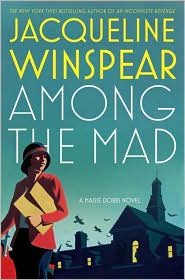 Among the Mad.
Among the Mad.
So, in order to provide the background to her book, she turned to Stephen
King's book, On Writing, to find
out what to say. He said when inspiration comes to an author, it comes
from two ideas coming together.
So, Winspear's life provided the inspiration for the background of Among
the Mad. She said there were three main sparks. The first came at
the age of sixteen, when she changed schools to take her A levels,
specialized exams in England. While she attended that school, from 16 to
18, the students were required to do community service on Wednesday
afternoon. She chose the social services group. On Wednesdays, she would
visit what, at that time, was called the Mental Hospital. At the time it
was built in the 1800s, it was known as a lunatic asylum. It's what we
would now refer to as a Psychiatric Care Facility. The walls were cement,
with glass on top, to discourage people from going over the top. When
Jacqueline visited, the gates were open, but at one time they were kept
closed to keep patients in, and others out. The building was typical of
its time, a Gothic, grey granite building, with a bell tower, and bars on
the windows. There was no doubt it was once a lunatic asylum.
Jacqueline's job was to sit and offer companionship. She would do puzzles
with the patients, read to them or listen to them read, write letters, and
just provide companionship. She started to wonder, even then, where the
dividing line was that got some people in, and kept others out. She isn't
sure where the idea came from. But, there was one man, in his forties or
fifties, who was very intelligent. She had eye surgery then, and he would
question her as to whether or not they did this procedure or that test. So
she mentioned to a nurse that he seemed so smart. He was a renowned
physician, and a murderer. He had been found guilty of justifiable
homicide because he killed someone who had broken in, but he went mad
after the killing.
There were also three women in their eighties. Since this was about 1971,
they had been born in the late 1800s. And, they always seemed just fine to
Jacqueline. When she mentioned that to a nurse, she was told they were
fine, but they all had children out of wedlock, and in the early twentieth
century, those women were institutionalized, and then it reached the point
where they could not live outside an institution.
The next event that sparked Winspear's imagination occurred at the end of
the 70s or the early 80s. She had a job in London, where Maisie Dobbs'
office is now located, that allowed her flexibility to come and go. She
used to take lunch in Regent Square where there was a bandstand, and she
could listen to the band play music. But, those were years of on-going
domestic terrorism. And, one day the IRA set off bombs in eight places in
London. One bomb went off under that Regent Square bandstand, killing band
members, families, and children. Jacqueline Winspear was on the way to the
park, and heard it. She remembers hearing the bomb, and it didn't sound
like you think it does. It sounded like a sharp, loud crack. Then there
was silence afterward. For a teeny split second, it felt as if humanity
was never going to breathe again. There was that silence, and then the
sirens. It was a time when people had to be vigilant for themselves, and
take responsibility for their own security if you were working in London.
Winspear's third spark was the memories of her grandfather. In 1916, he
was in the Battle of the Somme. He came back shell-shocked, and he had
been gassed. For the rest of his life, he had a sensitivity to sound. He
was emotionally vulnerable. It was a hallmark of young men who were
shell-shocked that their mind went from the sound; the percussion of
battle was too much.
Jacqueline's grandfather was registered as wounded because he was actually
wounded, so he received a pension as an old soldier. By 1915, there were
cases of shell-shocked soldiers who couldn't get treatment from
neurologists or doctors fast enough. The government was registering the
wounded soldiers for pensions, but there were so many that they would not
register the mentally wounded as wounded if they were only shell-shocked.
Instead, they were sent home to families who often couldn't deal with
them, and ended up putting them in asylums. Jacqueline has great memories
of her grandfather.
Winspear said when she writes mysteries, Maisie Dobbs is always the
mystery. She puts her in situations, and she has to react and change. She
has love and lost, gone to war, and has a career.
She went on to read an excerpt from Among
the Mad. In the scene, Maisie and her assistant, Billy Beale, had
just witnessed a man take his own life. Then, the shopkeepers set out
chairs, and made tea for people, because a good cup of tea got the British
through everything. After reading, she introduced author Rhys Bowen.
Rhys Bowen said she was really there to act as chauffeur for Jacqueline.
But, the books by the two authors parallel each other. March 17 is
release date for the eighth Molly Murphy mystery, In
a Gilded Cag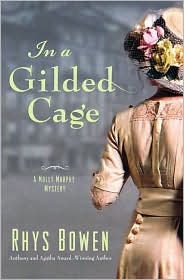 e.
Molly is a private investigator at the beginning of the 20th century who
came from Ireland to New York. The previous e.
Molly is a private investigator at the beginning of the 20th century who
came from Ireland to New York. The previous
 Molly Murphy mystery is coming out in March in paperback. Tell
Me, Pretty Maiden ends in an insane asylum. A girl had been
committed against her will, and Molly wants to get her out. It was a time
in which men would sometimes commit their wives, if they were interested
in another woman. And the concept of psychiatry didn't exist. To treat
insanity, they often introduced highly infectious diseases to patients.
Sometimes typhoid would induce a fever, and its affect would change the
brain. And, sometimes the patient didn't recover.
Molly Murphy mystery is coming out in March in paperback. Tell
Me, Pretty Maiden ends in an insane asylum. A girl had been
committed against her will, and Molly wants to get her out. It was a time
in which men would sometimes commit their wives, if they were interested
in another woman. And the concept of psychiatry didn't exist. To treat
insanity, they often introduced highly infectious diseases to patients.
Sometimes typhoid would induce a fever, and its affect would change the
brain. And, sometimes the patient didn't recover.
Bowen said Molly needed a story that was quite as heavy. At the beginning
of the twentieth century, the role of women was changing. In
a Gilded Cage begins with a suffragists march of Vassar graduates.
They suffered from verbal abuse, and had mud thrown at them. Bowen said
she traces this to a group of Vassar graduates. Her spark was a visit to
an eighty-year-old woman who had a book about Vassar graduates and their
travels. These women had great hopes they could do anything.
Those that married and shrank to fit their husband's vision of their role
lived In a Gilded Cage. In
contrast there is a young woman working for a pharmacist, who hopes to be
a pharmacist some day. The book discusses the difference in expectations,
and what happens.
This role is very important to Molly's life. Molly is considering marrying
her longtime boyfriend, Daniel Sullivan. But his expectations are that
she'll give up her work. Is that what she wants?
When the two authors took questions, I mentioned that the atmosphere in
London during that time, with a bad economy, soldiers returning, people
out of work, reminded me of our current situation. Jacqueline Winspear
quoted James Joyce as saying, "History is a nightmare from which I'm
trying to awake." She said photographers were not allowed to take
pictures of the caskets brought home from Iraq. She said England also
tried to keep from the people the human cost of war. The economic
depression mirrored the collective depression. The people celebrated the
end of the war, and then a few days later, they realized their boys were
never coming home. The men of entire factories, streets and towns, such as
Acton, were wiped out in the First World War. Eighty to ninety percent of
some towns were killed at the Somme, many from Pals Regiments.
In 1914, lots of men joined up because it was patriotic. By 1915, when
they realized what war was about, they thought maybe they wouldn't join
up. So, the British government encouraged Pals Regiments. Join up with
your pals from school, or factory, or street, or whole towns. However,
when entire neighborhoods were wiped out, the country couldn't hide the
losses. Now, the government no longer allows too many people from one
region to be in the same unit. The First World War left whole gaping holes
in communities. That war was a collective ache for the country.
Rhys Bowen went on to talk about the large loss of life because the
generals fought by sending men over the top, and lost 5000 men to gain a
short distance. Just as in Iraq, the background was missing. The generals
looked at the map, and never saw the the actual terrain. They sent in the
cavalry, and there was fifteen feet of mud. Men and horses drowned. And,
when messages were sent saying they can't advance because of the mud, the
generals couldn't understand. They made the mistake of planning a war
based on the most recent one England fought, with cavalry charges. They
should have looked at the American Civil War to see the rise of the
machine gun.
Jacqueline Winspear answered a question, saying she was from England, and
came to California in her early 30s, planning to take a vacation of three
or four months. She had a brother there. But, there was a company there
that had broken off from the firm she worked for, and they offered her a
job. So, she stayed in California.
It was the perfect ending to answer a question about the name Maisie
Dobbs. Winspear said the idea for the books came to her when she was
driving along. She just knew her character's name was Maisie Dobbs. She's
an everywoman. She's a woman of her generation, the first generation to go
to war in modern times.
Jacqueline Winspear's website is www.jacquelinewinspear.com
Among the Mad by Jacqueline Winspear. Henry Holt and Company, ©2009. ISBN
9780805082166 (hardcover), 320p.
Rhys Bowen's website is www.rhysbowen.com
Rhys Bowen blogs at www.jungleredwriters.com
Tell Me, Pretty Woman by Rhys Bowen. St. Martin's Press, 2009, ISBN
9780312943752 (paperback), 336p.
In a Gilded Cage by Rhys Bowen. St. Martin's Minotaur, ©2009. ISBN
9780312385347 (hardcover), 288p.
lholstine@yahoo.com
book blog: http://lesasbookcritiques.blogspot.com
"Libraries are the best value you can get for your tax dollars."
- Lorna Barrett, Bookmarked for Death

By:
Lesa
Holstine Glendale Daily Planet Book Topics Editor
Among the Mad by
Jacqueline Winspear
 Jacqueline Winspear's newest Maisie Dobbs book, Among
the Mad, is one of the most thoughtful, timely mysteries you will
read this year, even though the main action is set in one short week in
December, 1931. And, it's scary.
Jacqueline Winspear's newest Maisie Dobbs book, Among
the Mad, is one of the most thoughtful, timely mysteries you will
read this year, even though the main action is set in one short week in
December, 1931. And, it's scary.
On Christmas Eve, Maisie Dobbs, Psychologist and Investigator, is running
errands with her assistant, Billy Beale, when she notices a man who
appears to be homeless. As she turns around to give him money, he blows
himself up. Detective Inspector Richard Stratton of Scotland Yard arrives
at the scene, and collects Maisie and Billy as witnesses. When the
government receives threatening letters, Scotland Yard calls on Maisie to
work on the case, since her name was mentioned in the letter, and there is
a possibility of connection to the suicide.
Dobbs, herself a veteran of the war, recognizes the despair in the letter.
The writer wants the government to alleviate the suffering of the
unemployed, or threatens more than one suicide. She, herself, knows that
London can be "a desperate place," with people out of work,
returning vets with no jobs, mentally scarred men and women trying to cope
with the aftereffects of war. However, even as the threats and dangers
escalate, Maisie knows it's like looking for a needle in a haystack to
look for one man who is mentally scarred, out of a nation of hundreds of
thousands of people who are wounded.
In one short week, Maisie and Scotland Yard face a human time bomb.
Winspear allows the reader to feel Maisie's mounting fear and anxiety,
along with the deteriorating condition of the author of those threats.
It is a post-war England, suffering from a poor economy, where returning
vets suffer from homelessness, shell-shock, and desperation. Winspear uses
Maisie and her best friend, Priscilla, as well as the tragic story of
Billy Beale's wife, to show the raw emotions of everyone in the country,
the fear, and, at times, lack of hope in the future.
Winspear quietly ratchets up the tension in the novel until Maisie Dobbs
faces a killer, and her own turmoil, on New Year's Eve. Among
the Mad is a thought-provoking, masterful novel.
Jacqueline Winspear's website is www.jacquelinewinspear.com
Among the Mad by Jacqueline Winspear. Henry Holt and Company, ©2009. ISBN
9780805082166 (hardcover), 320p.

By:
Lesa
Holstine Glendale Daily Planet Book Topics Editor
These are the nominees for the 2008 Agatha Awards,
to be presented for books that represent the best in the traditional
mystery genre. The Velma Teague Library is very proud to have hosted
Rhys Bowen, Louise Penny, and Rosemary Harris within the last few months.
The Velma Teague Library - the place to be if you love mysteries!
2008 Agatha Nominees
Best Novel:
Six Geese A-Slaying by Donna
Andrews (St. Martin's Minotaur)
A Royal Pain by Rhys Bowen
(Penguin Group)
The Cruelest Month by Louise Penny
(St. Martin's Press)
Buckingham Palace Gardens by Anne
Perry (Random House)
I Shall Not Want by Julia
Spencer-Fleming (St. Martin's Minotaur)
Best First Novel:
Through a Glass, Deadly by Sarah
Atwell (Berkley Trade)
The Diva Runs Out of Thyme by
Krista Davis (Penguin Group)
Pushing Up Daisies by Rosemary
Harris (St. Martin's Press)
Death of a Cozy Writer by G.M.
Malliet (Midnight Ink)
Paper, Scissors, Death by Joanna
Campbell Slan (Midnight Ink)
Best Non-fiction:
African American Mystery Writers: A Historical & Thematic Study
by Frankie Y. Bailey (McFarland & Co.)
How to Write Killer Historical Mysteries
by Kathy Lynn Emerson (Perseverance Press)
Anthony Boucher, A Bibliography by
Jeff Marks (McFarland & Co.)
Edgar Allan Poe: An Illustrated Companion
to His Tell-Tale Stories by Dr. Harry Lee Poe (Metro Books)
The Suspicions of Mr. Whitcher by
Kate Summerscale (Walker & Co.)
Best Short Story:
"The Night Things Changed" by Dana Cameron, Wolfsbane
& Mistletoe (Penguin Group)
"Killing Time" by Jane Cleland, Alfred
Hitchock Mystery Magazine - November 2008
"Dangerous Crossing" by Carla Coupe, Chesapeake
Crimes 3 (Wildside Press)
"Skull & Cross Examination" by Toni Kelner, Ellery
Queen Mystery Magazine - February 2008
"A Nice Old Guy" by Nancy Pickard, Ellery
Queen Mystery Magazine - August 2008
Best Children's/Young Adult:
Into the Dark by Peter Abrahams
(Harper Collins)
A Thief in the Theater (A Kit
Mystery) by Sarah Masters Buckey (American Girl Publishers)
The Crossroads by Chris
Grabenstein (Random House Children's Books)
The Great Circus Train Robbery by
Nancy Means Wright (Hilliard & Harris)
Congratulations, again!
lholstine@yahoo.com
book blog: http://lesasbookcritiques.blogspot.com
"Libraries are the best value you can get for your tax dollars."
- Lorna Barrett, Bookmarked for Death
|
| |
| |
|

By:
Lesa
Holstine Glendale Daily Planet Book Topics Editor
Mystery
Author Rosemary Harris at Velma Teague Library

Photo by Lesa Holstine
Rosemary Harris appeared at the Velma Teague Library on Friday, Feb. 20,
introducing herself as the author of the Dirty Business Mystery Series
for St. Martin's Minotaur. She went on to say the first place she
appeared after her launch party last year was The Poisoned Pen Bookstore
in Scottsdale. She said she had become an online friend with me.
Rosemary said you might hesitate to call someone you meet online a
friend, but I truly was one. She said, "Lesa knew I was a rank
beginner, so she showed up at the bookstore to support me." So,
when she had the opportunity to appear at the Velma Teague Library, she
jumped at the chance.
Harris said she was an accidental author. She doesn't have five or six
half-finished manuscripts. She lives in Connecticut, and one winter was
so bad, they had seventeen snowstorms. That winter, there was a small
item in The New York Times saying a mummified baby had been
identified. She commented that the media has changed in the last five or
six years. She was fascinated by this item, and, at that time, she had
to dig for the story. She snooped around online, and became more hooked,
so she called the doctor who assisted with the autopsy. He was the
Director of the Henry Lee Institute at Yale. He told her the baby had
not been 100% identified. Harris thought, what if they were wrong as to
who the baby was? Her "what if" became her first mystery, Pushing
Up Daisies. 
Rosemary made her heroine, Paula Holliday, a gardener because Harris is
a gardener. It took her one month to write the first thirty-five pages.
Then, she hit the wall all first-timers hit. She decided to get past
that brick wall by getting to fifty pages. Then the goal was 100 pages.
It took her one and a half years to write the whole book, and a year to
get an agent. It was torture to send her baby out in the world, and
wait. It can be disheartening. After one year, she wrote a strong cover
letter, and sent it, along with the first chapter to ten agents. Three
answered. Harris said, no matter what you hear, agents don't have jobs
unless they have someone to represent.
Harris said her latest book, The Big Dirt Nap, also came from
information she read in the newspaper. She has numerous story ideas from
articles clipped and filed from papers.
Here's an idea from the papers. Everyone knew the story of the chimp
that attacked the friend of its owner, and had to be killed. The lady
with the chimp lives near Harris in Connecticut, and she met the chimp.
Harris' husband, Bruce, jogs, and a dog followed him home. They
identified the owner, and took it home to this unusual property where
there were dogs, and a wagon in the Wizard of Oz style. It was a
nontraditional home setting. And, then the chimp came out. When she
heard about the chimp in suburban Connecticut last week, she knew it was
the chimp she'd met. She said that has got to end up in a story. Harris
tweaks real-life stories for her books.
 The inspiration for the latest mystery, The Big Dirt Nap, was
the story of a woman living with her son on a reservation. She wasn't a
Native American, but her son's father was. There was controversy as to
whether she should be allowed to live there. Harris did research as to
laws and history. Then, she made up her own tribe. She said there is a
proliferation of casinos in Connecticut. Many people don't know the
owner of Subway is backing a tribe in Connecticut in their fight for
legal recognition. There are lots of stories behind casinos. There are
Malaysian investors. And, there are lots of fun stories about them.
The inspiration for the latest mystery, The Big Dirt Nap, was
the story of a woman living with her son on a reservation. She wasn't a
Native American, but her son's father was. There was controversy as to
whether she should be allowed to live there. Harris did research as to
laws and history. Then, she made up her own tribe. She said there is a
proliferation of casinos in Connecticut. Many people don't know the
owner of Subway is backing a tribe in Connecticut in their fight for
legal recognition. There are lots of stories behind casinos. There are
Malaysian investors. And, there are lots of fun stories about them.
The Big Dirt Nap also includes a corpse flower. That is a
plant, native to Indonesia, that only grows in the U.S. in cultivation.
It needs to be hand-pollinated in order to bloom, and it only does that
every seven to ten years. When it flowers, it smells like rotten meat.
In this story, Paula Holliday goes to a hotel to write a story about the
corpse flower, and spend a girls' weekend with a friend. Her friend
doesn't show up. But, a guy tries to pick Paula up, and ends up dead,
with a hole in his head. She identifies the body, and is stuck there,
without her friend, who still doesn't show. The story covers the three
to five days it takes a corpse flower to bloom. The denouement of the
story occurs when the flower blooms.
According to Harris, there was less pressure with the second book
because she had a two book contract. With the first one, you do the
happy dance when you write The End. But, the more you write, the more
you learn. She said now, she could have changed a number of things in
her first book. She thought the first one was funny, but it's only been
with the second book that reviewers are commenting on the humor.
Rosemary Harris is working on the third book, to be called Dead Head.
It's almost finished. It's another story ripped from the headlines. A
while ago, there was a San Diego housewife who had been on the lam for
35 years. She had walked away from a work release program in Michigan,
where she had been sentenced to twenty years after selling drugs to an
undercover cop when she was nineteen. She was ripped from her
middle-class family, and sent back to Michigan. Harris uses this as the
basis for the next mystery.
She said she writes mysteries with gardening because she likes digging
things up. Gardening and mysteries have parallels, with lots of overlap.
To Harris, it's a mystery when anything works in a garden. She finds
seeds a mystery.
One thing she learned while writing The Big Dirt Nap is there
are over 100,000 missing persons in the U.S. No law enforcement will
look for healthy adults unless they suspect foul play. That happens to
Paula's friend.
In answer to a question, Rosemary said she includes bits of gardening.
She doesn't want to write a craft mystery. Paula has to have a job, so
she made her a gardener.
Harris had no idea she was writing a series when she wrote her first
book, but her agent asked if she was, and, of course, she said yes. It's
easier for an agent to sell a series. If a writer starts with a
standalone, there's a lot riding on one book. Many mystery authors write
a series first, and then say, but I really want to write a standalone.
She said it's probably hard to maintain a long-running series, but, in
saying what I really want to write, it negates the importance of the
series. It reminds her of actors who say I really want to direct.
When Rosemary wrote Pushing Up Daisies, she was told to take
out the one line of sex in the manuscript. When she questioned that, she
was told in the lifespan of the series, an author can't have the heroine
sleep with a man in every book, or she's not a "nice girl." A
series is like real life in that the character has to deal with
ramifications.
Harris said she takes her hat off to Sue Grafton and Lee Child, who can
keep series characters going. Dana Stabenow recently did a guest
appearance on Harris' blog, Jungle
Red Writers, where Harris blogs with five other mystery authors.
Dana has written sixteen books in the Kate Shugak series. She has a
timeline to keep track of all the details, such as foods, friends from
the past, and Kate's experiences. It's a big timeline, by the time you
get to sixteen books.
In Harris' series, Paula is a gardener because it gives her a chance to
be thrown in with lots of people, day laborers, people at the local
diner. It's a great job for an amateur sleuth. She can be all around.
When asked if she set out to write mysteries, Rosemary said no. She just
ran with the story she wanted to tell. She didn't know the book was
going to be the first in a series, or a traditional mystery or a cozy.
In doing her research, she starts from scratch. She does research
online. She has a number of email exchanges, with people in Australia,
cops, and an expert in Texas called the Poison Lady. People love to talk
about what they do. She doesn't have to do a great deal of research
because her character is an amateur sleuth. Harris doesn't get too
involved in the details of forensics. She writes a traditional mystery
about a puzzle, with a smattering of forensics.
She admits she does get criticism and questions about the books. One
email said Springfield could not be a college town because there was no
college there. However, Springfield, CT is a town that Harris made up;
it doesn't exist. So, she could place a college there. Many first time
writers get facts wrong about guns. Harris said she used a Taser as a
weapon in book two, and she was excited because while she's here in
Arizona, she's going to tour the Taser facility in Scottsdale.
When asked about Babe, a character in the books, she said Babe is an
aging, but ageless rock-and-roller who owns the diner. Many people like
Babe. One young guy in the publishing house wanted her phone number. She
did start out as a person Harris knew, but she grew into her own
character. Babe is so popular that Rosemary wrote a short story about
her, "Growing Up is for Losers." It was nominated for a
Derringer, which makes her proud because it was her first, and only,
short story. It's on her website.
The second book in the series was supposed to be set at the Philadelphia
Flower Show, but she shelved it so she could include Babe in the second
book. Series books need secondary characters to bring the books to life.
Harris said she writes a biographical sketch of her main characters -
what's in their handbag, refrigerator, so she knows what kind of person
she is, and how she will react.
She admitted there is a little of her in all of the characters. "If
you don't climb in to their skins, you're just writing words."
There is a little of her in each character.
The Dirty Business books are set in Springfield, a fictional town in
Connecticut. Harris wanted to avoid the "Cabot Cove Syndrome",
in which everyone in a small town is killed. Paula is a gardener, so she
can travel. She can work for individuals, companies, write articles. So,
she can leave town. Paula is originally from New York, so she might go
there in a book, where there are more crimes. And, they don't always
have to be murders.
Rosemary Harris uses greed, lust and revenge as themes. She doesn't read
serial killer books. Her books are about the puzzle. What do ordinary
people do in extraordinary circumstances? Motivation is greed, lust, and
revenge.
Rosemary Harris's website is www.rosemaryharris.com
She blogs at www.jungleredwriters.com
The Big Dirt Nap by Rosemary Harris. Minotaur Books, ©2009. ISBN
978-0-312-36968-2 (hardcover), 256p.

(Rosemary Harris & Lesa Holstine Photo by Bette Sharpe)
lholstine@yahoo.com
book blog: http://lesasbookcritiques.blogspot.com
"Libraries are the best value you can get for your tax
dollars." - Lorna Barrett, Bookmarked for Death
|
| |
Leighton Gage's Return to
Velma Teague

By:
Lesa
Holstine Glendale Daily Planet Book Topics Editor

Leighton Gage was one of the first authors to appear at the Velma Teague
Library for the Authors @ The Teague series, when he spoke last January
about his first Mario Silva mystery, Blood of the Wicked. On
February 8, he returned to talk about Brazil, the setting of his books,
and the second title, Buried Strangers.
Gage started the program by saying if you stood on the upper floor of an
office building in São Paulo looking out the window, there would be a
smudge in the distance. That smudge is a mountain range, covered by
jungle. The jungle is so intense that a small plane went down there in
1956. People knew where it went down, searched for it, and it still took
over thirty years to find the plane.
So, if you were a serial killer, and had the typical problem of a serial
killer, where do I put the bodies, you couldn't pick a better place than
that jungle. In Buried Strangers, the second book in the Mario
Silva series,  bodies are found in the jungle, in the Serra de Cantareira.
bodies are found in the jungle, in the Serra de Cantareira.
Blood of the Wicked, the first book in the series, deals with
land wars, that are still going on in Brazil. It also deals with
Liberation theology. Gage said very few people outside of Brazil know
about these issues, so his intention is to entertain and inform.
He commented that facts about Brazil are not well known in the United
States. It's a country larger than the continental U.S. It has 185
million people, and the eighth largest economy in the world. It's a very
rich country with large numbers of poor people. It's also the fourth
most corrupt country in the world, following two African countries and
Guatemala, all much smaller than Brazil. The corruption has invaded the
police and the judicial system. No one is arrested for 70% of the
crimes. Of the 30% prosecuted, only 1 in 10 ever serve time. It's a
country of violent crime. Fifty thousand people are murdered there per
year.
The man who told Gage about the explosion of murders is one of two cops
in São Paulo who are the basis for the cops in the books. Gage's books
have three main characters; Mario Silva, the old wise fox, his nephew,
Hector Costa, and Silva's sidekick, Amaldo Nunes. Gage made them Federal
police so they can move around the country, and be involved in different
types of crimes. Blood of the Wicked is set in the countryside.
Buried Strangers is set in Brazil's largest city, São Paulo,
and the third book, Dying Gasp, will be set in the Amazon
region.
Dying Gasp will be out from Soho Press next January. That book
deals with the problem of prostitution of young children. Europeans take
sex tours to Brazil's northern cities to have sex with young girls.
There are tours from Germany and Holland. Thailand used to be the center
of sex tourism, but, now it's northern Brazil.
The Federal police is the force that police the ordinary police of the
country. A few years ago, there were 126 police arrested for corruption.
An honest cop is hard to find. The Federal police receive decent wages,
but the local police can't make a living wage.
Leighton Gage said he tries to bring the cross-cultural nature of Brazil
to his books. There is a town there called Americana. It was settled by
immigrants from the United States after the Civil War. Pedro II needed
people to work in the cotton industry, so he sent agents to the U.S.,
where they approached southern plantation owners, who moved their entire
families because they knew how to work with slaves. There is even a
Confederate monument there, listing names of officers and soldiers from
the Confederacy.
Along with the North American influence, there is a strong European one.
The Germans had a colony there prior to WWII. The SS even sent
expeditions to Brazil.
There are presently 600,000 Brazilian Indians, but it's estimated that
40,000 natives live in the jungle, and they've never had contact with
civilization.
The biggest influence on Brazil was the slaves. There were 600,000
slaves in the U.S. There were more than 3 million slaves brought into
Brazil. They also brought their religion, and that has been intermingled
with the Catholic Church. The dance, martial arts, and music all
influenced the country.
Upon request, Gage related some of the history of Brazil, beginning with
Portuguese expeditions, and the Pope giving Brazil to the Portuguese. In
1500, they started to colonize. The country was originally named The
Land of the Holy Cross, but there was a hard wood called brazil that
made a fine sawdust. That sawdust made a pigment that added red color to
oil paints, and it was used by Renaissance painters. The vast quantities
of wood were sent to Europe for the red pigment, and the country began
known as the Land of Brazil (wood), and then, Brazil.
The original capitol was in the north, where most of the slaves worked
sugar cane fields. It was called Salvador. But, when John VI of Portugal
escaped the continent after Napoleon invaded, he moved the capitol to
Rio de Janeiro. He stayed for fifteen years, but returned to Portugal
when his older son started agitating to take over the throne there. Once
he was gone, his younger son declared the independence of Brazil, and
declared himself Emperor.
São Paulo has even a greater mix of people. When slavery was eliminated
in the late 1800s, they still needed people to do manual labor. They
imported Japanese to do that. São Paulo has the third largest Japanese
population in the world, after Tokyo and Osaka. There are also more
Lebanese in São Paulo than in all of Lebanon.
Gage said his grandfather, who was a sea captain, said the three most
beautiful cities to see by sea are Sidney, Cape Town, and Rio de
Janeiro. Leighton agreed, and said, the most beautiful is Rio.
But, Brazil does have a high crime rate. It's the biggest city in the
world for armored vehicles. The wealthy move into armed communities,
behind high walls, with gates and security. They're safe in there. It's
the same in most major cities.
Gage's Chief Inspector Mario Silva mysteries bring the rich history and
culture of Brazil to life, so it was appropriate that he end his
discussion of Brazil answering questions about the people and the food.
He said Brazilians are the nicest people in the world, warm, and they
know how to have a good time. Their food reflects their appreciation of
their past. Although they are big meat eaters, the national food is a
bean dish, that descended from slave food. Cane spirits, made from fresh
sugar cane juice is the drink.
It was a treat to welcome Leighton Gage back to Velma Teague. His books,
filled with grit and crime, are lessons in Brazilian life.
Leighton Gage's website is www.leightongage.com
Buried Strangers by Leighton Gage. Soho Press, ©2009. ISBN
978-1-56947-514-0 (hardcover), 320p.
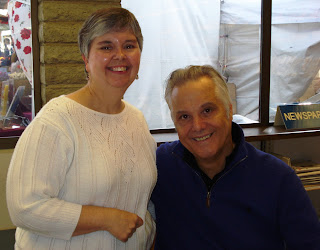
Buried Strangers
 Leighton Gage successfully takes advantage of an urban legend in his
latest Chief Inspector Mario Silva crime novel. Gage's novels highlight
all of the dirty politics and gritty life in Brazil, while examining the
country's crime and history. And, all of this is done in the framework of
Silva's police investigations.
Leighton Gage successfully takes advantage of an urban legend in his
latest Chief Inspector Mario Silva crime novel. Gage's novels highlight
all of the dirty politics and gritty life in Brazil, while examining the
country's crime and history. And, all of this is done in the framework of
Silva's police investigations.
When a dog found a bone in the rain forest outside São Paulo, it led to
the discovery of an unmarked cemetery. Mario Silva, Brazil's top cop, was
called in because the clandestine cemetery contained thirty-seven corpses,
many of them children, and the bodies were buried in family groups. Silva
realized, even if his boss didn't, that they might be looking at one of
Brazil's all-time great serial killers.
But, in Brazil, nothing is what it seems. Silva and his team work
clandestinely, hiding the investigation from his boss. What do all of the
bodies have in common, and what is the link to the medical community? One
pathologist is afraid to suggest that body parts are missing. When one
policeman is blown up, and one of Silva's team disappears, he's determined
to bring the case to a successful conclusion.
Silva successfully maneuvers through the corrupt politics and life in
Brazil, a country where bribes are a way of life, hundreds of policemen
are killed by political groups and criminals, people live in poverty in
shantytowns, and medical care can be bought by the highest bidder. Gage's
novels are successful because of the character of Silva, a man trying to
find justice in a corrupt world. If the police didn't share that dark
humor common among those working with life and death, these novels might
be too depressing. But, the comic relief allows for alleviation of the
tension of the stories.
Buried Strangers, like Blood
of the Wicked, allows the reader to follow an intense
investigation, knowing Mario Silva will take us safely through the dangers
and traps of Brazil.
Leighton Gage's website is www.leightongage.com
Buried Strangers by Leighton Gage. Soho Press, ©2009. ISBN
978-1-56947-514-0 (hardcover), 320p.
lholstine@yahoo.com
book blog: http://lesasbookcritiques.blogspot.com
"Reach librarians, and you reach the world." Betty Webb
|
|
Award-winning mystery author, Louise
Penny's new book, A Rule Against Murder, debuts this week.

By:
Lesa
Holstine Glendale Daily Planet Book Topics Editor
 This is not an unbiased book review. I'm a big fan of Louise Penny's
Armand Gamache mysteries. In the first books, beginning with the
award-winning Still Life, she introduced us to Gamache, the
Chief Homicide Inspector for the Sûreté in Quebec, and the timeless
village of Three Pines. She's taken us through three seasons filled with
murder investigations, and a emotionally draining threat hanging over
Gamache's head. We were ready for a break, right along with her
detective.
This is not an unbiased book review. I'm a big fan of Louise Penny's
Armand Gamache mysteries. In the first books, beginning with the
award-winning Still Life, she introduced us to Gamache, the
Chief Homicide Inspector for the Sûreté in Quebec, and the timeless
village of Three Pines. She's taken us through three seasons filled with
murder investigations, and a emotionally draining threat hanging over
Gamache's head. We were ready for a break, right along with her
detective.
A Rule Against Murder takes Gamache and the readers into an
Agatha Christie traditional vacation, with the dark overtones that Penny
masters. For thirty-four years, Armand and his wife, Reine-Marie, have
taken their summer vacation to coincide with their wedding anniversary
on Canada Day. This year, as always, they planned their retreat at
Manoir Bellechasse, a quiet resort in the woods, with a wonderful chef,
a superb maître d', and a beloved owner. They weren't planning on the
disruption of the Finney family reunion, or an unusual death.
As in a Christie mystery, Penny's tribute is a story set in an isolated
lodge, with a limited group of suspects, family members and retainers,
with the detective on the spot. Fortunately, Armand Gamache has the
added expertise of his squad, familiar characters to readers. And, two
members of the Finney family are familiar, when Three Pines residents,
Peter and Clara Morrow, show up late for their reunion.
Penny's story has extra layers that always make her mysteries
fascinating. Readers who hungered for more information about Reine-Marie
will be pleased with the time spent on Armand's family life. His family
is quite a contrast to the divided, unhappy Finneys.
The conversations in Penny's books are always treasures. The owner's
comment that there is a rule against murder at the Manoir Bellechasse
leads to a telling story. The sculptor, Pelletier, has a provocative
comment, that God is a serial killer. And, there's my favorite comment,
when Gamache talks about his wife, a librarian. "But you want
murderous feelings? Hang around librarians," confided Gamache.
"All that silence. Gives them ideas."
Louise Penny is a master of the traditional mystery. Armand Gamache
might have been forced to take a busman's holiday, but it was a vacation
readers will treasure, in A Rule Against Murder.
Louise Penny's website is www.louisepenny.com
A Rule Against Murder by Louise Penny. St. Martin's Minotaur, ©2009.
ISBN 9780312377021 (hardcover), 336p.
lholstine@yahoo.com
book
blog:
http://lesasbookcritiques.blogspot.com
Book Launch for Donis Casey
at The Poisoned Pen

By:
Lesa
Holstine Glendale Daily Planet Book Topics Editor
It was a nice crowd that showed up at The
Poisoned Pen Bookstore in Scottsdale for the book launch of Donis
Casey's The Sky Took Him, the fourth Alafair Tucker
mystery. And, few of them knew there would be pies - chocolate pie
from a recipe from Casey's new book, and vinegar pie from her next
one.
Barbara Peters, bookstore owner, and Casey's editor, held a
free-ranging conversation with Casey, while they waited for the
audience to gather. They discussed the name of an earlier book, Hornswoggled,
and even library budget problems. Peters does a television show
for the Scottsdale Library, working for $1 a year, but that was
even under discussion for budget cuts. The show was defended to
city council, but is still in jeopardy since the entire cable
department might be eliminated. Donis then said it's a shame that
libraries face budget cuts during times of bad economies, because
people turn to their libraries, and library use goes up at times
like this.
 To start the discussion of The Sky Took Him, Peters
mentioned that the book had received a starred review in Publishers
Weekly. Donis said she loves this book. She put so much
effort into making it smooth, trying not to put in too much
information. She had so much information she could have put into
the book.
To start the discussion of The Sky Took Him, Peters
mentioned that the book had received a starred review in Publishers
Weekly. Donis said she loves this book. She put so much
effort into making it smooth, trying not to put in too much
information. She had so much information she could have put into
the book.
Alafair travels in this book. In the first three books in the
series, Alafair lives in Boynton, in eastern Oklahoma. In this
one, she takes the train to Enid, OK with her oldest daughter,
Martha, and her youngest, Grace. Enid, in the northwestern part of
the state, is a whole new world. It's still the Wild West, while
the eastern part of the state was very southern. In 1894, Enid
opened with a land run. By 1915, the timeframe of this book, it
was a well-to-do town. Enid still celebrates Pioneers Day, but in
1915, it was called Founders Day, a celebration of the founding of
the town twenty-two years earlier.
The Cherokee Strip was prairie, flat grasslands, owned by the
Cherokee, who rented the land to cattle ranchers. The Cherokee
finally sold the land to the United States. The strip, and the
town, was opened up with a land run. People were allowed to go in
ahead of time, and pick out land they would like to own. If they
claimed it, they could own 160 sq. acres for a homestead. On,
Sept. 16, 1894, at noon, people lined up on the starting line.
When the gun was fired, they took off, on foot, horseback, and
Conestoga wagon, trying to run to the land, and stake a claim, by
driving a stake into the property. Then they would have to live on
it for two years. There were some people who snuck in early, and,
they were called Sooners. This is the background for The Sky
Took Him.
At the beginning of the book, Alafair does her family duty, going
to visit her sister whose husband is dying. Something that
happened twenty-two years earlier, from the time of the land run,
comes back to influence current events. Casey said she used
descriptions of the Founders Day parade from the newspaper at the
time, the Enid Daily Eagle. She said the descriptions
were some of the things she had to leave out. Peters said that's
why some authors use afterwords, for stuff they don't want to let
go.
Casey said Enid was rich at the time, with cattle, land and an oil
boom in the early 1900s. Alafair's niece's husband had sunk money
into a wildcat oil well. Casey set it in the field where one of
the largest oil strikes came in.
She said oil wells would get gummed up. To clear out the well,
they would send a torpedo down, made from nitroglycerin. Men who
specialized in this were called shooters. Often, they had one eye,
or one hand. They received extra pay, and no one would insure
them. Donis thought this would be an interesting way to kill
someone. So, she did research, although she said with Homeland
Security, she was worried about doing research on nitroglycerin
and explosions from home. (She joked and said she did her research
on the Tempe Public Library's computers - one more reason to be
grateful for libraries.) She found an expert who recommended a
book called Is There Nitroglycerin in This?, about
explosions.
Barbara Peters mentioned that she was glad to see Alafair get out
of town. Donis said when Hornswoggled came out Peters
told her to be careful about having all her murders occur in a
small town. She needed to avoid the "Cabot Cove
syndrome".
Casey told the audience how she started The Sky Took Him.
She and her husband went to Enid to visit his sister, and they
went to a restaurant called Pastimes Restaurant, converted from an
old laundry. On the walls, there were pictures of Enid from 1910.
One street scene showed Klein's Department Store. While her
husband and sister-in-law bickered over the check, Donis zoned
out, and suddenly she could see Alafair and Martha walk into
Klein's. She wondered what they were doing in Enid, and why they
were shopping. The first scene she wrote was the shopping trip to
Klein's.
Barbara Peters commented that Alafair needed a trip, because of
the backbreaking work in her life. As the mother of ten, and a
rancher's life, her life consisted of hard work, and meals. Casey
agreed, saying that she thinks Alafair appreciated the break. When
she first saw the guest room at her sister's, she was struck by
the luxury and size of the room. But, she started to appreciate
it.
An audience member mentioned Alice, one of Alafair's daughters,
saying there had been trouble between Alice and her mother because
Alice wanted to marry a rich man. Donis said that Alice had seen
her mother's hard life, and she didn't want to marry a poor
farmer. This caused a rift between the two in Hornswoggled.
Casey hinted at a future book, saying Alice's story isn't over.
She also said there are certain themes she carries through all of
the books. And, she said Alafair might take another trip, since
she had mentioned in this book that her other sister lived in
Tempe.
Peters, as her editor, cautioned Casey to watch her timeframe,
saying she'd gone from 1908 to 1915 so far, and she didn't want to
move too fast. However, after discussion, Casey said she could
take the series up to World War II, with an aging Alafair. They
agreed that a writer has to continue writing interesting stories
that people enjoy.
The discussion ranged back to the work that Alafair did. An early
book had a chapter about laundry for twelve people. In another
book, Alafair was hanging clothes. They said soap making is coming
back, so maybe she could discuss that. Casey mentioned butchering,
and food preservation. She said her grandfather used to butcher
one hog a year, and they used every bit of the hog. She mentioned
future books set during WWI could deal with austerity, since there
were meatless Mondays.
It's hard to pick and choose the historical facts to deal with,
according to Casey, who said she isn't writing history books.
Alafair is only concerned with the news that affects her
personally. There's no TV, to bring the world closer. The draft
only started in 1917, after the U.S. was in the war. And, one of
her sons, Gee Dub, will be 21 then. At first they only took single
men, 21-38, then the war expanded so they took anyone they could
get. In this book, The Sky Took Him, Alafair and her
sister mention the sinking of the Lusitania, and Alafair's German
prospective son-in-law.
In many ways, the rural area in the earlier books, and the city of
Enid in the present one is almost like having two centuries going
on at the same time. Enid was a city, with indoor plumbing,
electricity, and refrigeration. Peters said Alafair had to have
been changed by the experience. Donis Casey said Martha had been
changed by the experiences of Hornswoggled. Martha is a
more modern woman than Alafair. She works, and she's interested in
Women's Suffrage. A lot of the relationship between Martha and
Alafair is similar to that between Donis and her own mother.
When Barbara said she would give extra points to anyone who
guessed the ending, she said it's her business to read mysteries,
and she had been surprised. Donis said she herself had been
surprised by something in the ending.
Peters commented that one of the greatest joys of being an editor
is the relationship with authors, and getting to help them. Casey
responded that good editors are worth their weight in gold.
Barbara said when one of the Poisoned Pen mysteries gets a bad
review, she takes it personally. What did she miss? On the other
hand, sometimes she edits it so much that she no longer cares.
Peters also said technology is the enemy of the mystery. Cell
phones, GPS, and DNA make it difficult to write crime novels. One
of the audience members said, on the other hand, it makes historic
mysteries more appealing.
When she was asked about Alafair's name, Donis said it was her
great-grandmother's name. All of the family names are taken from
Donis' family. And, she showed us the cover of The Sky Took
Him. The picture of the oil well is an actual well, taken
from an Enid Historical Society picture. And, the picture of the
girl? Donis Casey.
Donis Casey's website is www.doniscasey.com.
The Sky Took Him by Donis Casey. Poisoned Pen Press, ©2009. ISBN
978-1-59058-571-9 (hardcover), 252p.
lholstine@yahoo.com
book
blog: http://lesasbookcritiques.blogspot.com
"Reach librarians, and you reach the
world." Betty Webb
|
The Sky Took Him

By:
Lesa
Holstine Glendale Daily Planet Book Topics Editor
 No other mystery author brings the American past to life for me as Donis
Casey does. Her new book, The Sky Took Him, is the fourth in
the fascinating Alafair Tucker series. Her books are always intriguing,
and this one is particularly complicated, but it's what she does with
everyday life in Oklahoma in the early twentieth century that continues
to draw me back.
No other mystery author brings the American past to life for me as Donis
Casey does. Her new book, The Sky Took Him, is the fourth in
the fascinating Alafair Tucker series. Her books are always intriguing,
and this one is particularly complicated, but it's what she does with
everyday life in Oklahoma in the early twentieth century that continues
to draw me back.
When the story opens, Alafair and two of her daughters, her oldest,
Martha, and her youngest, Grace, are on the train to Enid, Oklahoma.
Alafair's younger sister, Ruth Ann, asked her to come because Ruth Ann's
husband, Lester, is dying. When they arrive, they find that Lester is as
bad off as everyone said, but there are other family problems. Ruth
Ann's son-in-law, Kenneth, has disappeared on a business trip just when
his wife, Olivia, and the family, need him the most. Ruth Ann and Olivia
are confident he'll be back shortly, but the longer Alafair stays, the
more she learns about Kenneth's business problems, and his dealings with
a ruthless man in town, the more concerned she grows. And, she and
little Grace seem to share some troubling dreams.
As usual, Casey provides mystery readers with a complicated story. But,
she also tells the story of life in the early twentieth century. Martha
is a modern working woman, proud of her job, and unwilling to give it up
for marriage. Casey tells of the changing role of women, the Oklahoma
oil fields, and, in this book, the story of the run for land in
Oklahoma. It's hard to believe that at the time of the book, 1915, Enid
was just celebrating twenty-two years as a city with a Founder's Day
Jubilee.
The Sky Took Him has mystery, a little romance, history,
recipes, and Founder's Day. The book contains fine details of daily
life, and family life, in 1915, as well as the foreshadowing of war.
It's hard to believe it's just two weeks in Alafair Tucker's life
because The Sky Took Him is so rich in detail. Donis Casey
continues to grow as an author of fascinating historical mysteries.
Donis Casey's website is www.doniscasey.com.
Casey will be discussing The Sky Took Him at the debut program at
Poisoned Pen Bookstore in Scottsdale on Saturday, Jan. 17 at 2 p.m. Hope
to see you there!
The Sky Took Him by Donis Casey. Poisoned Pen Press, ©2009. ISBN
978-1-59058-571-9 (hardcover), 252p.
lholstine@yahoo.com
book blog: http://lesasbookcritiques.blogspot.com
"Reach librarians, and you reach the world." Betty Webb
|
| |
Ding
Dong Dead

By:
Lesa
Holstine Glendale Daily Planet Book Topics Editor
 Deb Baker writes two mystery series. One is her Yooper series, books set
in Michigan's Upper Peninsula, featuring Gertie Johnson. It's fun, but I
prefer the Gretchen Birch Dolls to Die For series. This doll collecting
mystery series is set in Phoenix, and the humor isn't quite as broad.
The books are still funny, including Baker's latest one, Ding Dong
Dead.
Deb Baker writes two mystery series. One is her Yooper series, books set
in Michigan's Upper Peninsula, featuring Gertie Johnson. It's fun, but I
prefer the Gretchen Birch Dolls to Die For series. This doll collecting
mystery series is set in Phoenix, and the humor isn't quite as broad.
The books are still funny, including Baker's latest one, Ding Dong
Dead.
Gretchen is quite hopeful about her developing relationship with Police
Detective Matt Albright, but he always seems to be called away at
inopportune times. Just as things are getting a little cozy, he's called
to a cemetery, and has to take her along. There, they find the body of a
woman, who turns out to be an old friend of Gretchen's mother, and the
scrawled message, "Die, Dolly, Die".
Gretchen knows she shouldn't get involved, but her aunt, Nina, had read
the tarot cards, and only saw danger in her future. She warned her not
to continue on her present ways, which meant helping with the new museum
for the Phoenix Dollers, or directing their fundraising play. Gretchen
scoffs at her eccentric aunt when she insists they should check out the
museum for a ghost. But, maybe there is something to Nina's worries. The
Birch women are threatened, and they find a body. Gretchen just knows
Matt could use a little help on his investigation; help that she, Nina,
and Gretchen's mother, Caroline, could provide.
Baker's strength in both series is her characters. Sixty-six-year-old
Gertie is a unique character, quite an oddball in Baker's Yooper series.
She's also one of Gretchen Birch's aunts, which is makes a connection
between the two series. The other aunt, Nina,in this series, is
eccentric, with her ability to train miniature dogs, and her obsessions,
such as tarot and ghost hunting. Caroline is actually the rational
character in the Doll books, a well-known writer and doll restorer.
Gretchen is more insecure, and scared, but she was involved with a
tragedy earlier in life.
This is one more cozy series, though, in which the main character pokes
into her police detective boyfriend's investigation. It's not a book for
those who can't suspend disbelief. It's almost a rule in cozies -
amateur sleuth dates a cop, and pries, despite the wishes of the police.
Like other cozies from Berkley Prime Crime, it has a hobby theme, in
this case, doll collecting. And, the books include very interesting
facts about dolls.
Ding Dong Dead offers fun characters, a cozy plot, and
interesting facts about hobbies. And, Baker does an excellent job
describing the Phoenix setting. What more do you want in a cozy?
Deb Baker's website is www.debbakerbooks.com
Ding Dong Dead by Deb Baker. Berkley Prime Crime, ©2008. ISBN
9780425225028 (paperback), 272p.
|
| |
|
Ding
Dong Dead

By:
Lesa
Holstine Glendale Daily Planet Book Topics Editor
 Deb Baker writes two mystery series. One is her Yooper
series, books set in Michigan's Upper Peninsula,
featuring Gertie Johnson. It's fun, but I prefer the
Gretchen Birch Dolls to Die For series. This doll
collecting mystery series is set in Phoenix, and the
humor isn't quite as broad. The books are still funny,
including Baker's latest one, Ding Dong Dead.
Deb Baker writes two mystery series. One is her Yooper
series, books set in Michigan's Upper Peninsula,
featuring Gertie Johnson. It's fun, but I prefer the
Gretchen Birch Dolls to Die For series. This doll
collecting mystery series is set in Phoenix, and the
humor isn't quite as broad. The books are still funny,
including Baker's latest one, Ding Dong Dead.
Gretchen is quite hopeful about her developing
relationship with Police Detective Matt Albright, but he
always seems to be called away at inopportune times.
Just as things are getting a little cozy, he's called to
a cemetery, and has to take her along. There, they find
the body of a woman, who turns out to be an old friend
of Gretchen's mother, and the scrawled message,
"Die, Dolly, Die".
Gretchen knows she shouldn't get involved, but her aunt,
Nina, had read the tarot cards, and only saw danger in
her future. She warned her not to continue on her
present ways, which meant helping with the new museum
for the Phoenix Dollers, or directing their fundraising
play. Gretchen scoffs at her eccentric aunt when she
insists they should check out the museum for a ghost.
But, maybe there is something to Nina's worries. The
Birch women are threatened, and they find a body.
Gretchen just knows Matt could use a little help on his
investigation; help that she, Nina, and Gretchen's
mother, Caroline, could provide.
Baker's strength in both series is her characters.
Sixty-six-year-old Gertie is a unique character, quite
an oddball in Baker's Yooper series. She's also one of
Gretchen Birch's aunts, which is makes a connection
between the two series. The other aunt, Nina,in this
series, is eccentric, with her ability to train
miniature dogs, and her obsessions, such as tarot and
ghost hunting. Caroline is actually the rational
character in the Doll books, a well-known writer and
doll restorer. Gretchen is more insecure, and scared,
but she was involved with a tragedy earlier in life.
This is one more cozy series, though, in which the main
character pokes into her police detective boyfriend's
investigation. It's not a book for those who can't
suspend disbelief. It's almost a rule in cozies -
amateur sleuth dates a cop, and pries, despite the
wishes of the police. Like other cozies from Berkley
Prime Crime, it has a hobby theme, in this case, doll
collecting. And, the books include very interesting
facts about dolls.
Ding Dong Dead offers fun characters, a cozy
plot, and interesting facts about hobbies. And, Baker
does an excellent job describing the Phoenix setting.
What more do you want in a cozy?
Deb Baker's website is www.debbakerbooks.com
Ding Dong Dead by Deb Baker. Berkley Prime Crime, ©2008.
ISBN 9780425225028 (paperback), 272p.
See more book topics HERE>>
The Sky
Took Him

By:
Lesa
Holstine Glendale Daily Planet Book Topics Editor
 No other mystery author brings the American past to
life for me as Donis Casey does. Her new book, The
Sky Took Him, is the fourth in the fascinating
Alafair Tucker series. Her books are always
intriguing, and this one is particularly complicated,
but it's what she does with everyday life in Oklahoma
in the early twentieth century that continues to draw
me back.
No other mystery author brings the American past to
life for me as Donis Casey does. Her new book, The
Sky Took Him, is the fourth in the fascinating
Alafair Tucker series. Her books are always
intriguing, and this one is particularly complicated,
but it's what she does with everyday life in Oklahoma
in the early twentieth century that continues to draw
me back.
When the story opens, Alafair and two of her
daughters, her oldest, Martha, and her youngest,
Grace, are on the train to Enid, Oklahoma. Alafair's
younger sister, Ruth Ann, asked her to come because
Ruth Ann's husband, Lester, is dying. When they
arrive, they find that Lester is as bad off as
everyone said, but there are other family problems.
Ruth Ann's son-in-law, Kenneth, has disappeared on a
business trip just when his wife, Olivia, and the
family, need him the most. Ruth Ann and Olivia are
confident he'll be back shortly, but the longer
Alafair stays, the more she learns about Kenneth's
business problems, and his dealings with a ruthless
man in town, the more concerned she grows. And, she
and little Grace seem to share some troubling dreams.
As usual, Casey provides mystery readers with a
complicated story. But, she also tells the story of
life in the early twentieth century. Martha is a
modern working woman, proud of her job, and unwilling
to give it up for marriage. Casey tells of the
changing role of women, the Oklahoma oil fields, and,
in this book, the story of the run for land in
Oklahoma. It's hard to believe that at the time of the
book, 1915, Enid was just celebrating twenty-two years
as a city with a Founder's Day Jubilee.
The Sky Took Him has mystery, a little
romance, history, recipes, and Founder's Day. The book
contains fine details of daily life, and family life,
in 1915, as well as the foreshadowing of war. It's
hard to believe it's just two weeks in Alafair
Tucker's life because The Sky Took Him is so
rich in detail. Donis Casey continues to grow as an
author of fascinating historical mysteries.
Donis Casey's website is www.doniscasey.com.
Casey will be discussing The Sky Took Him at the debut
program at Poisoned Pen Bookstore in Scottsdale on
Saturday, Jan. 17 at 2 p.m. Hope to see you there!
The Sky Took Him by Donis Casey. Poisoned Pen Press,
©2009. ISBN 978-1-59058-571-9 (hardcover), 252p.
See more book topics HERE>>
|
|
|
|
The Anteater of Death - Betty
Webb

By:
Lesa
Holstine Glendale Daily Planet Book Topics Editor
When one of your favorite mystery authors makes a
departure from their regular series, do you follow along? Do you worry
about the new characters, and whether you'll be just as happy with the
new series? I've been disappointed at times. I've read every one of
Robert B. Parker's Spenser books, but I don't care about his characters,
Jesse Stone or Sunny Randall.
Betty Webb is well-known for her Lena Jones series, and, naturally,
since they're set here in Arizona, they are particularly popular here.
These are somewhat dark books. Betty herself says that the first one, Desert
Noir, sets the tone. So, when she started a new series, a slightly
lighter one set in a zoo, readers might have worried a little. There's
no need to worry. The Anteater of Death is a stunning debut for
the Zoo Mysteries featuring Teddy Bentley. 
Was Lucy, the anteater, framed? Theodora "Teddy" Bentley was
the zookeeper who found a body in the anteater's enclosure at the
private Gunn Zoo in California. She worried about her beloved anteater's
fate, until she learned Lucy didn't kill the wealthy victim, the husband
of one of the Gunn family members. However, she was even more sure that
a fellow zookeeper wasn't the killer when Zorah was arrested for the
murder. With the sheriff convinced he arrested the killer, Teddy
realizes she's the only one who cares enough to find a murderer who is
threatening her beloved zoo.
The odds are stacked against Teddy. The sheriff is her old boyfriend,
Joe Rejas. She and Joe were separated when her socialite mother sent her
to boarding school in high school. They both married others, but now
they're back in Gunn Landing. She has to fight her attraction to Joe,
not only to find a killer, but to protect her zany mother and her
scoundrel of a father, a likable con man. She also has to contend with
the large, extended Gunn family, and the complications of the Gunn
Family Trust, a trust that supports the zoo, but could also doom it.
Webb's new mystery is a remarkable book, combining fascinating facts of
animal and zoo life with a complicated plot. There's an interesting cast
of characters, all with unique traits that animate them. Teddy and her
family have a complex relationship that can be amusing, and, for Teddy,
frustrating at times. Teddy, and her love of the zoo animals, bring this
book to life. Webb's knowledge of zoos and animals shine through in a
story that wouldn't be nearly as interesting without the animals.
Betty Webb's fans won't be disappointed. She continues to educate
readers, this time about zoos and animals. Fans of her Lena Jones series
shouldn't hesitate to pick up this mystery. The Anteater of Death
is an outstanding traditional mystery. It should bring new readers to
Webb's challenging books.
Betty Webb's website is www.bettywebb-zoomystery.com.
She also blogs at http://bloggingwebb.blogspot.com.
The Anteater of Death by Betty Webb. Poisoned Pen Press, ©2008. ISBN
9781590585603 (hardcover), 261p. (Also available in Large Print and
compact disc)
Betty Webb will
appear at the Velma Teague Library on Tuesday, Feb. 17 at 10 a.m. as
part of the Authors @ The Teague series.
Judge Lynn Toler Appeared for Authors @ The
Teague

By:
Lesa
Holstine Glendale Daily Planet Book Topics Editor
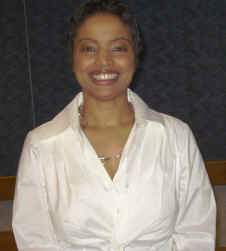 Judge
Lynn Toler, author of My Mother's Rules, and star of TV's
Divorce Court, appeared at the Velma Teague Library as part of
the Authors @ The Teague series on Saturday, Jan. 10. If her
television audiences enjoy her comments half as much as the
audience for her recent appearance did, she must be a ratings
success. Judge
Lynn Toler, author of My Mother's Rules, and star of TV's
Divorce Court, appeared at the Velma Teague Library as part of
the Authors @ The Teague series on Saturday, Jan. 10. If her
television audiences enjoy her comments half as much as the
audience for her recent appearance did, she must be a ratings
success.
Lynn Toler is originally from Columbus, Ohio. She received her
BA from Harvard University, and her JD from the University of
Pennsylvania, before spending ten years as a practicing
attorney, and then seven years as administrative judge of
Cleveland Heights Municipal Court. In 2001, she hosted the TV
show Power of Attorney. In 2007, she began appearing as the
judge on Divorce Court. She's married, with two children.
Judge Toler - Photo
by Lesa Holstine
Somewhere in there, she decided she wanted to do a memoir with
rules attached. She said when she was most successful with
cases, she used the lessons her mother taught her. But, when she
told her mother she was writing a book, the book that became My
Mother's Rules, her mother got mad.
Toler's mother had a number of reasons she didn't want the book
written. She told her, "I don't want you writing a book
about my life. I've already lived it." Her mother said, you
don't have a job. What are you doing writing? Get a job. The
most important reason was that Lynn's mother didn't want her to
tell the story of her father. Toler's father was bi-polar, with
psychotic episodes. He was a brilliant man, with an I.Q. of 145.
He was born in West Virginia, and worked coal mines to put
himself through school to become a lawyer. But Judge Toler's
father was already dead by this time. He left her and her sister
trust funds, and her mother is living on her trust. Toler's
mother didn't want her ridiculing Bill Toler. She took great
care in addressing the subject of her father.
And, Toler's mother said she didn't have any rules. She didn't,
but they're Judge Toler's rules, based on what she was taught.
She set her mother's intellect and lessons in a shape and form
to pass them on.
Judge Toler's mother was born in Chicago to a young mother, who
was ugly poor. She put the children in an orphanage on and off
because she couldn't afford to feed them. But, she always came
back to get them, and Toler's mother always appreciated that.
Toler's mother married her father, a man whose first wife had
committed him to Chillicothe State Mental Institution in Ohio.
Lynn's mother stabilized him. He could be relentless, but her
mother handled him. When Toler's father went on a tear, she'd
load the two girls up in the car, and they'd sleep at the
drive-in movies. Lynn's mother couldn't fix her father, but she
could contain him.
And, she made sure her two daughters were educated. She got them
to school every day. They were signed up for every
extracurricular class there was in Columbus, Ohio. Toler said
she took ballet, track, gymnastics, violin (which she hated),
piano, and baton twirling. Her mother held the family together.
One of the girls, Lynn, went to Harvard, and her sister went to
Dartmouth. Judge Toler said she's considered the failure in the
family because she's not a doctor. Her sister is a neurologist.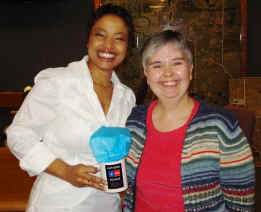
Judge Toler said don't let anyone tell you they don't feel
powerful when they're on the bench. They do a schedule, and tell
everyone what to do. Tell them to show up at 9 a.m., and who's
going to make you show up then? She felt as if she had some
power as she told defendants what to do. But, then she had her
"frequent fliers" who appeared more than once. And,
she took it as a personal failure if people came back. Then
there were the moments when someone hung their head, and said
they got it, Judge. She realized those moments came about when
she used the rules that came from her mother.
Judge Toler and
Lesa Holstine - Photo By Bette Sharpe
Toler's mother said people do things because of what they feel,
not what they know. You have to talk to who they are to get them
to understand.
It was almost impossible to insult Toler's mother. She said an
insult spoke to the person who passed it on. Check to see if the
insult is right, and if it is, you're a better person because of
it. If you don't get insulted, it kills the insult. And, Judge
Toler learned to handle things with humor.
People used to comment to Lynn's mother that she didn't get into
Harvard Law after going to Harvard undergrad. It almost became a
comedy routine that she did with her mother. She admitted she
goofed off, and wasted her parents' money. Toler said her best
moments were authored by her mother, who went to junior college,
and didn't finish that because she married. But, the evidence of
her mother's brilliance was Lynn's father, her sister, and
herself. She made their lives a successful situation. So,
Toler's job was to show her mother was right, without telling
bad things about her father.
Judge Toler read the opening of her book, Her Mother's Rules, in
which she discusses a time when she wouldn't come out of the
closet as a child. Her mother's biggest fear was that Lynn would
inherit her father's problem. Toler said she has a number of
fears. She's afraid to drive, and afraid to fly. Her mother
taught her to act in opposition, and face your fears. Make sure
you have a good view of who you are. She said she knows what's
wrong with her. She talks too much, too fast, and too loud. She
likes to talk, which is why she became a judge, got on TV, and
is paid to talk. She also worries too much.
In Her Mother's Rules, Judge Toler uses examples of people who
appeared before her on the bench. They broke rules, and there
are consequences.
She told the audience she would give them the inner scoop on
Divorce Court. They called her on Wednesday, and offered her the
job, asking her if she could be there on Friday. She said, no,
she had a family, and arrangements to make, but she could be
there on Monday. She's been appearing on the show since 2007.
She knows it's not Masterpiece Theater, but, hopefully, it's
funny. She tries to teach people, using humor. People watch the
show, and sometimes have lives that relate to the episodes, and
they can learn from the situations. She gets mail from people
who say they had a situation, and they liked what she had to
say.
Judge Toler says she tapes 23 days a year. She thinks the people
are interesting. She goes to work, and has a good time.
Everything she does well on the show, she does as a function of
what her mother taught her. The show is meant to be funny. She
doesn't take herself too seriously. She addressed the men in the
audience, and said she hoped they didn't take it personally, but
she went to an all girls school until she was eighteen, and she
had no use for men. She thought they were horrible. Then, her
hormones kicked in.
She said she's OK with everything in her life. Judge Lynn Toler
said, "The past is what you decide it's going to be."
You can make it an excuse to use every excuse in the book for
your life, or you can use it as a reason to be strong.
She said she has a PIP, a Personal Improvement Program. She's
always on one. Her whole life is a continuation and process.
A member of the audience asked what her mother thought of the
book. Lynn said she read the first three pages, cried, and said
she couldn't read it. She's never read the book. And, she
doesn't want to go to Divorce Court, because she doesn't want to
be introduced. But, Lynn said she's going to get her there in
March for a taping.
Toler said it wasn't a difficult book to write because she led
with her own weaknesses. She can't spell, can't cook. She admits
what she did in college. She wasted her parents' money because
she played in college. The hard part was that her mother didn't
want her to write the book. They were close, and they talk
everyday. Her mother was upset with her when she was writing the
book. She would only give her cursory answers to questions.
Finally, she told her she wouldn't write the book if she didn't
want her to, but her mother told her it was her life, too, so
she wouldn't ask her not to write it. Her mother understands it
now, and is OK with it, although she didn't want her to do it.
She said her mother was worried about what she'd say about her
Daddy. There were people in the audience who spoke up, and said,
it wasn't my father, it was my mother, or someone else in the
family. Toler acknowledged there were other people in the
audience who had lived it. You feel isolated when no one knows
you're living it. You feel very alone.
Judge Toler was asked, why Phoenix? She said her husband likes
Phoenix. She was commuting from Cleveland to L.A., and he wanted
a warm climate. She wanted to live in a community with families,
and it had to be a place with regular flights to L.A. Her
choices were Phoenix or Vegas. She has the community she wants
to live in here in Phoenix.
One audience member said she was amazed people would go on the
show and bare everything. Judge Toler said she knows why people
go on the show, because the limo drivers tell her.
1. Women want to be heard, and they want someone in authority to
say to the man, you did her wrong. They want someone to hear
their story. They want vindication.
2. Then there are the people who want to be on TV, and they
don't care how they get there.
Divorce Court flies people out, and picks them up at the
airport. They get to go to L.A., and they get a tape afterward.
It's the highlight of their lives.
Divorce Court doesn't pay a fee or for the judgment. Some shows
do. They fly them out, pay for their hotel room, gives them $250
for an appearance fee, in case they want to get a new outfit for
TV. But, they don't pay the judgment. It is binding arbitration,
though. The parties are contractually bound in front of the
judge.
She was asked if she can practice law in California, and she
said, no. Judge Toler passed the bar in Ohio. She thinks she'll
try to pass the bar in Arizona, though. One audience member said
he watches her show everyday, and she's wise young woman for her
age.
Judge Toler did say they have a harder time getting people on
their show than some do. They walk a thin line, because there is
stuff you can't show on daytime TV dealing with divorce. They
try to find the people that are in between, and are interesting.
They can't be retiring and shy. They have to be vociferous, and
loud, but with a true story. The producers sift through the
applications to find personality, a story, and something to
arbitrate.
Since she'd pointed out her husband in the audience, when she
said he drives her, she was asked how they met. She met him at a
Cleveland Cavaliers basketball game when she was 27. The late
Congresswoman, Stephanie Tubbs Jones, was a judge at the time.
She walked up to her, and said, "Do you have
somebody?" When she said no, she said, "Come
here." Jones' husband, and the man that would become
Toler's husband, were at the bar. Jones married them two years
later.
When audience members shared their family stories, Toler said,
those are shining examples as how you keep secrets in difficult
times. No one knows what you went through, and how hard it was.
When it's your parent, it's your world, and you don't take it
out of the house. Lynn's mother never called the police. And,
her father's first wife had put him into a mental hospital. He
made her promise never to put him in the state mental hospital,
only in private facilities.
She was asked if she has any goals in life? Lynn Toler said she
wants to write a novel. She's started three, and they were no
good. But, that's a major goal. And, she wants employment
security, so she's always looking for other work.
The last question was about the eight-year-old boy accused of
murder here in Arizona. She said there is nothing between
juvenile and adult, and that needs to be changed, with something
that spans that age gap. An eight-year-old can't think things
through. We have thirteen-year-olds who get sentenced for life,
but they don't have a reasoning process yet. We should rewrite
the laws for juveniles and adults. They need to be fixed.
Judge Lynn Toler presented a warm, enjoyable program, filled
with laughter, to an appreciative audience. After autographing
books, she was presented with a gift of an Authors @ The Teague
mug.
Judge Lynn Toler has already blogged about the program, on her
blog at http://tinyurl.com/8jljkh.
My Mother's Rules: A Practical Guide to Becoming an Emotional
Genius by Lynn Toler. Agate Bolden, ©2007. ISBN 9781932841220
(paperback), 300p.
|
| |
|
Jana Bommersbach's
Appearance
at Velma Teague Library

By:
Lesa
Holstine Glendale Daily Planet Book Topics Editor
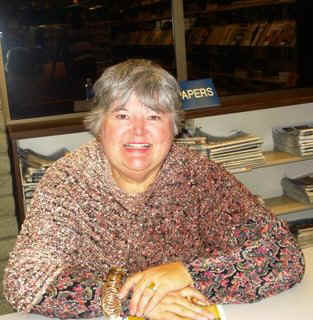 The Velma Teague Library was fortunate to host Jana Bommersbach for the
latest Authors @ The Teague program. Bommersbach is an award-winning
journalist, and the author of the true crime book, The
Trunk Murderess: Winnie Ruth Judd. Now, she has a new true crime book,
another one about a Phoenix murder, Bones in the Desert.
The Velma Teague Library was fortunate to host Jana Bommersbach for the
latest Authors @ The Teague program. Bommersbach is an award-winning
journalist, and the author of the true crime book, The
Trunk Murderess: Winnie Ruth Judd. Now, she has a new true crime book,
another one about a Phoenix murder, Bones in the Desert.
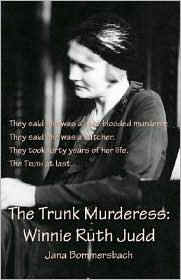
Bommersbach began the program by saying people
ask her how a fun-loving, happy person like her could write about murders.
She said she's fascinated by murders involving women. Her first book, The
Trunk Murderess, is her beloved book, the love of her life. But, it came
out in 1992, and it took her that long to find another book to write, a
story that spoke to her.
Bones in the Desert is the story of Loretta
Bowersock, mother of Terri of Terri's Design and Consign. It was reported
that Loretta died, then her boyfriend, Taw Benderly, said she disappeared.
Loretta went missing, and then Taw killed himself, which was the final
insult to the family. He left no note saying where Loretta's body was. It
was an insult to everyone who loved Loretta.
This case became famous in Arizona. Terri was
well-known, and anyone who knew Terri, knew her mother. People had a real
sense of personal connection to them because of their TV commercials. They
had a sense they knew someone who had been murdered. People felt grief for
Terri, that she did not have a body to bury. There were lots of pieces of
this case that upset people.
Bommersbach was in North Dakota with her own
parents over Christmas when this crime happened. It was in January, after
her return, that she heard Terri on TV talking about her mother missing in
the desert. Jana immediately called Terri, and spent an hour talking to
her on the phone. Terri was the first person Jana knew in her life who had
a parent murdered. Bommersbach asked Terri if she could write about it,
and what had been discovered. Terri said, oh you wouldn't believe what
they had discovered.
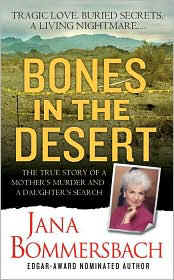 Phoenix
Magazine carried Bommersbach's first article about the crime, called
"Where Is My Mother?" Thirteen months later, Loretta's body was
found. Hundreds of people had searched the desert. Jana was so close to
her own mother that this case disturbed her. A family doing rock hounding
found Loretta's bones in the desert, and called the police, and waited.
The autopsy and teeth revealed the body was Loretta's. Phoenix
Magazine carried Bommersbach's first article about the crime, called
"Where Is My Mother?" Thirteen months later, Loretta's body was
found. Hundreds of people had searched the desert. Jana was so close to
her own mother that this case disturbed her. A family doing rock hounding
found Loretta's bones in the desert, and called the police, and waited.
The autopsy and teeth revealed the body was Loretta's.
"He Buried My Mother By a Blue Motel"
was the second story that ran in Phoenix. Psychics flocked to the story.
Dozens of them were interested in helping Terri. Some were well-meaning;
some helpful; some not. Terri was grasping for answers. The police said
Taw was the suspect. He was dead, so they were satisfied, and walked away
from the case. The police went on, and Terri was left on her own.
Psychics said they saw a lot of blue around
Loretta. Bommersbach said anyone who knows the Arizona desert knows the
desert "wears yellow and purple like school colors." There are
different colors, but the only blue in the desert is the sky. When they
finally found the body, it was near a hotel on I-8 on the road to San
Diego. Jana said there must have been a sale on blue paint that year,
because everything around the hotel was blue, including an old truck.
Terri's brother was skeptical, saying psychics always pick a primary
color. But, two police said one psychic was right on target. A New York
agent liked the story, and contacted Bommersbach to see if she would
develop it into a book.
Jana Bommersbach said Loretta's case was a
classic case of elder abuse, and this was a way to tell the story of elder
abuse. Phoenix, and Arizona, are #1 in a lot of bad things. But, they have
the first and only shelter devoted to elder abuse in the nation. Doves
Shelter was opened by the Area Agency on Aging. Terri operates a small
shop with all profits going to Doves. When Bommersbach wrote a column
about Doves, she met the local cops assigned to elder abuse. Only Phoenix
and San Diego have units assigned to it. She discovered that elder abuse
is very long term; it goes on for years, and it could be verbal, physical,
emotional or sexual, or a combination. It can go on for years until
something crashes, and the victim needs a break.
Loretta discovered the treachery of her boyfriend
of eighteen years. She discovered the level of his exploitation. Loretta
was professionally dressed that day, but with her shoes off, as so many
people are who work at home. She tried to confront Taw and throw him out.
They surmise she had a violent, angry response to his treachery because of
the type of person she was. Both people are now dead who were involved.
There is a thin line between abuse and murder. Taw crossed it when he put
a bag around Loretta's head, and strangled her.
Jana Bommersbach's dream is that someone will
read Bones in the Desert while barefoot, put on their shoes, and walk out
the door. She wants them to read the book, and see there is a way out.
Jana said it was a difficult book to write. She prayed for a different
ending for it the entire time she wrote the book. Since then, she's heard
from famous women in Phoenix who said they were in that situation, and got
out. She did a recent signing with Terri, and someone bought 9 copies,
saying she had sisters and friends who needed to read it.
Bommersbach said she wrote the book while she was
in Brainard, Minnesota. She never spends summers in Arizona. But, two
summers ago, in 2007, she found a house on a lake to rent. It was a
wonderful summer. Her parents came, and celebrated her father's 85th
birthday there. Her brothers both married, and honeymooned there. Jana's
dad died the following spring, so she's grateful she had a magnificent
summer with her family while she wrote the book. She finds it incongruous
that she was writing about a family torn apart, while she had a
magnificent summer with hers.
Bones in the Desert is doing extremely well. It
was #2 on the list of bestselling crime books. Terri and Jana are trying
to get on Oprah. Terri's been on before, as a successful businesswoman who
was dyslexic. They're hoping that contact will help. Billie Jean King and
Lily Tomlin both read the book. It's been well-received in Arizona. The
publisher is printing another 4,000 copies. Jana said she's hoping people
are buying and learning from it.
Jana was asked about her background, so she gave
us her biography. She was born in Fargo, North Dakota on Dec. 5, 1945.
She's a product of North Dakota, and the women's movement. She went to the
University of North Dakota, and her first job after graduation was in
urban Michigan, in Flint. She said she had a lot of growing up to do, and
received quite an education living there. She was from a white community,
where she didn't know any blacks, and hadn't lived in a city. She won her
first national award while in Flint.
Bommersbach went to grad school for journalism at
the University of Michigan. She was student body president, winning
against a law school student. She discovered she didn't like politics, and
she'd rather be a reporter reporting on politics than on the other side.
When she graduated, she had hoped to go east, and
work for the Washington Post. But, it was hard to get a job, and she was
offered a job at The Arizona Republic. So she drove out, and found Arizona
was a weird place. She was a Democrat who had campaigned against Barry
Goldwater. She met him, and came to love Goldwater. But, it was weird out
here, and The Arizona Republic was a conservative paper. She asked herself
what she was doing here. She finally decided they needed her her. She
helped to organize a union. She finally left because she couldn't work for
them anymore. She went to New Times, and worked there for twelve years,
and was even owner for a while. In 1992, she wrote about Winnie Ruth Judd,
and she left to write the book. She got an interview with Ruth. She is
proud that The Trunk Murderess was nominated for an Edgar Allan Poe Award
for best nonfiction that year.
Then, Bommersbach started a column for Phoenix
Magazine. She's been writing that for fifteen years. She did commentary
for Channel 3 for seven years at 7:15 AM, but had to get up at 4 AM, read
three newspapers, and then go on at 7:15 to talk about three things that
ticked her off that day. After 9/11, she was laid off at Channel 3. She
still had her Phoenix Magazine job, and she did "Books and
Company," for the local PBS station, Channel 8, for five or six
seasons. Now, she's freelancing. She does a column for True West Magazine.
Then this book, Bones in the Desertt, came along. She's still finding a
way to pay the rent.
When asked if she'd ever write about the murder
of Arizona Republic reporter, Don Bolles, Bommersbach said everyone
expected her to write it. She got into the hospital that night with his
wife, who heard Jana's voice in the hall, and insisted they let her in.
Don was a good friend. But, she never covered the stories in 1976 when his
car was blown up. In 1996, at New Times, she did a retrospective. They did
a special report about the murder that opened up new avenues. But, the
crime is so old that people have served time, and walked away. There are
so many holes in the story, and Bommersbach said she doesn't know where
else to look to write that book. But, the police tend to cling to a
decision because they don't want to face reality. This case is always an
open case. There have been twenty-five bad books about it, but she sees no
reason to write about it until the case is solved.
Bommersbach was asked if Loretta was an unusual
victim for this type of violence, and she said, no. Domestic violence
happens all the time. That generation of women always had someone tell
them what to do for their entire lives. The first time they were
independent was when they were widowed. But, many of them felt it was
better to have a bad man that to be alone.
She was asked if any family members suspected
Loretta would be murdered, and she said no. Prior to the murder, one
sister watched every episode of America's Most Wanted, thinking Taw would
show up. He was nice, good-looking, a gourmet cook with a great voice.
But, the family suspected he would bankrupt Loretta, not kill her.
Within hours of the death, psychics sought out
Terri. Terri and her mother were estranged because of Taw, and they had
just started getting together. Loretta fought with Terri over Taw. Terri
had a tough time on various levels. Bommersbach said Terri was
"Searching in death for a mother she'd already lost in life."
_______________________________________
It was a pleasure to host Jana Bommersbach at the
Velma Teague Library. She drew the largest crowd we have ever had for an
Authors @ The Teague program. Bette Sharpe, our Programming Librarian,
presented Jana with a thank you gift, the new Authors @ The Teague mug.
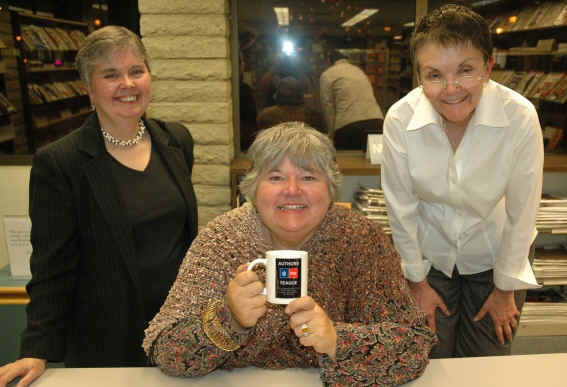
(Photo - Lesa Holstine, Jana Bommersbach, and
Bette Sharpe - copyright Ed Sharpe, CouryGraph Productions)
Jana Bommersbach's website is www.janabommersbach.com
Bones in the Desert: The True Story of a Mother's
Murder and a Daughter's Search by Jana Bommersbach, ©2008. St. Martin's
True Crime, ©2008. ISBN 9780312947415 (paperback), 278p.
The Trunk Murderess: Winnie Ruth Judd by Jana
Bommersbach, Poisoned Pen Press, published 2003, ISBN 9781590580646
(paperback), 280p.

Lesa
Holstine Glendale Daily Planet Book Topics Editor
lholstine@yahoo.com
book blog: http://lesasbookcritiques.blogspot.com
"Reach librarians, and you reach the
world." Betty Webb
|
|
Jana Bommersbach - Authors @ The
Teague - Story and video in prep stage! What a night!
She discussed and signed her latest true crime book, Bones in the
Desert.
 It’s
a special December Authors @ The Teague program when award-winning
journalist and author, Jana Bommersbach, appeared at the
Velma Teague Branch Library on Dec. 4 at 6:30 PM.
Bommersbach discussed and signed her latest true crime
book, Bones in the Desert. It’s
a special December Authors @ The Teague program when award-winning
journalist and author, Jana Bommersbach, appeared at the
Velma Teague Branch Library on Dec. 4 at 6:30 PM.
Bommersbach discussed and signed her latest true crime
book, Bones in the Desert.
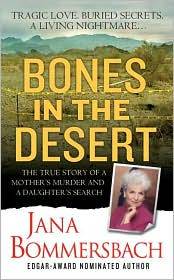
Bones in the
Desert is the story of Loretta Bowersock and her daughter, Terri,
who ran a multimillion dollar furniture store based in Tempe.
These two women seemed to be living the American
Dream…until one man decided to destroy it.
+++++++
Jana's
debut book, "The Trunk Murderess: Winnie Ruth Judd," was
nominated for the prestigious Edgar Allan Poe Award and won
Arizona's only literary prize.
Her commentaries for public television won two
national awards, while her reporting on commercial television won
a Rocky Mountain Emmy.
She has been honored with the
Toastmasters International Communication and Leadership Award and
by the Arizona Chapter of the ACLU for her leadership in bold,
honest commentaries. Besides, she gives great parties, is a
gourmet cook, has never seen a hobby that doesn't interest her and
is a fanatic about Christmas.
|
Authors @ the
Teague Brings Jana Bommersbach to Glendale’s Downtown Library
on December 4
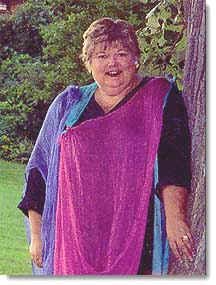 GLENDALE,
Ariz. – Jana Bommersbach, a well-known author and
journalist, will be stopping by Velma Teague Branch Library, 7010
N. 58th Ave., at 7 p.m. on Thursday, Dec. 4 to talk about her
latest book, “Bones in the Desert: The True Story of a Mother’s
Murder and a Daughter’s Search.” GLENDALE,
Ariz. – Jana Bommersbach, a well-known author and
journalist, will be stopping by Velma Teague Branch Library, 7010
N. 58th Ave., at 7 p.m. on Thursday, Dec. 4 to talk about her
latest book, “Bones in the Desert: The True Story of a Mother’s
Murder and a Daughter’s Search.”
In December 2004, Loretta
Bowersock, mother of prominent businesswoman Terri Bowersock of
Terri’s Design and Consign stores, disappeared. Mother and
daughter had been extremely close, starting Terri’s namesake
multimillion dollar business together. In 1986, Loretta met the
man of her dreams, but those dreams eventually turned into a
nightmare…and cost Loretta her life.
Bommersbach will share what she
discovered while investigating this tragic story.
She is also the author of “The
Trunk Murderess: Winnie Ruth Judd,” which was nominated for an
Edgar Allan Poe Award and won Arizona's only literary
prize. She has been Arizona's Journalist of the Year, won a
Regional Emmy for her television writing and has been honored with
two lifetime achievement awards for her newspaper and magazine
reporting. She lives in Phoenix.
Books will be available for
purchase. For reservations and information about this program,
call 623-930-3431.
|
|

Lesa
Holstine Glendale Daily Planet Book Topics Editor
Brent Ghelfi for Authors @ The
Teague
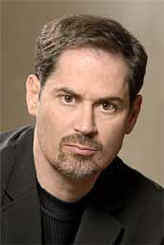 It's
hard to believe that Brent Ghelfi writes dark thrillers set in Russia. He
is one of the nicest authors to appear at the Velma Teague Library for the
Authors @ The Teague series. It's
hard to believe that Brent Ghelfi writes dark thrillers set in Russia. He
is one of the nicest authors to appear at the Velma Teague Library for the
Authors @ The Teague series.
Ghelfi grew up in Phoenix and went to college at
Arizona State University, majoring in business. He went to Law School in
Tucson, and now lives in Phoenix with his wife, Lisa, and their two
children. And, he answered a question librarians always want to know,
about his library experience. Brent said he grew up using the Yucca Branch
of the Phoenix Public Library regularly. He said he's always been a
reader.
So, how did a Phoenix resident become the writer
of thrillers set in Russia? As a student, he went to the U.S.S.R., and it
was a gray, drab country. The people were rigid, and didn't want to talk
to foreigners. Of course, the tour guides were monitored by the KGB. They
couldn't stray off script, and they had to file reports. If they strayed
or submitted an erroneous report, they were reported by their monitors.
The U.S.S.R. was such a drab, gray country that Ghelfi never thought of it
as fascinating.
In the 1990s, he went back to Moscow on business.
It was as if someone had turned on a light. The country had been dark and
foreboding, but now Red Square was brightly lit. There was American-style
consumerism. Now, he regularly goes back to Russia, but if you stray
outside the big cities, it's still desolate and poverty-stricken, not that
different from life there in the Middle Ages.
In the 2000s, Ghelfi was in Moscow, writing other
books. He stayed at the National Hotel, which had a beautiful view over
Red Square. During the Communist years, the CIA used to get rooms in the
National Hotel, and monitor the May Day parades from there, watching to
see where the leaders stood in relationship to each other to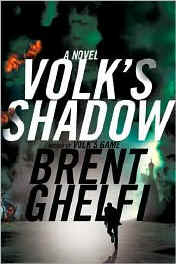 determine the power structure. Ghelfi had one of those rooms overlooking
the Square. One night, he saw a man walking on the wall, who cut through
security with no one stopping him. Then he disappeared. Ghelfi wondered
about the man. Who was he?
determine the power structure. Ghelfi had one of those rooms overlooking
the Square. One night, he saw a man walking on the wall, who cut through
security with no one stopping him. Then he disappeared. Ghelfi wondered
about the man. Who was he?
Ghelfi then came up with the sentence that
introduced Alexei Volkovoy, known as Volk. In Volk's Game, he describes
himself. "Dead mother, disappeared father, late-era Soveit poverty,
and five years of killing and worse in Chechnya." Volk is a metaphor
for modern-day Russia. He's part of the modern military, and the illegal
gangsterism that has spread throughout the world in the form of the
Russian Mafia. These strains both course through Volk, a dark conflicted
character who is broken in many ways. Ghelfi uses his books to loke at
modern-day Russia, with a character that represents Russia.
Volk's Game, the first book in the series, was
about the theft of a picture from the Hermitage. It's a self-examination
of Volk and the country, how they treat people, the country, and art. The
book was well-received. It was a finalist for the 2008 Barry Award for
best thriller, and it received excellent reviews. It's set in today's
world, a violent world that has extremes of very wealthy people and very
poor people. The poor were devastated when the U.S.S.R. fell. Pensioners
who could live on 300 rubles a month paid at the old rate, couldn't buy a
loaf of bread a month later. This is the setting of the book, and the
person of Volk.
Ghelfi said he continues to go back to Russia. It
has similar problems to the U.S. His current book, Volk's Shadow, is a
distorted look at us. Russia has a terrible terrorism problem. During the
1990s, and the Chechen Wars, there were apartment blasts, subway blasts,
and people killed. In 1995, Russia sent tanks into Chechnya and
obliterated it. It made the problem worse. Volk's Shadow deals with
terrorism, and an oil company that is blown up. Volk has to discover who
did it.
Brent Ghelfi went on to say that Putin discovered
that the person who controls the pipelines controls everything. Russia has
been aggressive in Chechnya because there's a major pipeline there. They
want to control the distribution of oil.
One other theme of the book is based on the
Rostov Ripper, who brutally murdered 52 people in a ten to fifteen year
spree. The authorities turned a blind eye to the similarities of the
crimes, denying there was a serial killer operating in Russia. The police
in Russia were political enforcers rather than criminal investigators.
Finally, they caught someone, and executed him, but they had put someone
else to death for the crimes earlier, and the murders continued. So, they
actually put two people to death for the killings. In Volk's Shadow, Volk
has to deal with similar murders. He explores all those old issues, since
he was a Communist and a member of the Secret Service. He's questioning
what's happening, and his role.
Ghelfi said the Volk series is not published in
Russia. It is published in countries all along the border, but not in
Russia itself. Volk's Game was optioned six months ago for a movie. But,
lots of books are optioned, and the movies are never made. He does think
the Volk movies might succeed right now because of the darkness of the
character. Dark movies are popular lately, and the grainy, fast pace would
work. Ghelfi's agent said they should have a script by the end of the
year. Volk is a terrific character, but the hesitation might come because
Hollywood is ethnocentric. They like American settings and characters.
He was asked if the thriller genre was
appropriate for the current times. Brent said in the early to mid-80's,
with MTV, television went from leisurely to fast-paced. Readers expect
what they read to mirror that. Even literary authors, such as Cormac
McCarthy, have gone to faster paced books. His book, The Road was an Oprah
selection, so it's accessible. Ghelfi said the best thrillers are
literary, and have subtext.
Ghelfi said he couldn't write about Russia
without writing about violence. The most ruthless, brutal men took over
companies after the fall of the Berlin Wall. Many were ex-KGB. Members of
the First Chief Directorate were sophisticated men who spoke multiple
languages, and, since they were responsible for foreign operations and
intelligence, they had contacts in other countries. Many became
billionaires from oil. Kidnapping is common in Russia. Criminals learned
on the ground that often a dead body is worth more than a live one after a
kidnapping because the burial rituals are important, and they can ask more
money. Rape, murder and theft were common in Chechnya. We like to think it
happened years ago with the Nazis or Stalin, but this is still happening
in our time. Putin's response to Georgia was to roll tanks into the
country. That's the same response Hitler had to Czechoslovakia, and Putin
used the same excuse, Russians in Georgia were not being treated well.
How did Ghelfi get into writing? He was always a
huge reader. He read all his life, since he was a kid. He had a break
after selling a company. He wrote a medical thriller that never sold,
although Hollywood is looking at it now.
Brent Ghelfi has a contract for two more Volk
books. The next one, called The VENONA Cable, has been sent to his editor.
It arises out of World War II, and cables that went to New York and
Moscow. The Americans broke the code, and continued the program working
with code until 1980. Ghelfi referred us to the National Security Agency's
website for information about the actual VENONA story. That site says,
"On 1 February 1943 the U.S. Army's Signal Intelligence Service, a
forerunner of the National Security Agency, began a small, very secret
program, later codenamed VENONA. The original object of the VENONA program
was to examine, and possibly exploit, encrypted Soviet diplomatic
communications. These messages had been accumulated by the Signal
Intelligence Service (later renamed the U.S. Army Signal Security Agency
and commonly called "Arlington Hall" after the Virginia location
of its headquarters) since 1939 but had not been studied previously.
American analysts discovered that these Soviet communications dealt with
not only diplomatic subjects but also espionage matters." The next
Volk book is about a dead body found on Volk's property, with a cable.
He went on to discuss the codebreakers and spies.
Julius Rosenberg was definitely guilty of the crimes he was executed for,
spying and sending information to Russia. He discussed Churchill's visit
to the U.S. to discuss a second front in Europe, and Stalin knew the
answer because officer sent the information from New York. The
codebreakers in Arlington Hall in Virginia dealth with 3000 cables.
The fourth Volk book will deal with college age
students murdered in Russia. Ghelfi has that one outlined.
In response to a question, he said he doesn't
speak Russian, but he fell in love with the Russian authors, and read
them. He said he receives comments sent from his publishers blogs, but he
can't read German or other languages, so he can't send those readers
appropriate answers.
There's a lot going on in the Volk thrillers, and
they're fast-paced. Readers can read them for the action and the pace. Or
they can read them on a deeper level, for the history, culture and
information about modern day Russia. Brent Ghelfi said Volk is very good
and very evil, trying to navigate his own life, and reconcile his sides,
trying to learn who he is.
Brent Ghelfi? He's an outstanding speaker, and
talented thriller writer. We're lucky to have the author of Volk's Game
and Volk's Shadow here in the Valley. We're very lucky he was willing to
speak for Authors @ The Teague.
Brent Ghelfi's website is http://www.brentghelfi.com
Volk's Shadow by Brent Ghelfi. Henry Holt and
Company, Inc., ©2008. ISBN 9780805082555 (hardcover), 320p.
Volk's Game by Brent Ghelfi. Henry Holt and
Company, Inc., ©2007. ISBN 9780805082548 (hardcover), 320p.

Lesa
Holstine Glendale Daily Planet
Book Topics
Editor
lholstine@yahoo.com
book blog: http://lesasbookcritiques.blogspot.com
http://www.glendaledailyplanet.com/book_topics.htm
"Reach librarians,
and you reach the world." Betty Webb
|
|
Larry Karp &
Michael Bowen for Authors @ The Teague

Lesa
Holstine Glendale Daily Planet Book Topics Editor
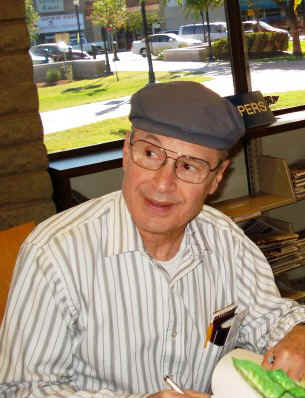
Mystery authors Larry Karp and Michael Bowen recently appeared for the
Authors @ The Teague series at the Velma Teague Library. Larry Karp kicked
off the program.
Karp's recent book is The King of Ragtime. One
hundred years ago, Scott Joplin and Irving Berlin both called themselves
"The King of Ragtime." Berlin's big hit, "Alexander's
Ragtime Band," was written in 1911. Scott Joplin moved to New York
City in 1907, wanting to legitimize ragtime. He wrote an opera, "Treemonisha",
and couldn't get it published. He submitted it to Irving Berlin's
publishing company, but it was rejected. When Joplin heard
"Alexander's Ragtime Band," he said it was his song. The opening
of his song, "A Real Slow Drag" sounds like "Alexander's
Ragtime Band." Was it plagiarized? Years later, Joplin's widow said
he had to rewrite it before publishing so he didn't get accused of
plagiarism.
Between 1911 and 1916, Joplin was sick with
cerebral syphilis. It was a disease that affected the brain, and people
died slowly. Judgement went. There were mood swings, and tremors. Joplin
died in 1917.
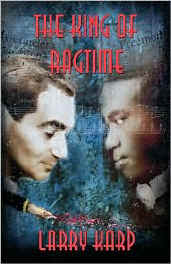 Karp
said he isn't a musician, but he reads ragtime history. He said before he
died Joplin was working on a musical drama called "If." Karp
questioned what was "If" about. He needed a link for The King of
Ragtime. So, he said, what would have happened if Joplin submitted the
drama to Irving Berlin. He said it was unlikely that a black man in 1911
would have succeeded in getting an opera or drama published. Joplin was
poor, and taught students. So, he created a student for Joplin, Martin
Niederhoffer, who was also a bookkeeper at Berlin's company. What would
happen if he asked Joplin to submit it, and offered to act as watchdog? It
could be an ideal situation for murder. Joplin or Berlin? Who really was
The King of Ragtime? Karp
said he isn't a musician, but he reads ragtime history. He said before he
died Joplin was working on a musical drama called "If." Karp
questioned what was "If" about. He needed a link for The King of
Ragtime. So, he said, what would have happened if Joplin submitted the
drama to Irving Berlin. He said it was unlikely that a black man in 1911
would have succeeded in getting an opera or drama published. Joplin was
poor, and taught students. So, he created a student for Joplin, Martin
Niederhoffer, who was also a bookkeeper at Berlin's company. What would
happen if he asked Joplin to submit it, and offered to act as watchdog? It
could be an ideal situation for murder. Joplin or Berlin? Who really was
The King of Ragtime?
The first book in the series, The Ragtime Kid,
came about because Karp was reading history. It's a fact that a white
music store owner in Sedalia, Missouri offered to publish "The Maple
Street Rag" in 1899. What induced John Stark to offer a royalties
contract to a black com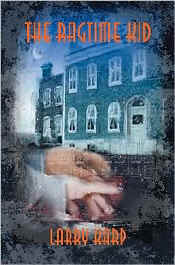 poser
at that time? Nothing in history explains it. Karp said he takes a known
history, and where there are holes, fills it with fiction to explain what
might have happened. The Ragtime Kid was a real person. In 1899, a
fifteen-year-old white boy hopped a freight train because he had to have
lessons from Scott Joplin. History leaves us puzzles. This is not history,
but historical fiction. poser
at that time? Nothing in history explains it. Karp said he takes a known
history, and where there are holes, fills it with fiction to explain what
might have happened. The Ragtime Kid was a real person. In 1899, a
fifteen-year-old white boy hopped a freight train because he had to have
lessons from Scott Joplin. History leaves us puzzles. This is not history,
but historical fiction.
When asked about his background, Larry Karp said
as a kid he lived in New York, and liked to write. But, in the 1950s, you
didn't tell your parents you wanted to be a writer. They had a family
physician who was a friend, and a legendary doctor. He made lifesaving
diagnosis, so Karp decided to become a doctor. He did alright, bu he
really wanted to write. So, fourteen years ago, he left medical work and
began to write. He started a mainstream novel about a music box
collector,, but his protagonist kept getting killed early in the book.
Finally a friend said, why don't you write it as a mystery. The book
became The Music Box Murders. He went on to write a couple more music box
books.
Karp wrote a book called First, Do No Harm, with
a medical setting. It was about a legendary doctor with a character flaw.
He said he wrote The Ragtime Kid about the birth
of ragtime. The King of Ragtime is about the death of ragtime. His third
book in the series will be about the beginning of the ragtime revival in
1951.
Karp said characters drive his books, and they
won't follow outlines. There was a ceremony in Sedalia in 1951, with a
plaque to honor Scott Joplin. There's a kid who wants to learn from the
Ragtime Kid, Joplin's student. What if the KKK wanted to blow up the high
school during the ceremony? Karp said in doing the research, he was in a
restaurant in Canada, and he asked a contractor he was with, how would you
blow up this place. So, they discussed the dynamite needed, and the plans.
When he got to Customs, he realized he had notes as to how to blow up
Hubbard High School. He didn't know if he should rip out the page, and eat
his notes. Then he saw the cameras. He said fortunately he and his wife
seemed like an innocent older couple, so they just let them through.
Karp said he thinks of the characters first when
he writes, then begins to write the story, until he hits a road block. He
works through the first draft, trying to get the story down. Then he
rewrites, and the story comes through. In the movie, "Finding
Forrester", Sean Connery's character tells a student, "Write the
first draft with your heart, and then you get your head to work."
That's how Karp does it.
Some of his research was done in Sedalia, in
local histories and local libraries. He said the Sedalia Carnegie Library
has histories of the town and people in a locked cabinet. One was just a
three page manuscript, "Sights and Sounds of Sedalia". He uses 1
to 2% of what he finds, just to advance the story, and show the setting
better.
When he wrote the first music box book, Karp was
lucky enough to sit down with his editor. She told him I'm sure this is
fascinating to music box collectors, but it's boring to me. So, he learned
to cut scenes when they don't advance the story. He doesn't want to
overuse his research. He said the web is terrific for research. They have
census figures that can tell him about his characters, and who they lived
with. Since he's not a musician, he attended ragtime festivals.
Larry Karp learned to write in the morning, when
it seems to flow. His writing is very cinematic. He sees the action as he
his the keys. He writes for four hours, has lunch, takes a walk to clear
his head, and then will either write more, or work on promotions of work,
and research. He writes regularly.
Michael Bowen said he writes what he calls a
"Plucky couple series." Plucky couples include Lord Peter Wimsey
and Harriet Vane, Nick and Nora Charles, or Jerry and Pam North.
Bowen attended Harvard Law School, and made
history when his class elected the first woman as President of the Harvard
Law Review. He referred to the recent election, and the so-called Bradley
effect, and said with the law school election, they had the choice of
voting for a man, or making history by voting for a woman. Bowen is a
trial lawyer, but he doesn't put his clients' problems into the books. He
writes about the emotional effects. He said he once had a death threat,
but his law partners said one death threat in 32 years meant he wasn't
working hard enough. At the time, they didn't have separate extensions.
The receptionist told him he'd had an interesting message. It said,
"Your contract will be terminated in 30 days." As a good lawyer,
he contacted the FBI, who listened and said they wouldn't take any action
unless something happened. As he was crossing the parking lot that night,
he thought, this is what it feels like.
Bowen's characters, Rep and Melissa Pennyworth,
are married and deeply in love. Rep went into Trademark & Copyright
Law because he wanted a nice, quiet predictable practice. His mother was
arrested for murder when he was just fifteen months old. His wife,
Melissa, is, by the time of the current book, Shoot the Lawyers Twice, an
Assistant Professor of English Lit. When the series began, she was
studying. The book is set in Milwaukee because she's now in a tenure track
position.
Michael Bowen said his characters are
"plucky couples" because, in his opinion, Gaudy Night by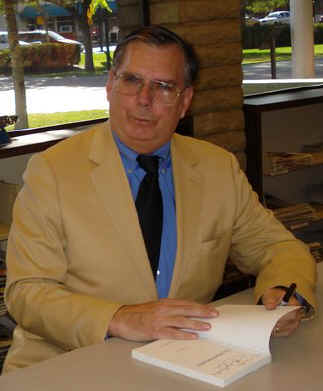 Dorothy L. Sayers is the greatest mystery ever written, and he admires
Lord Peter Wimsey and Harriet Vane. By the time of the Jerry and Pam North
mysteries, the female half of the "plucky couples" had become
unappealing. In the later incarnations, such as the Norths and Nick and
Nora Charles, the female role was to stumble across the corpse and get
herself into mortal danger so she could be rescued. And, she often
triggers a clue for the male.
Dorothy L. Sayers is the greatest mystery ever written, and he admires
Lord Peter Wimsey and Harriet Vane. By the time of the Jerry and Pam North
mysteries, the female half of the "plucky couples" had become
unappealing. In the later incarnations, such as the Norths and Nick and
Nora Charles, the female role was to stumble across the corpse and get
herself into mortal danger so she could be rescued. And, she often
triggers a clue for the male.
In Bowen's books, Melissa is a strong character.
He avoids some of the techniques used in writing about women detectives
now. Quite often, they have family members who taught them how to shoot,
defend themselves, etc. That's not really common. And, Melissa misses when
shooting at someone, and makes fun of herself.
Bowen said he had fun with his books. You should
have fun writing and reading. He uses banter, wordplay and satire. He has
poked fun at academic political correctness, and did a send up of the
mystery/thriller genre.
What made Bowen start writing mysteries? He tried
his first jury trial in 1978. It was a small case, but the jury took it
seriously, and they were out for a day and a half. He couldn't concentrate
on anything while waiting for the verdict. Bowen wasn't raised to think
much of mysteries. He picked one up, The Big Sleep by Raymond Chandler.
When reading a master, you normally don't say, that's a masterpiece. You
say, they make it look easy. So, Bowen thought, "I can do this."
His first book was very derivative, and no one will ever see it. But, he
found his voice, and something to write about. Bowen said the point of his
plucky couple mysteries is to have fun.
His next book might be called Standard Duty
Blues. It's a military term from the Naval Academy. He's talking to his
editor, Barbara Peters, from Poisoned Pen Press, about the book. He's been
very happy with Kill the Lawyers Twice. Bowen said Barbara Peters is the
most wonderful editor to work with.
Michael Bowen said his first book, Can't Miss,
was about the first woman to play Major League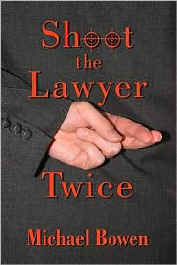 Baseball. He said none of his books have been bestsellers, and not even
midlist. He writes stuff that critics like, and people buy, but it doesn't
make him famous.
Baseball. He said none of his books have been bestsellers, and not even
midlist. He writes stuff that critics like, and people buy, but it doesn't
make him famous.
Here's what it's like to be in his category. He
was sent a slide of the cover art of the middle book in a five book
series. And, he told his editor he didn't like the art. The editor said
that was too bad, but they weren't changing it because the artist had been
paid. He asked why they sent him the cover for approval. She said it
wasn't for approval. They were just being polite.
He also had a title he really liked, but the
editor said the sales team didn't like it. He said but he wanted the
title. And she said when it's sales vs. talent, sales wins.
Michael Bowen said he writes when he can. His
partners play golf. He doesn't play golf; he writes while they golf. He
found that he has to stop before he wants to stop writing, so the next
time he can pick right up. He ended the program appropriately. You'll find
time to write if you want to.
Larry Karp and Michael Bowen were the latest
authors to appear for Authors @ The Teague.

Lesa
Holstine Glendale Daily Planet Book Topics Editor
lholstine@yahoo.com
book blog: http://lesasbookcritiques.blogspot.com
"Reach librarians, and you reach the
world." Betty Webb
|
Kerrie Droban for Authors
@ The Teague

Lesa
Holstine Glendale Daily Planet Book Topics Editor
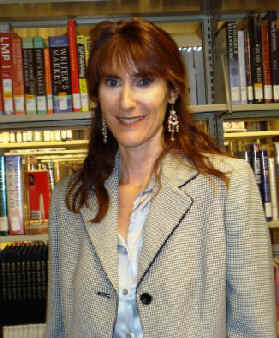
Kerrie Droban, author of Running with the Devil: The True story of
the ATF's Infiltration of the Hell's Angels, recently spoke at the
Velma Teague Library as part of the Authors @ The Teague series. The
book is the story of how the Hell's Angels were infiltrated in Arizona.
Droban is a criminal defense attorney who specializes in capital crimes,
working to save death row inmates. It was a challenge to write this
story about a sensational government sting in which the agents dodged
legal grenades and potential death threats. It was pure happenstance
that she was asked to write the book, particularly with her background.
Kerrie studied poetry with Caroline Kizer, and playwriting with Edward
Albee. When she was asked to write this book, her first reaction was to
turn it down. She had no background in research, other than when she
researched briefs. But, the story offered her the unique position to
write about unsung heroes, the ATF operatives, and tell the story of
their undercover work. It's a story of agents doing extraordinary
things, and then being discarded by their own agency.
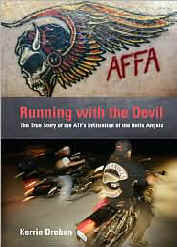 This sting in Running
with the Devil began in 2003. The talk in the book of war between
the Hell's Angels and the Mongols, a rival biker gang, foreshadowed
recent events in San Francisco. This sting in Running
with the Devil began in 2003. The talk in the book of war between
the Hell's Angels and the Mongols, a rival biker gang, foreshadowed
recent events in San Francisco.
Monikers are used in this book, so Droban doesn't out the agents. She
also will not reveal her sources. This was the first ever infiltration
of the Hell's Angels by law enforcement. It's difficult to get inside
the gang because probationers must spend one year or more as prospects.
This taxes government resources, so they can't easily spend the time
doing this kind of job. There were surveillance teams all over the
Valley, taking 500 or more people to monitor this job.
They used an informant with access to a group in Mexico and the Hell's
Angels here in the Valley to help the operatives assume the persona of
bikers in another gang. They had no actual plan. Instead, it was
dependant on Bird, the main operative, who brought over his own
confidential informant. The informant already had developed a persona,
and a rapport with a group in Bullhead City. The biggest problem was the
operatives didn't know how to ride bikes.
Bird was one member of the group. They used a detective out of Phoenix,
Timmy, who had martial arts training, as the enforcer. The operatives
stayed as close to the truth as possible in the stories they told. They
got tattoos, put on weight. Their goal was survival. They had to cast
people in roles so they could get a prospect for the Hell's Angels. They
used an operative named out of Miami, named Carlos, for four months. The
informant was made president, just to make introductions, and then they
wanted to get him out of it. However, the informant was enjoying his
power, and they went two weeks with no plans. Then they went to a rally,
and received an introduction to the president of the Mesa group, who
invited them to various events. The role of the confidential informant
was to get players in, help orchestrate the introductions, and get out.
As the case progressed, the operatives were tested with drugs, and
women. The ultimate test is to throw women at the bikers, since a fringe
benefit of bikers is the opportunity to bed women. They had a hard time
getting a woman to join, but finally they found an operative to play J.J.
She was just out of the academy, with no undercover experience. She was
naive enough to not know how dangerous her role was. However, she was a
catalyst for the case because it wouldn't have worked without her. J.J.
became Bird's "Old Lady," and acted as a mule as well, which
elevated her role, and allowed her to carry a gun. She was propositioned
a lot to haul guns and drugs across the border. She was integral to the
case. Gangs wanted both J.J. and Bird, but it was important that the
whole group stay together as a team.
The team joined a newly forming chapter in Skull Valley, one that took
them in. They were always tested. Would they kill for the club? They
devised a ruse by saying they had to kill a Mongol in Mexico. They got
the confidential informant out by sending him to Mexico. They sent a box
of stuff back to the chapter, with pictures and a Mongol vest to prove
they killed a Mongol.
The story of the team from Running with the Devil has been on
A&E and National Geographic channels. It's a landmark case that
other agencies are using to learn from. The operatives who worked the
case did it because it was the opportunity of a lifetime to work in the
guts of police work.
Bikers take drugs to keep them going, but the undercover operatives had
to go on stamina alone. They sometimes went with zero sleep. They'd have
post-traumatic stress. They slept in their clothes and boots, took turns
sleeping in the pads, and other groups crashed in theirs. They had to
stay alert. The lifestyle had no nutrition, since alcohol was often the
drug of choice for bikers. They would party all night, ride all day, and
it was exhausting for the operatives. The heat factor also had to be
taken into account in Arizona during the 18 month investigation.
Sometimes they suffered from heat stroke, but they had to go on. They
had to wear vests with their patches, and they couldn't take them off.
They were smelly and dirty because bikers don't wash them. The
operatives had costume problems, and sometimes worried their vests
weren't dirty enough. There were moments of humor for them, though.
There were some dangerous times in which they were almost executed. The
wanted an innocuous name for the operation, one that wouldn't sound like
an undercover operation, so they called it Operation Black Biscuit,
after a hockey puck. No other agencies knew what they were doing. At one
time, they were almost executed because they were on Phoenix turf, and
the head of the Phoenix Hot Heads, Chico, go mad about them being on his
turf. A DEA agent heard about it, and passed on the execution threat, or
the team would have been killed.
The real tragedy about the case is that there were indictments, but no
charges stuck. The operatives sacrificed eighteen months of their lives,
but nothing stuck. Bird was on the run for a long time, relocating his
family every couple weeks. Finally, he went public to make himself less
of a target. He lived in Tucson, and his house there was torched about a
month ago. It's not unusual for undercover agents to be tossed aside.
They don't do the job for recognition.
Since that time, biker gangs are recruiting off the street, which has
made them more volatile. The first confidential informant the group used
was working off weapons charges. CIs are shady characters. And, the
reason none of the charges stuck was because the operatives would not
disclose their CIs to the courts. Cases were dismissed because the
operatives would not release names. There was legal jousting behind the
scenes. And, legal forces wouldn't communicate between agencies. The ATF
won't share information with the FBI and the U.S. attorneys. Many of the
positions have to do with egos. There was a lot of politicking going on.
The entire eighteen month investigation was for naught. But, Kerrie
Droban had connections with some government agents, and she was asked to
write the book that became Running with the Devil, since
government agents can't sell their own story.
Has anything come of it? The question was asked as to whether they got
information that would be helpful in the future. Droban said they did
prove to the brass that they were doing intelligence gathering. The law
enforcement agents actually worked an innovative case. There were
intangibles, and they may never know the results. The Hell's Angels now
have a tainted public image. There were repercussions for the team.
They've received death threats, contract hits, and it has affected whole
families. In order to keep the stories as close to the truth as
possible, Bird involved his family. Timmy didn't.
Droban is working on a new book, tentatively called The Price.
A former member of the Pagan gang in Philadelphia wants her to write his
story. He had ties with the Philadelphia mob. It's called The Price
because he got it, and it's about the price he paid to be in the mob,
and to get out.
She was asked if she's afraid, and she said she does capital litigation,
so she meets with serial killers, and works with the worst of the worst.
She's not afraid. She sees herself as the conduit to the story. Her work
is done with interviews and recordings. It's not the kind of research
she can do in a library. But, she wants to write an accurate book. Her
main focus is to communicate something, and provide a voice of people
who can't speak.
Kerrie Droban provided that voice for Bird, and the other undercover
agents in the book, Running with the Devil: The True Story of the
ATF's Infiltration of the Hell's Angels.
Kerrie Droban's website is www.kerriedroban.com
Running with the Devil: The True Story of the ATF's Infiltration of the
Hell's Angels by Kerrie Droban. Globe Pequot Press, ©2007. ISBN
9781592289769 (hardcover), 232p.

lholstine@yahoo.com
book blog: http://lesasbookcritiques.blogspot.com
Book Topics - Glendale Daily
Planet
http://www.glendaledailyplanet.com/book_topics.htm
"Reach librarians, and you reach the world." - Betty
Webb
|
Authors
@ the Teague October 24, 2009 Special After Hours Program
featuring part of the Rolling Darkness Revue.
GLENDALE, Ariz.–We
travel back to an October night in 1933 and become part of the
in-studio audience at local radio station KRDR (66.6 khz) as the
hosts of the weekly “Spook Story Hour” entertain you –
until things begin to go horribly wrong.
This Halloween season, at 6 p.m. on
Friday, Oct. 24, Velma Teague Branch Library, 7010 N. 57th
Ave., played host to “The Rolling Darkness Revue,” a
traveling fraternity of some of horror fiction’s premier
talents, as they tuned to a midnight wavelength and an October
frequency in celebration of the genre’s favorite
holiday. Author Glen Hirshberg was on hand with stories
that the “Los Angeles Times” describes as “unsettling as
they are scary, as disturbing as they are profound.”
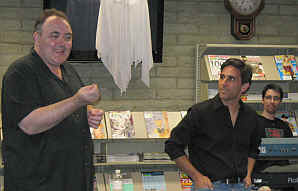 Mr.
Atkins new book is Moontown and at last night's
performance he read his short story, The Cubists Attorney.
Mr. Hirshberg read a selection from The Two Sams: Ghost
Stories, and is the author of American Morons. Mr.
Atkins new book is Moontown and at last night's
performance he read his short story, The Cubists Attorney.
Mr. Hirshberg read a selection from The Two Sams: Ghost
Stories, and is the author of American Morons.
Both authors were accompanied by David
Brewer on keyboards. The music and the quality of the
readings made this program more like theater. The
audience was appreciative the entertainment aspects as well as
the opportunity to talk with the visiting authors and to ask
them questions. Telling spooky stories around the campfire
I am sure is a classic for just about all of us. In last
night performance, we used a plastic pumpkin with its own
electric light. It seemed like a campfire though. It
must have been the voices, or the music or was it the lighting?
| |
"His skill at
drawing horrors out of commonplace situations peopled
with credibly drawn characters distinguishes these
subtle tales of the uncanny as some of the most
effective and chilling in contemporary weird
fiction."
- Publishers Weekly
|
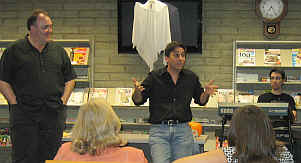
from
the left Author, Peter Atkins; author Glen Hirshberg
and musician David Brewer. |
Deborah
Shelley Appears for Authors @ The Teague
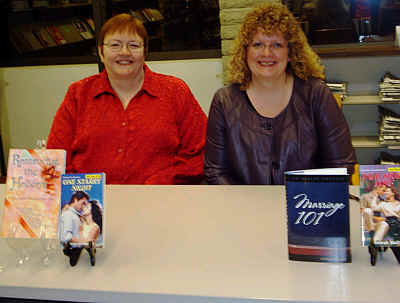
(Shelley Mosley and Deborah Mazoyer, writing team of Deborah
Shelley)
Romance writer, Deborah Shelley, appeared Thursday, Oct. 23 at
the Velma Teague Library, as part of The Authors @ The Teague
series. Actually, Deborah Shelley is two people, Shelley Mosley,
former Manager of the Velma Teague Library, and Deborah Mazoyer,
Director of Building Safety for the City of Glendale. The two
started writing together ten years ago when they worked together
on a project, benchmarking other cities' building projects.
After they wrote a 96 page report about building and zoing
departments, Shelley asked Deborah if she'd like to write a book
with her. They enjoyed writing together, and they've been
writing romantic comedies together ever since.
Their first romance published, Talk About Love, had a
print run of 35,000 with Precious Gems Romances. It's been
published in six languages besides English, and has had several
print runs in France. It was a Holt Medallion finalist, a Love
& Laughter Award finalist, and won the 1st Golden Synopsis
Award. However, soon after, the short romance market folded,
except for Harlequin. Deborah Shelley wrote small-town books,
which was not what Harlequin wanted. The authors like to write
about communities, but their books don't have enough sex for
some markets.
Marriage 101 is the authors' most recent romance.
Although it was a BookPage Notable Title, it is already out of
print. It sold out fast since it had a smaller print run.
Shelley Mosley said she saw it on the Internet for $65.
They also talked about Romancing the Holidays, a collection that
 includes a chapter for each month, and the romance is about a
holiday. Deborah Shelley wrote March, about Purim, the Jewish
holiday that celebrates Esther. They picked a Jewish holiday
because Shelley Mosley taught in a synagogue school for three
years. Their first book, Talk About Love, had a
Cherokee hero. They like to work diversity into their stories. Romancing
the Holidays was a Finalist for the Eppie Award, and was
featured in Booklist's Spotlight on Multicultural
Romance.
includes a chapter for each month, and the romance is about a
holiday. Deborah Shelley wrote March, about Purim, the Jewish
holiday that celebrates Esther. They picked a Jewish holiday
because Shelley Mosley taught in a synagogue school for three
years. Their first book, Talk About Love, had a
Cherokee hero. They like to work diversity into their stories. Romancing
the Holidays was a Finalist for the Eppie Award, and was
featured in Booklist's Spotlight on Multicultural
Romance.
Marriage 101 took the writing team years to write
because of Deborah's work schedule. In recent years, there was a
construction and building boom in Glendale, leading up to the
Super Bowl. They spent five years writing this one. The novel
has a high school setting, with teachers, the town, and
secondary characters.
In response to a question as to their writing techniques, they
said they don't each take a section. Unlike many other teams,
Deborah and Shelley write side by side, going through the entire
manuscript. They talk it through. They don't plot it ahead of
time, saying they're terrible plotters. Instead, they write and
see how it goes. Their characters develop as people as they go.
In fact, the characters start talking to them.
The first rule of writing says, "Write what you know."
Since Shelley Mosley was a librarian from a small town in
Kansas, their first book, Talk About Love, was about a
librarian, Stephanie. Stephanie has four Phoenix cops as
brothers, who dog her, and check out her dates, so she moves to
a small town where she falls in love with the police chief.
Deborah Shelley's second book capitalized on Deborah Mazoyer's
knowledge. It's in His Kiss is set in Scottsdale and
Phoenix, Arizona, in the construction industry. They have one
book called My Favorite Flavor in which an ice cream
taster and a personal chef lock horns. They said it was fun to
work on that one, tasting ice cream, and inventing flavors.
The story for One Starry Night came about because
Shelley Mosley's husband, David, has two Master's degrees, one
in Computer Science and one in Astronomy. He hates it when
people say he's an astrologer. There is supposed to be conflict
in the book, so Shelley thought it would be fun if an astronomer
and astrologer fell for each other. Shelley said she had written
a nice dedication to him, but after he said no way would an
astronomer fall for an astrologer, she made the dedication to
their editor.
Marriage 101 features a teacher of a relationships
class, who has never had a relationship. Her students rebel, and
dare the coach, Danny, to have a relationship with the teacher.
Right now, they're working on a romance called A Taste of
Decadence, set in an Alabama town named Decadence. It
features former peanut butter beauty queen and a big burly
construction manager who is visiting Decadence to help his
sister out while she's in the hospital. He has to take over her
beauty parlor, and he's the only one there when the heroine
comes in for a haircut.
The two authors said they learned a lesson at a Romance Writer's
conference in Vegas, when they pitched a story they hadn't
written, and someone bought it. They were then on a tight
schedule to deliver. They said with a pitch you have eight
minutes. It's like a job interview, but worse, because the book
is your baby. You have to present the story idea, and a hook.
It's almost like speed dating. And, some of the editors are
really young, so authors have to gear their pitch to the
editors' perspectives.
They said there are three secrets to writing romances.
1. Having cats
2. Eating chocolate
3. Drinking Diet Coke
There is conflict in their romances, but all romances have
happily-ever-after endings. Shelley said she reads a lot of
everything. Deborah's favorite books re mysteries and
historicals. She doesn't read the contemporary romances like
they write.
When someone asked if any of their books would be made into TV
shows or movies, they said the stories play in their minds as
movies. They both visualize them that way. They said they know
200 romance writers, and they know of only one who has been
approached for TV. Judy McCoy will have a TV series about a
dogwalker.
Shelley Mosley said she wrote several children's books, but none
have been accepted. That's the hardest market to break into.
When asked if they considered Christian fiction, they said they
do have a manuscript called A Bride for Pastor Tim. The
ladies of the church think their pastor has been single too
long, and they drag women to church. But, it's too secular for
the religious market and too religious for the secular market.
They said the market is closing for short romances. There's a
huge market for inspirational romances, and the other extreme,
erotica. Avalon is a publisher that still does sweet romances
with humor and conflict. When asked about self-publication, they
said it's too dicey. Distribution is too hard. Few
self-published books actually make it. The Christmas Box
and The Celestine Prophecy are two of the exceptions.
When asked if about their humor, they said it does come natural.
It's not hard to be witty. But, it can't be mean because they
have to have likable heroines. The secret to dialogue is to read
it aloud so it sounds natural.
Deborah Mazoyer and Shelley Mosley work together, side by side
on Monday or Thursday night, and Saturdays. When Shelley worked
for the City of Glendale, they wrote for 45 minutes at
lunchtime. Now, they're the successful writing team of Deborah
Shelley.
|
|
Stella Pope Duarte Appears For
Authors @ The Teague
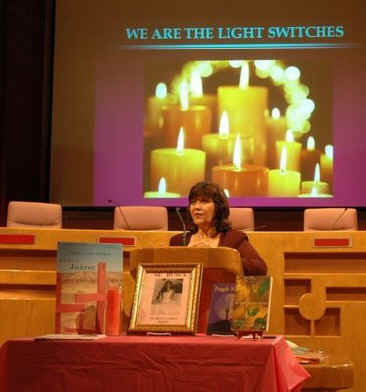
Stella Pope Duarte appeared as part of the Authors @ The Teague
series at the Velma Teague Library in Glendale, Arizona to
discuss her latest novel, If I Die in Juárez. Stella
teaches Creative Writing at Arizona State University West. She
also leads workshops and seminars on workshops and seminars
related to educational and counseling issues, women's rights,
writing, literacy, culture, Chicano/Chicana history, and
storytelling.
Duarte first started writing in 1995 when her deceased father
appeared to her in a dream. Since then, she's written a
collection of short stories, Fragile Night, a novel
called Let Their Spirits Dance, and, now, If I Die
in Juárez, a powerful novel about the murders and
disappearances of young women in Juárez, Mexico.
Why would Duarte write about such a tragic story? She's always
been attracted to helplessness. She said we are always loved,
and the families of the murdered and disappeared girls taught
her that love doesn't end at the grave. Love is the greatest
passion on earth. These young women and their families taught
her that.
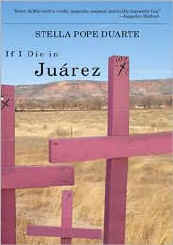 If I Die in Juárez has pink crosses on the cover.
Those pink crosses are in Mexico at sites where bodies of the
young women have been found. The book is dedicated to the hundreds
of young women who have disappeared, las desaparecidos, brutally
murdered in Ciudad Juárez, Chihuahua, Mexico. Juárez is right
across the border from El Paso, Texas, its sister city. Although
most of the women have disappeared from Juárez, some have also
disappeared from El Paso. There are over 5,000 women who have
disappeared from both sides of the border, and their bodies have
never been found.
If I Die in Juárez has pink crosses on the cover.
Those pink crosses are in Mexico at sites where bodies of the
young women have been found. The book is dedicated to the hundreds
of young women who have disappeared, las desaparecidos, brutally
murdered in Ciudad Juárez, Chihuahua, Mexico. Juárez is right
across the border from El Paso, Texas, its sister city. Although
most of the women have disappeared from Juárez, some have also
disappeared from El Paso. There are over 5,000 women who have
disappeared from both sides of the border, and their bodies have
never been found.
Family love gives Stella the strength to investigate these
murders, and write her novel. Her parents were Francisco Moreno
Duarte and Rosanna Pope Duarte. Stella said she was afraid when
she read about the murders and mutilations, and didn't want to
write the book. She got on her knees and prayed. The Spirit told
her to go back there and finish the book. She understood that
the people doing the murders should be afraid, not Stella.
Duarte went on to talk about archetypes and dreams. She said
dreams have a lot of meaning. The dreamer can interpret their
own dreams. She went back to the dream when her father appeared
to her. She was a college professor, raising kids, and when her
father appeared to her, it was right in front of her what she
needed to do next. Her father came to her, and took her by the
hand up a spiral staircase.
Stella came from a little barrio, la Sonorita Barrio in South
Phoenix. She was a Chicana, born in the United States, with
relatives in Mexico, and became a successful writer with a book
published by HarperCollins. Duarte said we're all mestizos, of
mixed race. Her Grandfather Pope was white. She said she found
wisdom in her mother who said, "Every mind is its own
world;" that we need to find a purpose on earth.
Stella Pope Duarte is a storyteller who mixes English and
Spanish fluently in her presentations. She is such an
outstanding storyteller that audiences can tell her meaning,
even when they don't speak Spanish. She told stories from
Mexican culture, and ended that part of her talk by saying,
"In the end, all you take with you in love." What
should you leave your children? Leave them your story. She said
what attracts your attention is your passion, and you should
follow it.
Stella followed her attraction, and passion, to the story of the
young women of Juárez. She originally read about three young
women, ages 16, 17, and 18 who were found naked, raped, tortured
and killed. They were employed in an American owned factory in Juárez.
Their murderers have never been found.
Duarte started this book in 2003. She had thought about it,
after reading the story, but she mentioned in a class that she
was going to write a story about the women in Juárez. When you
say it aloud, it puts a thought on another level. It becomes a
commitment.
Stella said readers shouldn't be afraid of the book, although
the subject sounds gruesome. She said we would walk in the shoes
of the girls, but would also triumph with the girls.
Stella Pope Duarte spent three and a half years of going back
and forth to Juárez. The city, Mexico's fourth largest one, is
now known as the "City of Murdered Women." The maquila
industry grew after the NAFTA Agreement of 1992. Juárez became
a Mecca for rural citizens seeking work in factories because the
corn markets collapsed after NAFTA, and the farms failed. There
are low wages in maquiladores, and most of factories are owned
by Americans. Women earn $4.50 a day. It's a machismo culture,
and men can treat women however they want. Now, women are
training their boys to respect their sisters and mothers, to try
to get past the machismo culture. However, society has given men
permission to murder the women of Juárez.
The victims in Juárez are young women, ages 12 to 22. Over 550
women have been murdered, and there have been over 130 actual
mutilations. Five thousand women have never been found. Sixty
percent of the victims were maquiladores, factory workers, from
poor, working families. Their bodies were dumped in the desert
and empty lots. The brutality of these crimes are recorded as
femicide, hatred against women. We cannot look away. There have
been a number of suspects, from an Egyptian, to gangs, to bus
drivers, to cartels. Duarte said she implicates the cartels in
her books. The cartels are the untouchables, and right now there
are cartel wars in Mexico. Diana Washington Valdez, the
journalist who has covered the story the best, has a death
contract on her from the cartels.
Duarte said her first book, Fragile Night, 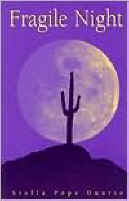 is about coming to terms with your dark parts, that you must
learn to come to terms with yourself, and what's going on in
your world.
is about coming to terms with your dark parts, that you must
learn to come to terms with yourself, and what's going on in
your world.
 Let Their Spirits Dance is about a family traveling to
the Vietnam Memorial, thirty years after the death of one of the
sons of the family. Duarte is meeting with a producer about
making that book into a film.
Let Their Spirits Dance is about a family traveling to
the Vietnam Memorial, thirty years after the death of one of the
sons of the family. Duarte is meeting with a producer about
making that book into a film.
She repeated that she wrote If I Die in Juárez because
she can't look away from helplessness. When you cross from El
Paso to Juárez, you're greeted by crosses.
The search for bodies is always going on. There are protesters
because women are angry. Mothers have been threatened if they
ask too many questions. Fathers feel guilt because they couldn't
protect their daughters. Investigators on both sides of the
border are working on the crimes. They are more organized in
forensics now because they're under pressure. And, anything that
gives attention to the murders puts the city under pressure.
They feel as if the world is watching them.
Sixty percent of the murders are girls from the factories,
because they walk home, and they're vulnerable. The murderers
prey on young women. They do the most harm they can. They want
to inflict pain because they know the women have people who will
cry for them.
Stella Pope Duarte is writing Women Who Live in Coffee Shops.
It's about the shrine to a ghost that is behind the convention
center in Tucson, the Wishing Shrine. The story is that the man
was murdered because he fell in love with the wrong woman in the
1870s. And, she just won the Chicano Literary Award from UCLA.
Thank you to Stella Pope Duarte for bringing If I Die in Juárez
to Authors @ The Teague.
Stella Pope Duarte's website is www.stellapopeduarte.com
If I Die in Juarez by Stella Pope Duarte. Univ of Arizona Pr.,
©2008. ISBN 9780816526673 (paperback), 328p.
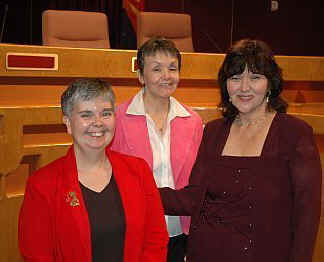
Photo: Lesa Holstine, Bette Sharpe(Programming Librarian), and
Stella Pope Duarte.
All photos: Ed Sharpe Glendale Daily Planet http://wwww.glendaledailyplanet.com
|
Poisoned Pen
Bookstore's 19th Anniversary

The Poisoned Pen Bookstore in Scottsdale, Arizona is one of the
treasures of the Valley. On Friday, Oct. 3, The Poisoned Pen celebrated
its nineteenth anniversary. This special bookstore is a full service
general bookstore with a specialty in crime fiction. Barbara Peters, the
owner, said she started the store nineteen years ago as a hobby. Now,
the store is in the fourth version, starting on the twentieth year.
The Poisoned Pen is the place to go to hear and meet authors. Just in
October, the store has already hosted the National Launch Party of
Phoenix Media Star Jana Bommersback for her new true-crime Bones in
the Desert, and Dennis Lehane, author of The Given Day.
Tess Gerritsen with her new book, The Keepsake, and Terry
Brooks, author of the Shannara books, are scheduled this month.
Over the years, the bookstore has received numerous honors. The store
won the 2001 Raven Award from the Mystery Writers of America!; it has
been Winner, The Arizona Republic and the New Times
Best of Phoenix and Best of Scottsdale, Best Bookstore!; and a Nominee, Publishers
Weekly's Bookseller of the Year.
 So, what's the future for this special bookstore in an age when so many
independent bookstores fold when owners move on? Barbara Peters, who now
refers to herself as a volunteer bookseller, spends a great deal of time
traveling. She's quoted as saying, "When I go traveling, no
paycheck goes with me. And there is no interruption in service to you
thanks to the admirable Poisoned Pen professionals. My status has been
more that of volunteer for several years in preparation for a new
generation of Poisoned Pen ownership. We want the transition to be as
seamless as possible."
So, what's the future for this special bookstore in an age when so many
independent bookstores fold when owners move on? Barbara Peters, who now
refers to herself as a volunteer bookseller, spends a great deal of time
traveling. She's quoted as saying, "When I go traveling, no
paycheck goes with me. And there is no interruption in service to you
thanks to the admirable Poisoned Pen professionals. My status has been
more that of volunteer for several years in preparation for a new
generation of Poisoned Pen ownership. We want the transition to be as
seamless as possible."
So, those of us who love The Poisoned Pen can look forward to more years
of enjoyment at the bookstore. Congratulations to The Poisoned Pen
Bookstore, and Barbara Peters, for nineteen years of service to the
reading community.
The Poisoned Pen Bookstore is located at 4014 N Goldwater Blvd., Suite
101, Scottsdale, Arizona 85251. Telephone:(888)560-9919 or
(480)947-2974.
Their website is www.poisonedpen.com

lholstine@yahoo.com
book blog: http://lesasbookcritiques.blogspot.com
Book Topics - Glendale
Daily Planet
http://www.glendaledailyplanet.com/book_topics.htm
"Reach librarians, and you reach the world." -
Betty Webb
|
|
Southwest Crime Ink Appears for
Authors @ The Teague
Sept. 20, 2008 at 2 p.m

Three of the members of
the Southwest Crime Ink writing group, Susan Cummins Miller, J.M. Hayes,
and Elizabeth Gunn came up from Tucson as part of the Authors @ The
Teague series. Gunn said they all write crime fiction, and they banded
together for the same reason wolves do, to hunt in a pack. They all
write mysteries, although their books are all very different.

Gunn writes straight procedures, and she researches relentlessly. Mike
Hayes writes books that are a farces with marginal realism. His books
are set in the Kansas flatlands. Susan Cummins Miller writes beautifully
detailed geological mysteries. They all belong to the same critique
group. Gunn said it's easier to go on a date like this as a group. She
also said Margaret Falk, who writes as J. Carson Black, couldn't be
there. She said Falk drops in and out of the group as she can stand it.
To some extent, Elizabeth Gunn acted as the moderator of the group,
introducing them and their books. Her first five Jake Hines books were
published by Walker; Tor did the sixth. Severn House, a British
publisher, picked up the seventh, McCafferty's Nine because
they were interested in her Tucson book. However, before Cool in
Tucson could come out,
 McCafferty's Nine did so well, they offered her a contract for
one more book in each series.
McCafferty's Nine did so well, they offered her a contract for
one more book in each series.
J.M. Hayes (Mike) said Walker & Co. was also his publisher for his
first book, The Grey Pilgrim. However, when they dropped his
editor, and then their line of suspense/thrillers, he reinvented
himself. He started a series set in the Kansas flatlands, where he was
from. His books are also police procedurals, beginning with Mad Dog
& Englishman. The difference is, it's a poor, rural area,
and the sheriff is always understaffed. Hayes' books all take place in
just 24 hours. His small town sheriff is a Jimmy Stewart type of nice
guy, doing his best. His brother is the village oddball, a born again
Cheyenne. They are Cheyenne, but his brother, Mad Dog, wants to be a
Cheyenne shaman.
Susan Cummins Miller says anthropology comes into Mike's books, and he
has a degree in anthropology. She also had degrees in history and
anthropology before going into geology. She uses her geological
background in her books. The books are set in different settings, so she
can include the geology and history. In her books, geology is a
character. Her geologist is younger than her, and she's brilliant. But
Susan lived in many of the places in her books. She believes conflict
derives from place, and there are different types of conflict, depending
on the place.
Miller's character Frankie McFarlane, is a field geologist, and teaches
at a fictional college in Tuscon. Gunn pointed out that Miller avoids
the Cabot Cove syndrome (killing off of too many characters in a town)
by moving Frankie around.
Gunn said she does ride-arounds with the police. The last time she did
one, on the east side of Tucson, she came away drained. She spent a
little time talking about the police, saying she didn't know how they
can do what they do. We ask a great deal of street patrolmen, and then
her characters are now homicide detectives. It's hard to make the
transition back to normal life after a work day. Elizabeth Gunn's nephew
was the deputy chief of police in Rochester, Minnesota, so he was the
first person to help her with the Jake Hines series. She said he was
proud that he never had to use his gun to shoot anyone, but he was
lucky. It's a paradigm that police only draw their gun if they must,
but, if they must, they have to be prepared to shoot to kill. She said
her Tucson cop s
live in a rougher, grittier setting than her Minnesota cops. Cops have
to try to have successful lives as human beings. s
live in a rougher, grittier setting than her Minnesota cops. Cops have
to try to have successful lives as human beings.
Mike said he's an observer. He never saw anyone murdered, or even die,
other than the victim of a hit-and-run accident. But, he did take a
course offered by the coroner's office, "Medical Legal Death
Investigation." It was grim. It showed the variety of methods of
suicide. There were pictures of the wounds from various calibers of
guns. It was bizarre, terrible stuff. But, he tries to show in his books
that life is also full of absurdities, humor that borders on farce. He
said there are grim, difficult things in life, but also kindness.
It's difficult to have an amateur sleuth in a series and have them
involved in different crimes, according to Miller. That's why she moves
Frankie from place to place. Frankie McFarlane is from a large, extended
family. Miller's theory is that we're all just one degree removed from
violent crime. About the time that Miller  wrote
Quarry, a mystery involving Frankie's academic world, one of
Miller's mentors, a signer of her dissertation, was brutally murdered in
Denver. He was a paleontologist, murdered for his collections in a
drug-related crime. It was life imitating her book. There are echoes of
real life in books. Her first cousin was shot and killed by her
father-in-law, and then he killed himself. Even amateur sleuths are
aware of the closeness to violent crime. It's less of a stretch today to
write about amateur sleuths than it used to be. wrote
Quarry, a mystery involving Frankie's academic world, one of
Miller's mentors, a signer of her dissertation, was brutally murdered in
Denver. He was a paleontologist, murdered for his collections in a
drug-related crime. It was life imitating her book. There are echoes of
real life in books. Her first cousin was shot and killed by her
father-in-law, and then he killed himself. Even amateur sleuths are
aware of the closeness to violent crime. It's less of a stretch today to
write about amateur sleuths than it used to be.
Gunn agreed, saying their are mysteries in our own families. People
disappear. Mysteries are structured so there are answers to violent
crimes. However, there's often a lack of resolution in real life. People
get great satisfaction from mysteries because they get solutions and
answers. That's satisfying.
Hayes said he went to Wichita State, and later found out he was there at
the same time as the BTK Killer. At the time, there was something grimly
fascinating about the crimes because they were so troubling. When he was
arrested, he proved to be the perfect example of evil, but so shallow
and uninteresting. He tries to make his endings make more sense.
Gunn said it's challenging to use sleight-of-hand to hide facts in
mysteries. In real life, you'd never get the answers to some crimes. She
said she loves starting mysteries, but not resolving them.
Sometimes, the characters don't cooperate, according to Miller. In Quarry,
she had a character that just wouldn't work the way she wanted her to.
Then, Miller want back to the topic of crimes and resolution. When
Marcia Muller and Bill Pronzini was at The Poisoned Pen, Susan asked
Muller if her book, Vanishing Point was based on the
disappearance of a woman named Nancy in northern California. Muller said
yes, but that disappearance was unsolved. Muller set the disappearance
twenty-two years earlier, and resolved it. Nancy was the sister of Susan
Cummins Miller's brother-in-law. No one likes unsolved murders.
She went on to say she was living in Riverside, California at the time
of the Zodiac Killer. She and her friends were haunted by those
killings. Why were they not assaulted? Those cases are unsolved.
Elizabeth Gunn said the only time she used a real situation was in the
Jake Hines mystery, Five Card Stud. She read a newspaper story
about an event that happened in Tucson, when the body of a truck driver
was found in one place, his cab in another, and the trailer in a third
place. It was never resolved. However, she used that in Five Card
Stud. Mystery writers start books with, what if.
Miller was asked about the title of Hoodoo. It's a form of rock
in layers. And, it can be different types of rock, volcanic, sedimentary
or metamorphic. But, it's layered rock.
Gunn mentioned that secondary characters sometimes get away from their
authors. They develop into someone that you can't control. For instance,
she mentioned the hybrid wolf/dog in Hayes' books. People wait to see
what the dog will do next. She's almost mystical. Mike said she's the
shaman's familiar, a spirit animal, a mystical dog. He said secondary
characters can light up the story.
In Gunn's Cool in Tucson, the main character has a ten-year-old
niece who needed help. But, she's a bright, tough girl who pays back as
good as she gets. She's an important secondary character.
Miller commented that there are strong family elements in all their
books, even when they're odd families. In Detachment Fault,
Frankie gets a job in Tucson, setting up the curriculum. She's been gone
for ten years, even though she visited, and now she's come home. She's
picking up family relationships in her close family. The McFarlane name
is from a Scottish clan. The murders in this book involve a sibling.
Family is very strong in this book. It shows that part of Frankie's
life.
Gunn said family helps the author round out the main characters. There's
an absence of family for Jake Hines because he was an orphan, but he put
together a family. Miller said we've all done it because we've all
scattered. It's how Americans make families. We have lives we make up as
we move on.
Mike's characters stay in Kansas, and have the relationship of brothers.
He had no intention of making Mad Dog & Englishman until
Barbara Peters of Poisoned Pen Bookstore told him to.
It was a pleasure to host Southwest Crime Ink, Susan Cummins Miller, J.M.
Hayes, and Elizabeth Gunn for Authors @ The Teague.
Elizabeth Gunn's website is http://home.comcast.net/~pgunn18/ElizabethGunn.html
J.M. Hayes' website is http://www.jmhayes-author.com/
Susan Cummins Miller's website is http://hometown.aol.com/stmiller46/myhomepage

|
 Thank you, thank you, thank you! I'd like to thank my editor at The
Glendale Daily Planet, Ed Sharpe. I'd like to thank Bette Sharpe,
photographer, and Programming Librarian. I'd like to thank my husband,
Jim Holstine, for all the support in my blogging. I'd like to thank my
mother, for her support, and remember my father for all of his
encouragement. Most of all, I accept this award in memory of my
grandfather, Otto Smith, Farm News Editor of The Fremont-News
Messenger, and the first journalist in the family.
Thank you, thank you, thank you! I'd like to thank my editor at The
Glendale Daily Planet, Ed Sharpe. I'd like to thank Bette Sharpe,
photographer, and Programming Librarian. I'd like to thank my husband,
Jim Holstine, for all the support in my blogging. I'd like to thank my
mother, for her support, and remember my father for all of his
encouragement. Most of all, I accept this award in memory of my
grandfather, Otto Smith, Farm News Editor of The Fremont-News
Messenger, and the first journalist in the family.
Seriously, I would like to thank Ed Sharpe, and give him copyright
credit for the photo as well. Ed has been very gracious and
enthusiastic in allowing me to promote the Velma Teague Branch
Library's book programs, such as Authors @ The Teague. He's also
allowed me to reprint book reviews of books by Arizona authors, or
featuring Arizona settings. The Glendale Daily Planet/KKAT-IPTV
was a Gold Medal Winner of an AVA Award for 2007 in the category of
Online and TV News Delivery. It also won Honorable Mention in the
category of News Media - Creativity (News) for the 2008 Videographer
Awards. Ed Sharpe, publisher, editor, and engineer for The
Glendale Daily Planet was kind enough to include me in the award
recognition as Book Topics Editor.
Thank you, Ed.
|
| |
The Big Read - Betty
Webb Discusses The Maltese Falcon
 Dashiell Hammett's The Maltese Falcon was the book selected for
Maricopa County's The Big Read, sponsored by The National Endowment for
the Arts. We were fortunate enough to have Betty Webb, author of the
Lena Jones noir mysteries, as our discussion leader at the Velma Teague
Branch Library.
Dashiell Hammett's The Maltese Falcon was the book selected for
Maricopa County's The Big Read, sponsored by The National Endowment for
the Arts. We were fortunate enough to have Betty Webb, author of the
Lena Jones noir mysteries, as our discussion leader at the Velma Teague
Branch Library.
Before she started, Betty mentioned a series of books by a children's
writer who is a fan of noir, the Chet Gecko series by Bruce Hale, who
has written books with titles such as The Malted Falcon, The
Possum Always Rings Twice, and Murder, My Tweet.
Webb said there were mysteries before Hammett. Agatha Christie wrote her
Miss Marple and Hercule Poirot books beginning in the 20s. Sir Arthur
Conan Doyle wrote the Sherlock Holmes storie, and, of course, Edgar
Allan Poe wrote Murders in the Rue Morgue. But, detective
stories before Hammett were cozies with gentlemen detectives, such as
Dorothy Sayers' Lord Peter Wimsey. Poison was a popular murder device
because you didn't see blood.
Hammett, though, was a detective for the Pinkerton Agency, and he knew
what real detectives were like. He served in both world wars, although
he had tuberculosis most of his life. During the Red Scare in the 1950s,
he was brought before Joseph McCarthy, and jailed for six months for
refusing to name names. He was blacklisted, and never wrote again. There
was a reason he did not trust authority.
Dashiell Hammett was thought of as an intellectual guy, but he dropped
out of high school to go to work. He only had a 10th grade education. He
bummed around at various jobs, and ended up at Pinkerton. He disliked
the Agatha Christie type of cozies. He wanted to write about realistic
detectives. He wanted to write about the type of criminals he knew.
Christie's criminals were in polite society, part of it. Hammett's
criminals didn't have redeeming qualities. But, he knew detectives could
be crooked, too.
Webb called Sam Spade, Hammett's detective, the quintessential
detective. He lies to everyone, to cops, his girlfriends, his partner. The first
person killed in The Maltese Falcon was Spade's partner, Miles
Archer. Spade had an affair with Archer's wife. It was hinted that he
had an affair with his secretary, and it was obvious that he went to bed
with "the woman", Brigid O'Shaughnessy. At the time they went
to bed, Spade already knew Brigid was crooked.
He lies to everyone, to cops, his girlfriends, his partner. The first
person killed in The Maltese Falcon was Spade's partner, Miles
Archer. Spade had an affair with Archer's wife. It was hinted that he
had an affair with his secretary, and it was obvious that he went to bed
with "the woman", Brigid O'Shaughnessy. At the time they went
to bed, Spade already knew Brigid was crooked.
Hammett's description of Sam Spade as a "blond satan" doesn't
describe Humphrey Bogart, who played him in the movie. However, Bogart
could portray a tough guy. He could give off the image of Sam Spade, and
Spade's personality. Spade was a smooth talker, a smooth liar. No woman
was safe with him; they all loved him. Hammett made him an anti-hero
that everyone knew, but loved anyway. Men liked him as a tough man with
answers. Women were tripping over him.
The term "noir" means dark and cynical. You'll never find a
hopeful noir. Webb said her first Lena Jones' mystery is called Desert
Noir because it shows the seamy underbelly in the desert. The
desert has strong sunlight, but the strongest, darkest shadow is in the
desert.
The internet description of noir describes a crime drama, emphasizing
moral ambiguity. It's in black-and-white. The hardboiled school of crime
fiction emerged during the Depression with Raymond Chandler and Hammett.
Moral ambiguity meant the detective could lie and scheme, and still do
the right thing. They could still be fair and good. In some detective
stories now, the detective falls for a woman, who turns out to be the
criminal, and he protects her. Spade doesn't. He had rules. "When a
man's partner is killed, he's supposed to do something about it."
It's bad for business if you let the killer go free when you're in the
detective business. And, it's nature. A detective is like a dog with a
rabbit, that won't let the rabbit go. Sam Spade does the right thing,
but is it for the right reason? He won't lie to himself about his
reasons. He doesn't necessarily make "moral decisions." There
is a certain amount of guilt.
Webb said her detective, Lena Jones, was found on Thomas Road in Phoenix
when she was four with a bullet in her head. She lost consciousness,
and, when she emerged from a coma, she didn't know her past, her name,
where she was from, or who shot her. She spent her childhood in one
foster home after another, and was raped and beaten in one of them. She
wound up as a private detective. She does the right thing for the right
reasons. She feels for the underdog, because she was one. She will lie
and cheat to help women and children. Lena is not the most honest
person. Lena and Sam Spade do not trust authority. Lena was once a cop,
but she was shot in a screwed up drug raid. Lena and Sam Spade see no
justice on earth. Lena believes there should be justice.
Betty Webb asked if we noticed there was no backstory on Sam Spade. We
know nothing about any of the characters other than what happens in the
duration of this one case. Hammett doesn't give the backstory. There are
no preconceived ideas as to how Spade acts.
For him, the end justifies the means. Is he a mean person? He's a little
cold. He doesn't plan to be mean. He doesn't go out of his way to hurt
someone. Take Miles Archer's wife, who would be considered a stalker
today. The easiest way for Spade to get out of situations with her is to
say, "Sure, sweetheart." However, he does hurt people to get
what he wants.
Webb said authors try to get things by editors by making mistakes, or
putting something in the book that the editor will pounce on, and maybe
they won't notice what the author really wants in the book. Hammett had
the phrase "gooseberry lay" in the book. A gooseberry lay
comes from tramps who would hide in the gooseberry bushes, and, usually
on Monday when the laundry was done, steal the laundry and sell it. He
used the phrase to draw the editor's attention away from the word he
used, gunsel. Gutman had a hired gun, the boy, and the editor was to see
him as a hired gun. However, the original definition means a young
homosexual, the "female" in a relationship. Peter Lorre,
Sidney Greenstreet, and the boy were all gay characters in the movie,
and John Huston, the director knew it. He went ahead and let them use
effeminate gestures. As one of the group members said, it ties into the
mysterious lifestyle of crooks, the seamy underworld that Hammett
portrayed. Did this show the possible homophobic leanings of Hammett?
Even so, in the movie, Humphrey Bogart as Sam Spade was a man's man.
Women loved him, and men admired him.
Webb and the group discussed cynicism, and why it retains its
popularity. What draws us to cynicism? We all have to deal with the
world every day. Webb mentioned that it's said that if you scratch a
cynic, you'll find a disappointed idealist or romantic. It's someone who
hopes for a better world, but a cynic says, not on this earth.
Spade didn't expect anything good. He kind of admires the way Brigid
lies, and he always laughs at her. On the other hand, Effie, his
secretary, is truly good. She believes in goodness. She sees the
goodness in Sam, even though she knows he's a liar and a manipulator.
What did Hammett leave out in this book? He never said Effie was in love
with Sam. He knew his readers would get it.
It's debated as to who invented the clipped, pared-down writing style,
Hammett or Hemingway. There's no description of feelings in their books.
Why did spare writing come about when it did? The discussion mentioned
the Depression, and there wasn't anything beautiful. With electricity
and radio, the world was brought to us. People listened to the news.
They had hard lives, in the city or on the farms. Life was hard, and
they could hear on the radio that it was hard for others. The time was
past for the flowery phrases of the Victorian years.
According to Webb, Hammett changed literary history. Up until then,
women who were not virginal in literature died to atone for their sins.
Nobody is terribly virginal in The Maltese Falcon. However,
readers didn't feel contempt for Effie even though Hammett had a heroine
who had sex out of wedlock, and didn't die. This was a momentous book,
and other writers took note.
Dashiell Hammett also wrote The Thin Man, with Nick and Nora
Charles. They were played by Dick Powell and Myrna Loy in the movies.
Nora had money, and Nick was a drunk, and they had a dog named Asta.
These were lighthearted mysteries about high society and fun. They were
glamorous.
Why did Hammett write a book that was so different? Webb said she wrote
five dark, noir Lena Jones books, and she's working on the sixth. But
after her last one, Desert Cut, she was depressed. Each of the
novels were based on a real case. She wrote something lighter and
funnier, The Anteater of Death, that will be out November 1.
She has a zookeeper detective named Teddy, and an anteater named Lucy.
This is her "Thin Man" series, the lighter one. She has a dual
nature. Part of her sees nastiness, and the other part volunteers at the
Phoenix Zoo, and is cheerful. There is a dark and light side to nature,
and Hammett knew the dark and the light.
We ended the discussion talking about Sam Spade doing the right thing,
and turning Brigid in. I mentioned the Ellery Queen novels set in
Wrightsville, and that I was never happy because they had ambiguous
endings, and people didn't always get what they deserved. Webb said she
almost let the killer go in her mystery, Desert Shadows,
because she felt sympathy for the killer. But Lena, being Lena, did the
right thing, just as Sam Spade did in Dashiell Hammett's The Maltese
Falcon.
The Maltese Falcon by Dashiell Hammett. Vintage Books, published 1992.
ISBN 0-679-72264-5 (paperback), 217p.
Betty Webb's website is www.bettywebb-mystery.com
|
| |
Chris Nardone -
From Library Page to Author
 Chris Nardone, who has been a library page at the Velma Teague
Library in Glendale, Arizona for eighteen years, just published
his first book, And Hell Followed With Him, and
presented a copy to the library. Chris has had stories published
in magazines and online ezines. He specializes in horror
westerns.
Chris Nardone, who has been a library page at the Velma Teague
Library in Glendale, Arizona for eighteen years, just published
his first book, And Hell Followed With Him, and
presented a copy to the library. Chris has had stories published
in magazines and online ezines. He specializes in horror
westerns.
Here's the summary of And Hell Followed With Him from
the back cover. "Behold a Pale Horse...
Cowpoke Bel Jensen just wanted to live a normal life. But, there
was so much of his life that was a mystery. He sees
things...horrible things that drive him to the edge of sanity.
And his name that sat on him was Death...
When Bel becomes embroiled in the hunt for an outlaw gang, he
comes to realize he's heading down a dark and tortuous path.
Haunted by specters of the past, he must unlock the door to hell
to preserve his future.
The Old West will never be the same."
I haven't read Chris' novel. I have read one of his horror westerns
online, and found it fascinating. Congratulations to Chris
Nardone for achieving a dream with publication of And Hell
Followed With Him.
Chris Nardone's website is http://andhellfollowed.blogspot.com
And Hell Followed With Him by Chris Nardone. Publisher: Chris
Nardone, ©2008. ISBN 9780615219035 (paperback), 192p.
(Picture is Chris Nardone presenting a
copy of his book to Lesa Holstine, Library Manager at Velma
Teague.)
|
|
| |
|
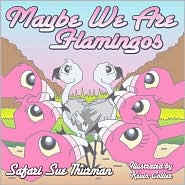 Maybe
We Are Flamingos Maybe
We Are Flamingos
Safari Sue Thurman has entertained and educated thousands of children at
the Phoenix Zoo. Now, she turns that expertise into the first picture book
in the Safari Series, Maybe We Are Flamingos. She and illustrator Kevin
Collier have created a fun, enchanting book that will appeal to young
children.
Flora and Fernando are two young flamingos, first looking like white
snowballs, and then covered with gray feathers. When they notice that they
are a different color than the other flamingos, they worry they're in the
wrong flock. However, their mother explains that flamingos don't turn pink
for a year, and they stay pink because of the food they eat. This
information leads to the most delightful part of the book. Fernando and
Flora draw pictures of what the flock would look like if they ate other
food such as broccoli, cheeseburgers, and pizza.
Safari Sue has written a children's picture book that educates while
entertaining at the same time. It will be easy for children to draw
flamingos as other foods, or talk about what they themselves would look
like if they were their favorite food. Personally, I was surprised at the
lesson the flamingo mother imparted at the end of the story. Yes, the
story does talk about appearances, but I failed to find how the story
ended with a message that it's what's in your heart that is important.
Somehow, that message seemed to have little to do with the rest of the
book. Despite that flaw, which children won't notice, Maybe We Are
Flamingos is a book that would be fun to share with youngsters.
Safari Sue Thurman's website is www.safarisue.com
Maybe We Are Flamingos by Safari Sue Thurman. Guardian Angel Publishing,
Inc., ©2008. ISBN 9781933090986 (paperback), 28p.
|
| |
|

lholstine@yahoo.com
book blog: http://lesasbookcritiques.blogspot.com
Book Topics - Glendale
Daily Planet
http://www.glendaledailyplanet.com/book_topics.htm
"Reach librarians, and you reach the world." -
Betty Webb
|
Jennifer Lee Carrell -
Authors @ The Teague
 Jennifer Lee Carrell, author of Interred with Their Bones,
appeared as part of the Authors @ The Teague series at the Velma Teague
Library on Wed. Sept. 10 at 2 p.m. Carrell has a Ph.D. in English and
American Literature from Harvard University. She taught history and
literature at Harvard, and directed Shakespeare for the Hyperion Theatre
Company, and now lives in Tucson. She is also the author of The
Speckled Monster, a nonfiction book about battling smallpox.
Jennifer Lee Carrell, author of Interred with Their Bones,
appeared as part of the Authors @ The Teague series at the Velma Teague
Library on Wed. Sept. 10 at 2 p.m. Carrell has a Ph.D. in English and
American Literature from Harvard University. She taught history and
literature at Harvard, and directed Shakespeare for the Hyperion Theatre
Company, and now lives in Tucson. She is also the author of The
Speckled Monster, a nonfiction book about battling smallpox.
Jennifer began the program by reading a short scene from the opening of Interred
with Their Bones to give readers a flavor of the work. Most of this
book, her first novel, is set in modern times. Her heroine is Kate
Stanley, an American in London, where she has her big break; she's
directing Hamlet at the Globe in London. When the book opens,
Kate is sitting on a hill overlooking London after receiving a gift of a
box from Rosalind Howard, Harvard Professor of Shakespeare. However, she
won't let Kate open it. She tells her she's given her an adventure. This
leads to a high-stakes, fast-paced adventure story about a lost play by
Shakespeare.
When Carrell was studying for a Ph.D. in English, she was in a library
in Harvard Yard on a New England fall day. She was perusing the shelves,
and a set of four books jumped out at her. They were called The
Elizabethan Stage by E.K. Chambers, copyright 1923. Although the
books are a little later than the Victorian age, they still had that
cluttered, full feeling. They were full of interesting, bizarre facts
about Renaissance drama. At the bottom of one page was a lost plays
section. Lots of Renaissance drama was lost. It wasn't considered high
art, much more like our sitcoms today. There was a title by Shakespeare,
even with some of the plot, but the play is gone.
Jennifer said she started to question what it would be like to find one
of those lost plays. If you were the first person in 400 years to find a
play, where would you find it? It would have to be found somewhere off
the beaten path. So, even when standing in grocery lines, she would spin
a fantasy about that idea. It's more fun to make it a story. As an
author, she has control issues. She gets to pick who finds the play, and
where, and what happened to it over time. But, that book got pushed
back.
She left academics, partially because she wanted to write for a more
general audience. In 1998, Carrell wrote an article for Smithsonian,
"How the Bard Won the West." Many people don't know about the
popularity of Shakespeare in the 19th century in the West. Cowboys and
illiterates loved Shakespeare. Jim Bridger, the mountain man was
illiterate, but had heard about Shakespeare. So, he traded a team of
oxen for a volume of Shakespeare, and had a young German boy read it to
him. Afterward, he would recite Shakespeare from memory, at campfires.
The Speckled Monster, a nonfiction book, was Carrell's first
published book. It's set in 1721 in London and Boston, and it's
nonfiction written like fiction. It's about battling smallpox, and
features Lady Mary Wortley Montagu, who was one of the first female
published poets in English. After 9/11, publishers were interested in
the book because they were interested in biotech stories. She said it
was not a biotech book. It's about smallpox inoculations in Boston. When
she started the research, Boston was going to be a small part of the
story. But, as she dug through genealogy, and other records, she kept
stumbling across a place, Salutation Alley, with records of people first
inoculated. She realized this was a story lost for 150 years. She had a
physical reaction when she realized she had found something lost. That's
why scholars are scholars, for moments of discovery.
However, once the book was published, publishers want to keep you on
that same track. They wanted Carrell to write another nonfiction book,
written as fiction, about a woman who changed the world, but isn't
well-known. She spent six months looking for that, but there just aren't
that many undiscovered stories with those features. So, she proposed the
idea of Interred with Their Bones, with lots of history in it,
to her agent. The agent liked it, and they sent it to the publisher, who
liked it. Now, she had to develop it.
Carrell said she wanted two elements, the lure of the lost, and the
thrill of discovery. She had been pulled in by the lure of the lost
plays. She wanted readers to have that thrill at the moment of scholarly
discovery. So, she decided the genre that would fit that would be a
treasure hunt thriller. The manuscript of a lost play by Shakespeare
would be so precious that no monetary value could be placed on it, and
people would kill over it.
Jennifer had her original idea years before The DaVinci Code,
but that book's success enabled her to jump from nonfiction to fiction.
But, her actual inspiration for her book was that book by Chambers with
the list of lost plays, not The DaVinci Code.
When she started to work on the novel, Carrell knew where it would end,
how, and who the killer was. But, she had no idea about the other
characters. The beginning of Interred with Their Bones just
popped into her head, but she had no idea what was in the box. She had
the beginning and the end of the story.
She wanted to use the trivia, and the obsessions about Shakespeare that
surrounds him. She didn't want to make up the clues herself for her
treasure hunt book. She wanted to use other people's clues. So, the
clues in the novel are historical, other people's ideas. She wrote them
out on 5 x 7 cards to work with them, because a treasure hunt is hard to
put together.
As characters, Carrell wanted somebody in theater, an academic, somebody
educated, but not too familiar with Shakespeare, and somebody who knew
about chases and guns. She wanted her heroine to be an ex-academic, now
in the theater. She knew she wanted to use authentic Shakespearean
places, such as the Globe, Stratford-upon-Avon, libraries. So, she used
cards, and laid them all out in order to plot the book.
Her characters came to life, and she flew through the writing, almost as
if she was dictating a film in her head. But, halfway through the book,
her killer changed. When a story comes to life, it will change from what
you planned. That's the pleasure of being a storyteller. She did say
most of the weird things that happen in the book are true, not fiction.
The pleasure of fiction is that, hopefully, the author reaches a larger
audience. There is lots of history around Shakespeare's plays. Some of
the great mysteries in literature are around him. Jennifer said she
worked hard to reach a wide audience, so that it would be entertaining
for anyone from Shakespearean experts to people who just know he wrote Hamlet
and Romeo and Juliet .
Carrell had two models for writing entertaining fiction to appeal to the
masses. One was Shakespeare himself, who wrote for everyone from the
Queen and King to the half-drunk thirteen-year-old apprentice in the
pit. Her modern model is the movie, Shakespeare in Love. She
first saw it with a group of Shakespearean professors, who loved it, and
laughed at all of the little jokes.
In answer to a question, Carrell said she's working on another thriller
with the same character. Kate Stanley is a "three book girl."
The next one is about the legendary curse of Macbeth in the
theater. The third questions "What's Catholic, or Not?" In
Shakespeare's age, Catholics were viewed as terrorist suspects are
today. Catholics were suspect.
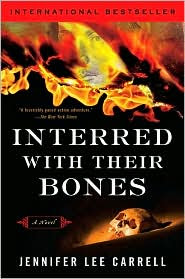 Jennifer
said she had her original idea for the book in 1989. In 2004, she
started writing the novel. The hardcover of Interred with Their
Bones came out in 2007, and the paperback was just released. Jennifer
said she had her original idea for the book in 1989. In 2004, she
started writing the novel. The hardcover of Interred with Their
Bones came out in 2007, and the paperback was just released.
Asked how she came up with the title, she said the title is involved
with the plot. She and her husband tried to think up titles, using
Shakespearean quotations, but it's hard to come up with three or four
word titles that fit a thriller, and haven't been used before. But her
husband came up with this one from Julius Caesar. Interred
with Their Bones, in a speech by Marc Antony, fits with the book.
Interred with Their Bones is not the title of the book in most
foreign countries. In Britain, it's called The Shakespeare Secret
because they thought the U.S. title was too uppity. Most countries
translated The Shakespeare Secret title. Spain kept the
translation of Interred with Their Bones, though.
When asked about Shakespearean societies, she said there are a number of
different societies that focus on one aspect of him, like he was Queen
Elizabeth's illegitimate son, or he was really a woman.
An author really isn't in on the decisions as to the artwork on the
cover of their books, but she did have veto power. The hardcover and
paperback have different covers. She didn't like the first paperback
cover she saw. Shakespeare looked like a Monty Python figure. But, this
cover, with Shakespeare's face, and fire, looks like a thriller cover.
She likes both covers, for different reasons.
She was asked how many copies the book sold, but Carrell said she
doesn't know how many in the U.S., but it sold well enough to come out
as a trade paperback. It sold 300,000 in the U.K.
Jennifer Carrell was asked why twenty or thirty year olds should read
Shakespeare. She said, not the for the language. Although it's beautiful
and poetic, it can be difficult to understand on first reading. However,
he wrote about fundamental aspects of what it means to be human, with an
unusual depth. He wrote comedy, and about love, hate, and jealousy. He
wrote possibly the greatest first love story. He wrote about middle-aged
passion, middle-aged illicit passion, and the love of an aging father
for his daughter. The stories have made sense not only to English
speakers, but to the Bushmen of Africa and cowboys. They've been
performed as Japanese Kabuki theater. She said Romeo and Juliet
begs to be done as rap poetry. The opening is really about Romeo and his
best friend rapping at each other. It translates into hip-hop. And, Hamlet
is a cynical play about power. Younger readers understand that.
It's too bad everyone could have joined us to hear Jennifer Lee Carrell
talk about Interred with Their Bones.
Jennifer Lee Carrell's website is www.jenniferleecarrell.com
Interred with Their Bones by Jennifer Lee Carrell. Penguin Group (USA),
reprinted 2008. ISBN 9780452289895 (paperback), 432p.
This was the notice of appearance!
Jennifer Lee Carrell -
Authors @ The Teague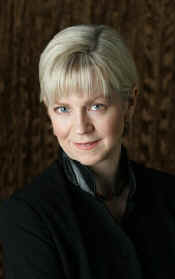
Jennifer Lee Carrell, author of Interred with
Their Bones, will appear at the Velma Teague Library in Glendale, AZ
on Wed. Sept. 10 at 2 p.m. as part of the Authors @ The Teague series.
Carrell will discuss her book, and sign copies. The book will be for
available for purchase.
Interred with Their Bones is described on Carrell's website.
"On the eve of  the
Globe's production of Hamlet, Shakespeare scholar and theater director
Kate Stanley's eccentric mentor, Rosalind Howard, gives her a mysterious
box, claiming to have made a groundbreaking discovery. But before she can
reveal it to Kate, the Globe burns to the ground and Roz is found dead -
murdered in the strange manner of Hamlet's father. Inside the box Kate
finds the first piece in a Shakespearean puzzle, setting her on a deadly,
high-stakes treasure hunt. the
Globe's production of Hamlet, Shakespeare scholar and theater director
Kate Stanley's eccentric mentor, Rosalind Howard, gives her a mysterious
box, claiming to have made a groundbreaking discovery. But before she can
reveal it to Kate, the Globe burns to the ground and Roz is found dead -
murdered in the strange manner of Hamlet's father. Inside the box Kate
finds the first piece in a Shakespearean puzzle, setting her on a deadly,
high-stakes treasure hunt.
From London to Harvard to the American West, Kate races to evade a killer
and decipher a tantalizing string of clues, hidden in the words of
Shakespeare, that may unlock literary history's greatest secret…."
Carrell, who lives in Tucson, has her Ph.D. in English and American
Literature from Harvard University, as well as other degrees in English
Literature from Oxford and Stanford Universities. She won three awards for
distinction in undergraduate teaching at Harvard, where she taught in the
History and Literature Program and directed Shakespeare for the Hyperion
Theatre Company. Jennifer is also the author of The Speckled Monster,
a work of historical nonfiction about battling smallpox at the beginning
of the eighteenth century.
The Velma Teague Branch Library is located at 7010 N. 58th Ave., Glendale.
Call 623-930-3431 for more details.
Jennifer Lee Carrell's website is www.jenniferleecarrell.com
Interred with Their Bones by Jennifer Lee Carrell. Penguin
Group, ©2007. ISBN 978-0452289895 (paperback), 432p.
|
The Velma Teague Library, in
Glendale, Arizona, has a full schedule of authors for the rest of the
year for the popular series, Authors @ The Teague. Check out this
schedule of events.
Since Glendale was the hometown of Marty Robbins, Andrew Means will
discuss his book, Some Memories: Growing Up with Marty Robbins,
on Aug. 23 at 2 p.m.
We have a very special event on Saturday, Sept. 20 at 2 p.m. We'll
host four mysery authors from The Southwest Crime Ink Group in Tucson.
Elizabeth Gunn, the author of the Jake Hines series, has started a
series set in Tucson, beginning with Cool in Tucson. 
Susan Cummins Miller's latest book is Hoodoo. 
Broken Heartland is the most recent book, set in
Buffalo Springs, Kansas, by J.M. Hayes. 
Under the name of J. Carson Black, Margaret Falk wrote Dark
Side of the Moon.

In a switch in direction, Thursday, Oct. 9 at 7 p.m., we'll present
Stella Pope Duarte with her book, If I Die in Juarez.

Romance novelist, Shelley Mosley, who writes under the name of Deborah
Shelley, will discuss her latest book, Marriage 101
on Thursday, Oct. 23 at 7 p.m.

On Monday, Nov. 3 at 6:30 p.m., we'll bring you a true crime author.
Kerrie Droban will talk about Running with the Devil: The True
Story of the ATF's infiltration of the Hell's Angels, an
event that took place in Arizona.

\
We'll finish the year on Saturday, Nov. 15 with Brent Ghelfi, author
of Volk's Game and Volk's Shadow.
 Ghelfi will speak at 2 p.m.
Ghelfi will speak at 2 p.m.

Books will be available for purchase at all of the programs, and the
authors will sign their books. The Velma Teague Library is at 7010 N.
58th Ave., Glendale, AZ. Call 623-930-3431 for further information.
Join us for Authors @ The Teague. Hope to see you there!
|
Author of Newest Duncan
Kincaid/Gemma James Novel Joins AUTHORS @ THE TEAGUE
Series in Glendale on National Book
Tour
Please Note: Time - Date Change for
Author Visit
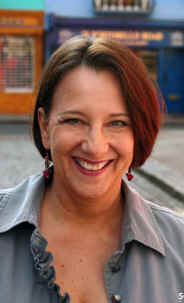 Deborah
Crombie, author of the Duncan Kincaid/Gemma James mysteries, is
appearing at the Velma Teague Library in Glendale, AZ on
Wednesday, July 1 at 3 p.m. She'll be appearing as part of the
Authors at the Teague series to promote her latest book- the twelfth
in the series, Where Memories Lie. Deborah
Crombie, author of the Duncan Kincaid/Gemma James mysteries, is
appearing at the Velma Teague Library in Glendale, AZ on
Wednesday, July 1 at 3 p.m. She'll be appearing as part of the
Authors at the Teague series to promote her latest book- the twelfth
in the series, Where Memories Lie.
If you're unfamiliar with this series, start with A Share in
Death. It introduces Scotland Yard's Detective Superintendent
Duncan Kincaid, in his thirties soon after his promotion to the
position. Gemma James, in her late twenties, is his Sergeant, a
good-natured single mother with a young son.
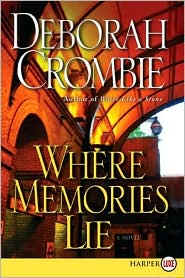
Crombie, who lives in Texas, wrote the perfect English
"country house" mystery for her debut. Kincaid, who was
recently promoted, takes a vacation to Yorkshire, using his
cousin's timeshare. The night after he meets Sebastian, the
assistant manager of Followdale House, Duncan and two children
find the man's body in the swimming pool. Due to the incompetence
of a local police inspector, Kincaid is soon probing into the
lives of the guests.
Kincaid is a man who cares about the victims, and proves to be a
careful listener in his investigation. Deborah Crombie created two
characters that exemplify the best of British police detectives.
If you appreciate A Share in Death, there are eleven more books in
the series.
Deborah Crombie will be discussing the Kincaid/James series, and
signing books at the Velma Teague Library, 7010 North 58th Avenue
in Glendale on July 1 at 3 p.m. Call 623-930-3431 for further
details.

lholstine@yahoo.com
book blog: http://lesasbookcritiques.blogspot.com
Book Topics - Glendale
Daily Planet
http://www.glendaledailyplanet.com/book_topics.htm
"Reach librarians, and you reach the world." -
Betty Webb
(Added biographical info added
by GDP for GPL Press Release.)
The author’s love of Britain grew
when she had an opportunity to take a post-university trip to
England. She immigrated to the United Kingdom with her first
husband, Peter Crombie, who was a Scot; first living in Edinburgh,
Scotland, and then in Chester, England.
She later returned to Dallas and
worked in her family’s business. While she was raising her
daughter she began wiring her Duncan Kincaid novel. That book, “A
Share in Death,” was published in 1993.
Her books have won great acclaim and
been published in 13 countries.
She now lives in McKinney, an historic
town north of Dallas, with her husband, Rick Wilson, two German
shepherds and three cats.
Deborah Crombie at the Velma Teague Library
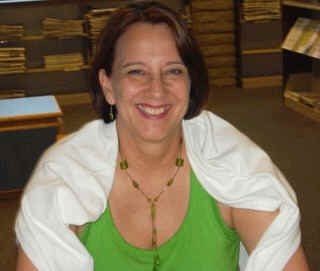 Deborah Crombie, author of the Duncan
Kincaid/Gemma James mysteries, appeared at the Velma Teague Library today as part of the Authors at the Teague series. We were fortunate to have her squeeze us into her schedule when she was in town to appear at The Poisoned Pen Bookstore in Scottsdale. Deborah Crombie, author of the Duncan
Kincaid/Gemma James mysteries, appeared at the Velma Teague Library today as part of the Authors at the Teague series. We were fortunate to have her squeeze us into her schedule when she was in town to appear at The Poisoned Pen Bookstore in Scottsdale.
Deborah asked me to interview her, so after the introduction, I asked her to give us her background. She said she was a native of Texas, as Texan as you can get. She was an Anglophile, and she went to England in her 20s. She felt a staggering sense of homecoming in England. She'd read all of the English authors from Austen to Dickens to
R.F. Delderfield. And, after she was there once, she did everything in her power to get back to England. Crombie said she wasn't an Anglophile because she married a Scot; she married a Scot because she was an Anglophile. And, she was married to her Scottish husband for thirteen years.
After she came back to the United States to live, she was homesick for England. She returned to Yorkshire, at the time that James Herriot was still practicing, and he would sign his books at his surgery on Thursdays. While driving in Yorkshire, they came across an English country house that was a timeshare, and it intrigued her. Crombie thought it was a perfect spot for a classic British crime novel. And, if it was a classic British crime novel, it needed a detective. And, the detective needed an associate.
When Deborah's daughter was in Montessori, she thought she could either work on a Master's degree, or try to write a novel. Her first book, A Share in Death, sold
multinationally. It was nominated for Agatha and Macavity awards for best first novel. She's written twelve books in the series in fifteen years.
The Duncan Kincaid/Gemma James series is set in Britain. When the series started, Kincaid was a Scotland Yard Superintendent, and Gemma was his Sergeant. Since then, James has been promoted to Notting Hill. Crombie said she wanted her characters to be mobile, so she could travel around England, and her trips would be tax deductible. That's worked out well. However, lately she's discovered it's hard to get out of London. And, with Gemma James' job, she wouldn't logically go with Kincaid on every investigation.
Duncan came from a section of England that Deborah loved. He's her male alter ego, and she felt as if she knew him from the very beginning. When she created Kincaid and James, she was rebelling with her characters against trends in detective stories at the time. She didn't want an angst-ridden detective. Duncan has some baggage, but he wasn't very
disfunctional. He did his job because he loved it. He grew up in a literary household. And, he was divorced because his wife couldn't deal with the time he spent on the job.
With Gemma, Crombie was fighting the trend of female detectives who were just men in drag. They had no family, no children, and no obligations. She wanted a woman, who like other women, had to deal with family obligations, but was committed to the job. She was a character who wanted to be a cop, even though she was divorced, with a child. If Duncan was Deborah's alter ego, Gemma was as different from her as possible. She was in-your-face and outgoing. Over the course of time, though, their personalities have blended together.
She said she has to be conscious of time in her books. Only A Finer End has an actual date because it takes place at the millennium. Looking back at her earlier books, she notices how cultural things change in the books. For instance, in the first book, A Share in Death, Kincaid has a phone in his car, but it's permanently in the car. The story time has only been about four years in the lives of the characters, just slices of their lives.
Crombie is working on her thirteenth book. Her books have multiple viewpoints and storylines. Time is compressed into a couple weeks in the story. They're not like real police investigations, which take a great deal of time. The police have loads of paperwork. But, the story has to be fun to read, with action and faster resolutions than occur in real life. So, readers spend little bits of time with the characters.
Deborah Crombie has been under contract since her first book. She's always thinking ahead a book or two. She knows where the story arc is going after she finishes a book. She turns it in, and has to start the next proposal immediately. Her books are setting driven, and the setting functions as a character.
She said she works out the characters, who did it, how the cases are resolved. She has to know all of it before writing. After attending a writers' conference, she said authors who write in first person might have it easier, and not have to plan the book out. She was asked what is harder, the beginning or end. She answered that she knows where the book is going, so for her, the beginning is harder. With Where Memories Lie, she wrote the ending when she was about half-way through the book. She wants to ensure that it's all going to weave together and be believable. Deborah said she does a proposal and an outline. She outlines in chunks. She'll bullet point outline each storyline, and then weave them together. She's obsessive-compulsive about staying in viewpoint. She has to get the time, the viewpoint, and what information she gives the reader. The red herring clues, the
misdirections, must be there so the reader doesn't realize when an important clue is given. About half or two-thirds of the way through, when she has the outline to the end, she'll actually write the end of the book. She'll write that as fast as possible so she doesn't lose what she wants to say.
Where Memories Lie is Deborah Crombie's new book. Gemma, who is a baker's daughter from North London, made friends, in an earlier book, with Dr. Erika Rosenthal. Authors invent characters who appear once or twice in a book, in order to provide information to the detective, and then they disappear. Erika, who appeared in the seventh book, A Finer End, was supposed to
disapper. She was a Jewish refugee from Nazi Germany in 1939, who developed a special relationship with Duncan's son, Kit. But, Deborah found herself more interested in Erika's character. She wanted to know more about her, so she invented backstory for Erika. Her father was a well-known designer of art deco jewelry. He was tolerated by the Nazis because he was one of the craftsmen making things that were valued by the Nazi elite. Before Erika and her husband left Germany, her father gave her a piece of jewelry, a brooch. Something happened to it. When a friend of Erika's saw it in an auction catalog, Erika asked Gemma to help her find where the brooch was for years.
A good part of Where Memories Lie deals with 1952, when Erika's husband was murdered. Crombie's intention was to have Gemma use the notes from the detective who investigated the case in 1952, and the detective himself would not appear. However, when Deborah was on the Gatwick Express, she saw two men on the train, and she knew immediately that one of those men was her detective in 1952. She knew his name was Gavin. He appears on one page, and takes over the story. His relationship to the story was not what she anticipated. It made the book challenging to write.
Crombie was pleased to be asked about her next book because Where Memories Lie has been finished for a year. She's moved on. The next book, with a working title of Necessary As Blood, takes place in the East End of London, a place she wasn't familiar with. She's taken one research trip; she's going back in August, and possibly in November. This is Jack the Ripper territory, an area often in conflict with change. At the moment, it's being gentrified, and there's a culture clash between the Bangladesh immigrants, the last of the white Cockneys, and the artsy crowd. This arty area is fertile ground for authors.
Deborah said she tries to switch viewpoints in the books, one from Duncan's, and one from
Gemma's, but this is going to be Gemma's book. It's the story of a couple in which the wife is white, and the husband is Pakistani. She disappears one day from the flower market, after asking a friend to watch her child for a minute, and she'll be right back. Later her husband disappears, leaving the two-year-old child alone. So, Gemma is brought into the situation.
When asked if readers need to read the series in order, Crombie said she tries to make the books stand alone, so readers could pick them up at any point. And, she's always hoping they'll buy her current book. But, it is fun to start from the beginning and see the development of characters.
Crombie was asked to explain proposals, and she said a writer proposes what they're going to do next. Her U.S. publishers get the books first, and they have 95% of the say. But, she is published in multiple countries. What Germany thinks is important.
The first five books were with Scribner's, and then they were sold. Since her contract was going to be out after those five books, she got feelers. For the next three books, she was with Bantam/Random House. They had right of first refusal at the end of the contract, and another publisher can't even make an offer, so it's tricky for the author. She ended up with HarperCollins, and she hopes she's with them for a long time because she loves her editor and the packaging for her books.
She said she has great maps in the books, with pull out illustrations. The illustrations are taken from her photographs. She has done the cover photos for every book since In a Dark House, three books ago. Nottingham Gate Station is on the front of Where Memories Lie. Deborah thinks it's a fabulous cover. She already has photos she hopes are used for the next book.
When she was asked how she got published, she said her undergraduate degree was in biology, and she had no idea how to write a novel. So she dissected books she liked, and diagrammed them. She also took little writing courses, including an eighteen week writing course. By the time she'd written the manuscript of her first book, she was a member of Mystery Writers of America, Southwest Chapter, with headquarters in Houston. They had a conference scheduled with an editor coming in. She sent a query letter, and the editor said he wanted to see the entire manuscript. She found an agent, and has been with that agent for fifteen years. The editor didn't even remember her, when he met her, but finally, after reading it, kicked the manuscript up from Avon/Morrow to Morrow because he thought it should be a hardcover. In the meantime, her book was bought by
Scribners, with a three book contract. She's now come full circle because she's at Morrow. Crombie said she's had a good editor at all three places.
She was asked what books she dissected, and she said her favorite books were by Dorothy Sayers and
P.D. James. They were her two main influences because she writes classically structured British detective novels. She's never collected a rejection letter.
I asked her about her reception in Britain, and she said she has the same publisher in the U.K., and it's no big deal that she's an American. They're well-received. However, the books are very well-received in Germany and France.
She said her U.S. books always come out first, but Where Memories Lie will be delayed until spring for the British edition. The publisher is repackaging the whole series. They'll release half the series, then the second half, then the hardcover. Deborah said she has lots of British readers, but it's not always easy for them to find the books.
She said she usually comes up with the titles of her books at the beginning, although sometimes she finishes the book, and her editor or publisher doesn't like the title.
Deborah Crombie had a busy schedule today, first in Scottsdale, then at Velma Teague, and then on Tucson. However, Poisoned Pen Bookstore supplied books, and she took time to autograph them for audience members before leaving. It was a successful program in the Authors at the Teague series.
Deborah Crombie's website is www.deborahcrombie.com.
Where Memories Lie by Deborah Crombie. HarperCollins Publishers, ©2008. ISBN 9780061287510 (hardcover), 295p.
|
|
Authors at
the Teague Features: Shamus award-winning author Louise Ure
Monday, May 19, at 6:30 p.m
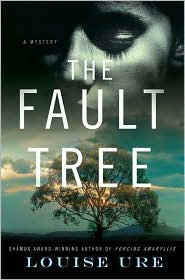
Shamus award-winning
author Louise Ure will appear at the Velma Teague Library as
part of the Authors at the Teague series. The program will
be Monday, May 19, at 6:30 p.m. at the library, 7010 N. 58th
Ave. Ure's latest book, "The Fault Tree," is the
second in her proposed Arizona trilogy of crime novels,
following the successful "Forcing Amaryllis."
This fascinating book tells the story of Candence Moran.
Cadence is thirty-one, and an auto mechanic who works nights at
Walt's Auto Shop in Tucson. Walking home from work one night,
she hears a scream, laughter, and a car tear away. Cadence has
just heard the end of a murder. Although Cadence is a witness,
she's blind, and can only depend on her other senses to tell the
police what she "knows".
Ure, a Tucson native
will discuss her books at the program and book signing.
For more information, call the Velma Teague Library at
623-930-3431.
Michael
Moorehead Youngest Author to Receive ABPA Glyph
Award Shares Writing Techniques
With Other Young Writers
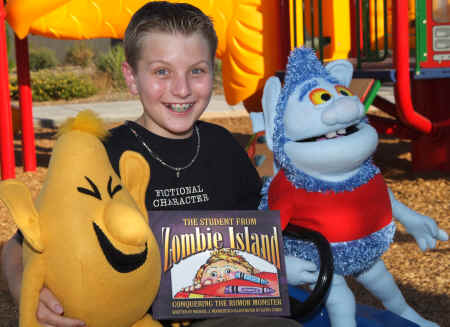
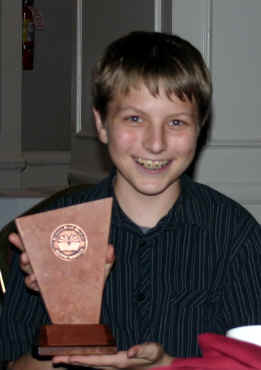
Author Michael
Moorehead has a promising future ahead of him. Although he’s
only twelve, the Tempe author has already written a successful
picture book, “The Student From Zombie Island: Conquering the
Rumor Monster.” In fact, it’s so successful that it won the
2008 Reader Views Annual Literary Award for Best Children’s Book
for Ages 7 and Older.
“The Student From Zombie
Island: Conquering the Rumor Monster,” was written when Michael
was only seven. It has an important message about spreading
rumors, since it tells the story of the rumors that flew around a
school about the terrible monster that was coming. Bust 'em Up
Bill hasn’t even started school yet, but his name alone is
enough to strike terror in the hearts of the other students.
Moorehead’s book just won
a 2008 Glyph award from the Arizona Book Publishing Association,
recognizing the book with the best cover, making him the youngest
recipient of an ABPA Award. The cover was a joint effort between
the illustrator, Kathy Parks, who drew the picture; the graphics
designer, Tanja Bauerle who put it together and laid it out; Linda
Radke of Five Star Publications, who coordinated it all; and
Michael Moorehead, the author.
Michael Moorehead is already
living the busy life of an author. He’ll be appearing at
Brilliant Sky Toys and books at 4929 E. Chandler Blvd. in
Ahwatukee on Friday, June 6 at 5:30 p.m., where he will discuss
and read his book, conduct a brief writing exercise with children,
and autograph copies of “The Student From Zombie Island.”
Then, he’ll be attended Book Expo America in Los Angeles, from
May 29 through June 1, where he will sign books and meet people in
his publisher’s booth.
Congratulations, and good
luck to one of the Valley’s new successful authors.
Michael’s website is
www.ZombieIslandBooks.com.
The book is published by Little Five Star, a division of
Five Star Publications, Inc. ISBN: 1-58985-072-6, ISBN:
978-1-58985-072-9, Published 2007.
|
-
Story and Photos by Lesa Holstine
-
Glendale, Arizona,
United States
Betty
Webb at the Velma Teague Library
 As part of the Authors at the Teague series, Betty Webb, author of the
Lena Jones mysteries, appeared at the Velma Teague Library, discussing
what Publishers Weekly calls her, "Mysteries with a
social conscience."
As part of the Authors at the Teague series, Betty Webb, author of the
Lena Jones mysteries, appeared at the Velma Teague Library, discussing
what Publishers Weekly calls her, "Mysteries with a
social conscience."
Betty said she worked in journalism for twenty years, and they didn't
allow her to make things up. She wanted to make things up. While
reviewing books for the newspaper, she found herself looking for the
mysteries, so she decided she wanted to write mysteries. There was a
fellow member of her critique group who was too sweet and too nice,
and just couldn't kill people in her writing. She'd put them in a
coma, and Betty kept telling her she needed to kill someone. While
trying to figure out who she wanted to kill, she and her husband,
Paul, went to a Scottsdale Art Show. When she said to Paul,
"Someone should kill that gallery owner," he replied,
"There's your dead body." She went home and wrote the first
chapter of Desert Noir. However, she didn't know why
the gallery owner was killed or who solved it. She needed to know who
was going to solve the crime. Since it was her first book, Webb was
still trying to decide if she would write grizzly books, or lighter,
cozy or traditional mysteries in the style of Agatha Christie.
Her character, Lena Jones, came to her in a dream. Lena was found at
the age of four, lying at the edge of a Phoenix road, Thomas Road,
with a bullet in her head. She was in a coma for months, and when she
came out of it, she couldn't remember anything, where she was from,
who her parents were, or what happened to her. She had some brain
damage, which led to some behavior problems. The behavior problems
made her unadoptable, so she grew up in foster care, where she was
raped, abused, and malnourished. However, she survived to get a
scholarship to Arizona State University where she studied police
science. After graduation, she worked for the Scottsdale Police
Department, until she was shot on the job. When she was offered a desk
job, she decided to open her own detective agency, Desert
Investigations, in Scottsdale. After having that dream, Lena became
the daughter Betty Webb never had, and she wanted to do a series about
her, beginning with Desert Noir, the story about the
murder of that Scottsdale gallery owner.
In the Desert series, Lena Jones is looking for her biological parents
and her background. Webb said, mystery writers work out their
hostilities by killing people in their books, but mystery writers are
really sweeter than romance writers who can't take out their
frustrations in their writing. She said romance writers are the rough
and tough ones.
Betty Webb said she first found out about the problem of polygamy in
the American Southwest when she saw an AP story out of Washington. She
started to check it out, and took trips to the Utah border because
most of the Arizona polygamy colonies are up there, towns such as
Colorado City. She met Flora Jessup, a former sister wife who escaped,
and now speaks out against polygamy, and helps other girls escape. She
wrote Desert Wives, which has been optioned for
Lifetime TV, but not filmed yet.
Polygamy is not about religion. If a man takes ten wives, who are not
really wives, but concubines, and has ten children with each, he has
one hundred illegitimate children. What do illegitimate children get?
Welfare checks of $250 a month per child, and the money goes to the
Prophet. That's the money that has made Warren Jeffs a millionaire,
money from breeding girls for their lifetime. The Prophet moves girls
from other households. Warren Jeffs built the compound in Ed Dorado,
Texas that has been in the news. All that welfare money goes to Jeffs.
Polygamy is about money, which is part of the story of Desert
Wives. The families are interbred, which means 65% of the
kids are genetically damaged, but the Prophet doesn't care, as long as
the girls can breed. At eighteen, the boys are dumped out of the
compound, and become the Lost Boys. The can't read or write, and are
dumped in Phoenix, Flagstaff and Salt Lake City. In Texas, they work
construction until eighteen, but they actually work for script that is
redeemable only in compound stores. So, when they're turned out at
eighteen, they still have no money. In Desert Wives,
Lena masqueraded as a sister wife.
While researching, Betty learned that polygamists are racists who pass
out flyers at shows, such as survivalist shows. She checked out
publishers of racist materials, and found there is a big market for
publishing flyers, books, video games, and recordings. In her next
book, Desert Survivors, Webb asks, what kind of
person would own a publishing company that published racist material.
Desert Run came about because Webb lives near Papago
Buttes, where there was a prisoner of war camp for Germans during
World War II. On Dec. 24, 1944, twenty-five Germans dug a tunnel under
the stockade to escape with a collapsed boat. Why a boat? Because
their map showed rivers, which are actually dry river beds in Arizona.
They were all members of U-boat crews, who thought they would sail out
Cross Cut Canal.. When they discovered the canals were dry, they
abandoned the boat, and spread out through the desert. They eventually
all surrendered.
Betty Webb calls Desert Run her Glendale, AZ book. In
her story, after the war, several of the German men came back, and
moved to Glendale. One is still alive in the book, and Lena makes a
trip to interview him. She's early one day, and goes through
Glendale's antique stores. She's been living in a furnished apartment,
and has never taken interest in her home, which is common with foster
children. But, in one store, she sees a lunch pail with Roy Rogers,
and buys it. She finds a Lone Ranger and Tonto bedspread, and by the
time she leaves, she bought an apartment full of 50's and 60's cowboy
furniture.
All of Webb's books start with a body because she said she likes to
kill people. In Desert Run, Lena finds the body of a
ninety-four year old man, a former prisoner. This is Lena's first cold
case, a contemporary murder tied back to a murder during the WWII
escape.
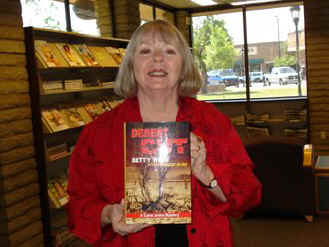 Desert Cut is Webb's new book, which has already gone
through its first printing. Everyone knows about the illegal
immigration problem in the United States. But, there's also a serious
problem with legal immigration. Americans have big hearts, and they,
and church groups, bring in people who have been displaced by war or
famine. However, we've brought in groups that have beliefs that little
girls are of less value than goats, and some of the beliefs are
terrible. Some of their practices should not be continued in the U.S.,
but the groups that brought them in might not have known enough about
the culture when they brought them. Now, some bulletins published even
say it's not child abuse, it's cultural. Betty Webb said she first
heard about it from an article about a court case in Atlanta, Georgia.
There are severe child abuses against little girls, usually between
the ages of 2 and 9, with the biggest group under seven. They call it
a "rite of passage," and it's done with anesthesia, with
antiseptic aftercare. The purpose is to make a girl a faithful wife.
Desert Cut is Webb's new book, which has already gone
through its first printing. Everyone knows about the illegal
immigration problem in the United States. But, there's also a serious
problem with legal immigration. Americans have big hearts, and they,
and church groups, bring in people who have been displaced by war or
famine. However, we've brought in groups that have beliefs that little
girls are of less value than goats, and some of the beliefs are
terrible. Some of their practices should not be continued in the U.S.,
but the groups that brought them in might not have known enough about
the culture when they brought them. Now, some bulletins published even
say it's not child abuse, it's cultural. Betty Webb said she first
heard about it from an article about a court case in Atlanta, Georgia.
There are severe child abuses against little girls, usually between
the ages of 2 and 9, with the biggest group under seven. They call it
a "rite of passage," and it's done with anesthesia, with
antiseptic aftercare. The purpose is to make a girl a faithful wife.
Webb said her publishers were leery about the subject, but Desert
Cut was published on Feb. 15, and the first edition has sold
out. It received a starred review in Booklist, a magazine for
librarians. Webb said, "Reach librarians, and you reach the
world." You reach people once librarians find out about an issue.
Then you'll get the word out.
For her research, she talked to people online who were fighting
against the custom. Two Somali women, who were fighting against it,
were found dead, deaths labeled "accidental." She said the
custom is popular in African and Mideastern countries. Webb said
France has had a large number of problems, and they've been arresting
people, and prosecuting.
The next Lena Jones mystery, "son of Desert Wives,"
will come out in Fall 2009, Desert Lost. It's about
the lost boys and urban polygamy, polygamy in the Phoenix area and the
Valley.
Webb started another book at the time she was writing Desert
Cut, because that one was so traumatic. She started a warmer,
lighter mystery, which will be published this November. Webb
volunteers at the Phoenix Zoo, and she loves zoos. The first book in
her zoo series is The Anteater of Death, again from
Poisoned Pen Press. Betty said there's an anteater named Jezebel at
the zoo, and she's a Code Red animal. Code Red means, if it escapes,
its shot on sight. Why is an anteater dangerous? When it stands on its
hind legs, and balances on the tail that is as strong as a kangaroo's,
it has four inch long claws that can dismember a jaguar. When a body
is found in the anteater's enclosure, torn apart, the zookeeper, a
woman named Teddy, thinks the anteater was framed. The zoo is on the
California coast, and Teddy lives on a houseboat. The first and last
chapter of every book in the series will be told from an animal's
point of view. However, Webb isn't trying to make the animal
anthropomorphic. The books will be about animals that the reader
wouldn't normally associate with death.
Betty Webb said she wrote her first mystery at 56. There are no big
issues in her new series. Webb likes big issues, so she'll continue to
write the Lena Jones books, and her heart is with Lena Jones, the
daughter she never had.
In a couple weeks, I'll have autographed Lena Jones books to offer as
prizes on my blog. Watch for the chance to win two of these dramatic
books.
Betty Webb's website is www.bettywebb-mystery.com
Desert Cut by Betty Webb. Poisoned Pen Press, ©2008. ISBN
978-1590584910 (hardcover), 277p.
|
-
Lesa Holstine
-
Glendale, Arizona,
United States
|
| Betty Webb at Authors at
the Teague
Betty Webb, author of the popular Lena Jones
mysteries, set here in the Valley, will be appearing
at the Velma Teague Library as part of the Authors at
the Teague Series. Webb, whose most recent book is
Desert Cut, will appear on Saturday, April 26 at 11
a.m. Webb will discuss her books, and sign copies,
which will be for sale. The Velma Teague Library is
at 7010 N. 58th Ave., Glendale. Call 623-930-3431 for
further details.
|
-
Lesa Holstine
-
Glendale, Arizona,
United States
Desert Cut

Betty Webb, author of Desert Wives, a mystery that exposed polygamy in
Arizona, has written another powerful mystery, Desert Cut. I was shocked
and outraged, and most readers will be horrified when they read Webb's
story, one that exposes a cruel practice affecting millions of girls.
Lena Jones was scouting movie locations in southern Arizona, when she
uncovered the mutilated body of a young black girl. The child's body
brought back Lena's memories of her own haunted childhood. As an ex-cop
and private investigator, she was determined to find answers to the
death of the young girl dubbed "Precious".
However, Lena met resistance in the small town of Los Perdidos. After
discovering that another young girl had disappeared, she found a town
sheltering refugees from Somalia, Egypt and other countries in Africa
and the Mideast. Lena encountered a charlatan running a
non-denominational church, two child predators, and a culture of racism
in a town symbolic of Arizona's past and present history. The sheriff is
convinced that Lena has stirred up the community, when two more girls
disappear, and vigilante justice turns to murder.
Although Lena Jones seems unnaturally obsessed with a case that she
hasn't been hired to investigate, Webb reveals enough of Lena's
childhood that the reader accepts that obsession. She takes child abuse
personally because of her own background. She's the victim of a gunshot
wound from a mother who disappeared and left her to make her way through
a series of foster homes.
Once again, Betty Webb paints a picture of Arizona as a beautiful state,
with a violent past, and, at times, a violent present. Her journalistic
background allows her to rip a brutal, tragic story from the newspaper.
Her skills as a mystery writer allow her to tell that story through the
eyes of Lena Jones, a woman whose heart bleeds for innocent children.
Desert Cut is a story that should be read by anyone concerned with human
rights, and the rights of children.
Betty Webb's website is www.bettywebb-mystery.com
Desert Cut by Betty Webb. Poisoned Pen Press, ©2008. ISBN
978-1590584910 (hardcover), 277p.
-
Lesa Holstine
-
Glendale, Arizona,
United States
Interview with Betty Webb
 I just finished Desert Cut, the latest Lena Jones mystery. It's a very
powerful story, as are some of Betty Webb's earlier books in the series.
I feel so honored that Betty agreed to answer some questions about her
books.
I just finished Desert Cut, the latest Lena Jones mystery. It's a very
powerful story, as are some of Betty Webb's earlier books in the series.
I feel so honored that Betty agreed to answer some questions about her
books.
Lesa - Betty, would you tell us about Lena, her background, and some of
her past cases?
Betty - Lena was found at the age of four, lying beside a Phoenix
roadway, with a bullet in her head. When she emerged from her coma, she
couldn't remember her name, who shot her, or who her parents were -
total amnesia. The name "Lena Jones" was given to her by a
social worker. Because of behavior problems, Lena wasn't deemed a
candidate for adoption, so she was placed in the foster care system.
Some were okay, but in at least one, she was beaten and raped. She
eventually became a Scottsdle police officer, but after being shot up in
a botched drug raid, she opened up her own private investigation
business. Since her emergence in "Desert Noir," where her best
friend - an art dealer - was murdered, she has gone on to investigate a
polygamy compound in "Desert Wives," the niche publishing
industry in "Desert Shadows," the real-life escape of German
prisoners of war in "Desert Run" (a cold case file), and now a
particularly hideous form of child abuse in "Desert Cut."
Lesa - You were a journalist before you turned to writing mysteries. How
does your background impact the Lena Jones books?
Betty - Being a journalist gave me instant access to "hidden"
stories, stories which were deemed too hot to handle by most industries.
Also, my background as a journalist gave me terrific research skills -
and the ability to know when someone was lying to me.
Lesa - Tell us about this latest Lena Jones book, "Desert
Cut."
Betty - In "Desert Cut," Lena discovers a small town with a
big secret. Los Perdidos, in Southern Arizona, has a large immigrant
population, but not merely Hispanics. As has been happening in states
all around the U.S., African and Middle Eastern immigrants have been
brought in to provide cheap labor, but this clash of cultures turns out
to be explosive.
Lesa - Your books have very powerful statements to make about social
issues such as polygamy. Does fiction allow you to do more with social
issues than journalism did?
Betty - Weirdly enough, yes. No one was writing about polygamy before
"Desert Wives" came out, but a few months after it hit the
bookstores, everybody and his dog was writing about it. And I am proud
to say that "Desert Wives" played a major part in getting the
law about polygamy changed here in Arizona. Before "Desert
Wives," our legislature saw polygamy as a freedom of religion
issue; after "Desert Wives," they could no longer turn their
back on the rampant incest and child rape in the compounds, as well as
the millions of dollars of welfare fraud the "prophets" were
enjoying. I'm hoping for the same result with "Desert Cut."
Lesa - Lena's stories are set in Arizona. You seem to have a love/hate
relationship with the state, its history, and its present. How do you
actually see Arizona?
Betty - I've lived in Arizona since 1982, and during that time, I've
seen the beautiful raped by developers. Gorgeous desert vistas are now
covered in strip malls and housing developments. I spend a lot of time
grinding my teeth about it.
Lesa - Am I correct in that you're starting another series? What can you
tell us about it?
Betty - Yes, and believe it or not, it's a "traditional"
mystery (otherwise known as a cozy). I'm a volunteer at the Phoenix Zoo,
and one day, when I was working with the monkeys, I thought, "You
know, there's got to be a book in this." So I wrote one. The first
book in the new series is "The Anteater of Death," and it's
set in a coastal California zoo, where a dead man turns up in the
anteater enclosure. The anteater was framed! My sleuth in this series is
Teddy, a poor little rich girl who has rebelled against her wealthy
family by taking a job as a zookeeper. "The Anteater of Death"
is due out in March '09, and there'll be another book every year in the
series, featuring a different animal. Oh, and by the way, those books
will be released under the pen name of Jo Howell.
Lesa - You won't leave Lena's fans hanging, will you? What are the plans
for more Lena Jones books?
Betty - As of this point, there are 5 more books planned, and yes, in
the 10th book, Lena will discover EVERYTHING about her mysterious past.
But the series just might not stop there. What she discovers won't
exactly set her anxieties to rest!
Lesa - As a librarian, I always end my interviews with a question about
libraries. Betty, do you have any stories about the role libraries
played in your life or career?
Betty - Wow, where to begin? Ever since I learned how to read at the
tender age of 3 1/2, librarians have been my major role models. One even
let me sneak books out of the adult section when I was only 10. Bless
her! No matter where I lived, librarians always took me under their
wings, told me what books I should be reading, what I might find too
silly for words, and - during my current incarnation as a mystery
novelist - helped me with my research. Librarians are angels, every last
one of them.
Lesa - Thank you so much, Betty, for the interview, and the Lena Jones
books.
Betty Webb's website is www.bettywebb-mystery.com
Desert Cut by Betty Webb. Poisoned Pen Press, ©2008. ISBN
978-1590584910 (hardcover), 277p.
|
-
Lesa Holstine
-
Glendale, Arizona,
United States
Rhys Bowen at
the Velma Teague Library
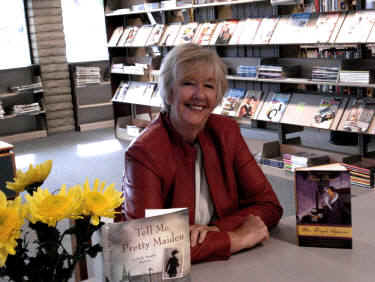 With her new book due out in a few weeks, award-winning author Rhys
Bowen took the time to appear at the Velma Teague Library, as part of
the Authors at the Teague series. She had an appreciative
audience, eager to hear about her mysteries that have won Agatha and
Anthony Awards.
With her new book due out in a few weeks, award-winning author Rhys
Bowen took the time to appear at the Velma Teague Library, as part of
the Authors at the Teague series. She had an appreciative
audience, eager to hear about her mysteries that have won Agatha and
Anthony Awards.
Rhys said she normally starts a talk by saying that she kills people
for a living. 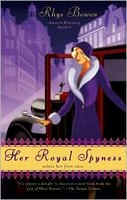 Her
Royal Spyness is the first book in her third mystery series. Her
Royal Spyness is the first book in her third mystery series.
She said she wrote for the BBC in London. She decided to write
mysteries, but didn't know where to set them. She appreciates the
settings in mysteries. She's a huge fan of Tony Hillerman and his
settings. She said the first time she and her husband were in the
Southwest, she didn't need a map, thanks to his books. She couldn't
decide where to set her books until she was telling a friend about her
childhood visits to family in Wales. They really had a mailman who
read everyone's mail. There were two Methodist chapels across from
each other. The ministers were nice to each other, but they had a
billboard war. Constable Evan Evans then appeared, her first mystery
character. The series is about a little village in Wales with a
community policeman. However, Evans is a little too polite for Rhys.
Sometimes he annoyed her. She wanted to write about someone who didn't
shut up and stood up for herself.
Rhys' visit to Ellis Island was the start of her second series.
Immigrants coming in at Ellis Island either experienced great joy or
great despair. There was a great feeling of despair there. There was a
great deal of corruption at Ellis Island. She said she realized Ellis
Island was the scene for the ultimate locked room mystery. Rhys
Bowen's Molly Murphy mysteries are about an Irish immigrant who fled
from Ireland after she killed a man who tried to rape her. Molly knew
that there would be no justice, since she had killed the landowner's
son. She took a false name, and fled. While at Ellis Island, someone
was killed, and the identity Molly took was on the list of suspects.
Molly became a detective.
Rhys said that New York City was not the melting pot everyone thinks
it was. In fact, it was broken into the Sicilian section, the Irish
section, etc. It wasn't until the next generation went to school
together that New York started to become a melting pot. Her new book,
Tell Me, Pretty Maiden, is due out 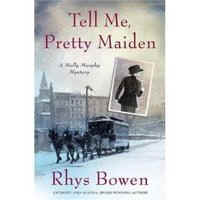 in March. Molly's detective agency has become successful. She has too
many cases, and wants her ex-cop boyfriend, Daniel, to join her. One
winter night, they walk in Central Park, and find the body of a young
woman. While Molly waits with the body, the woman regains
consciousness.. She survives, but she's lost the power of speech and
no one knows who she is. In each Molly book, Rhys can dig into some of
New York's story. This book is about New York theater and the lives of
the chorus girls.
in March. Molly's detective agency has become successful. She has too
many cases, and wants her ex-cop boyfriend, Daniel, to join her. One
winter night, they walk in Central Park, and find the body of a young
woman. While Molly waits with the body, the woman regains
consciousness.. She survives, but she's lost the power of speech and
no one knows who she is. In each Molly book, Rhys can dig into some of
New York's story. This book is about New York theater and the lives of
the chorus girls.
Rhy's agent at St. Martin's told her that she needed a standalone to
break her out as a bestseller. Rhys didn't want to do dark thrillers
with serial killers, the type of books that make the listss. She
didn't want to live with those characters for six months. Instead, she
suggested Her Royal Spyness, and other people loved it as much as her
agent did. Recently, on DorothyL, a listserv for mystery readers,
there were 1700 books submitted as the ones people enjoyed most in
2007. Her Royal Spyness was the third most popular on the list with
readers. It has also been nominated for a Dilys Award for the mystery
booksellers most enjoyed selling in 2007.
Georgie, the heroine in Her Royal Spyness, is thirty-fourth in line to
the British throne. She's a minor member of the Windsor family, living
in poverty, with no way to make a living. She's expected to marry some
member of a European royal family. Queen Mary is the character that
asks Georgie to be a spy for her. Rhys said she met Queen Mary when
she was quite elderly. She was still a formidable woman, with a rigid
posture. In this book, Queen Mary wants Georgie to spy on her son,
David.
Churchill once said that they should erect a statue to Mrs. Simpson
because if David had become king, he would have invited Hitler into
England.
Rhys said Queen Mary collected antiques, and was known to comment when
she visited people, so they were obliged to present her with the
antique she had admired. Rhys was born in Bath, and there were a
number of antique stores there. Queen Mary had been known to raid
antique stores, so the owners hid their better items if they knew she
was coming.
She said that Her Royal Spyness was her most autobiographical book.
There's a scene with Georgie going to tea with the Queen, when Georgie
was living on very little food. It was a gorgeous spread, however,
guests could only eat what the Queen ate. Rhys said she once went to
tea with Queen Elizabeth II, who was always watching her figure. Since
she only had one piece of brown bread, that was all her guests had.
She said she's often thought that Elizabeth didn't know about that
because she was a very kind woman, who would have wanted her guests to
enjoy the food.
Rhys said, like Georgie, she had a brief and disastrous career as a
model, and Georgie's scene is from Rhys' experience.
She said she married into an upper-class family, and there were lots
of servants at the houses they visited. She said there is still very
much a class system in England. Rhys went to a sherry party in the
Cotswolds, and the talk of the party was that a grocer bought the
house across the way. Upper-class families feel they are there by the
grace of God, and everyone else is there to serve them. Among
aristocracy, you are one of us or not one of us. That's still the way
it is.
The second book in the Royal Spyness series is due out in July, and
it's called A Royal Pain. The Queen is still trying to get her son
away from Mrs. Simpson, so she invites an eighteen-year-old Bavarian
princess to visit. She then tells Georgie that the princess will stay
with her. The problem? Gerogie is living by herself in her family's
London house without any servants. How can she explain that when the
princess arrives with her retinue?
The setting is the 30s, a time of turmoil in Europe. Germany had
strong Communists as well as the Nazis, fighting to take over the
vacuum in Germany's government. There were Communist marches in
England. Then there was Oswald Mosley, a fascist leader with a group
of Black Shirts who skirmished with the Communists in London.
When asked about using real people in her books, Rhys said she uses
suitably dead people, but she does try to be true to who the people
were. In one Molly book, Mark Twain supported women's suffrage. She
thought that was appropriate because he had made a speech about it, in
the same time period as the Molly book. She said the Royal Family is
fair game to use in books.
Rhys was asked about her books being published in England, and she
said cozier mysteries are virtually dead in England. They publish
dark, psychological mysteries such as those by Val McDermid and
Minette Walters. She said she hasn't sold Her Royal Spyness in
England.
She said she's a glutton for punishment, and wrote ten books in the
Evan series. She didn't chose to end it, but the backlist went out of
print, so she saw no reason to continue. Tell Me, Pretty Maiden is the
seventh in the Molly series, and she's signed for two more. She's glad
she moved on. The only problem with a series is you're tied to the
same set of characters. She has a whole new scope of crime in her new
series, with interesting crimes.
Rhys said her problem is she has too many ideas. She tells people if
they have writer's block, then you're trying to make your characters
do something they don't want to do. Her characters go in different
directions than she expects. For instance, her next Molly book will be
called In a Gilded Cage. In that one, she had no idea what would
happen. Molly was participating in a march, but Rhys had no idea that
a woman would be dragged out of the march, and a fight would ensue.
She said she can't outline because she likes to be surprised. She
wants her sleuths to be believable. Her sleuths don't know where
they're going, just as she doesn't know where they're going.
Rhys writes two books a year. She writes every day. She starts the day
with her email, and then works. She writes five pages a day in her
first draft. She gives first drafts to certain people, and then she
polishes them.
She's polished up Tell Me, Pretty Maiden, and that next Molly book
will be released March 4. I'm grateful she took time to talk to the
audience at the Velma Teague Library before she goes on tour for her
new mystery.
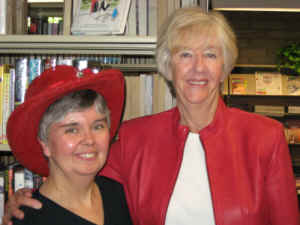
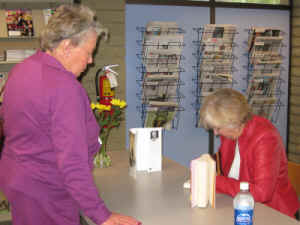
(L)
Lesa Holstine Library
Manager and Rhys
Bowen (R) Becky Shady getting book signed
by Rhys Bowen at the "Authors at the Teague" series held
at the Velma
Teague Branch Library Downtown Glendale AZ.
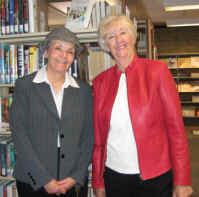
Bette
Sharpe, Velma
Teague Branch Library program manager and
guest author Rhys
Bowen
-
Lesa Holstine
-
Glendale, Arizona,
United States
|
Cover-Up: Mystery
at the Super Bowl
 John Feinstein's mystery, Cover-Up: Mystery at the Super Bowl might
feature two fourteen-year-olds, but it's a timely, and topical, book.
Feinstein created an imaginary Super Bowl XLII, set in Indianapolis,
instead of Glendale, Arizona. The featured teams are the Baltimore
Ravens, and the "Dreams." And, he thrusts his two young
reporters into the midst of a current scandal, steroids.
John Feinstein's mystery, Cover-Up: Mystery at the Super Bowl might
feature two fourteen-year-olds, but it's a timely, and topical, book.
Feinstein created an imaginary Super Bowl XLII, set in Indianapolis,
instead of Glendale, Arizona. The featured teams are the Baltimore
Ravens, and the "Dreams." And, he thrusts his two young
reporters into the midst of a current scandal, steroids.
Stevie Thomas and Susan Carol Anderson are young journalists who have
covered the U.S. Open and Final Four. As a result, they were given a
television show, Kid-Sports, with an all-sports cable network. When
Stevie is let go on the eve of the Super Bowl, a Washington newspaper,
and CBS, ask him to work for them. Stevie and Susan set out to cover a
sporting event, but once again, as at previous events, they find
themselves uncovering a story when a doctor lets it slip that some of
the Dreams failed a drug test.
As always, John Feinstein does a wonderful job bringing a national
sporting event to life. He is knowledgeable about the events, and the
people involved. His inclusion of celebrities helps to bring realism to
the stories. Feinstein mentions celebrities such as Wayne Gretzky, Tom
Cruise, Bob Costas, and Billy Joel. Everyone has an interest in the
Super Bowl. Cover-Up is a fascinating glimpse behind the scenes of the
Super Bowl, with a recognition of some of the problems that go
hand-in-hand with the enormous amounts of money involved in sports. It's
a fascinating mystery, with two likable characters, slimy villains, and
perfect timing.
Cover-Up: Mystery at the Super Bowl by John Feinstein. Alfred A. Knopf,
©2007. 978-0375842474 (hardcover), 298p.
Contact Lesa - lholstine@yahoo.com
Book Topics- Glendale
Daily Planet http://www.glendaledailyplanet.com/book_topics.htm
book blog: http://lesasbookcritiques.blogspot.com
-
Lesa Holstine
-
Glendale, Arizona,
United States
|
-
Lesa Holstine
-
Glendale, Arizona,
United States
Leighton
Gage at the Velma Teague Library
 Leighton Gage, author of Blood of the Wicked, appeared at the Velma
Teague Library last night, as part of the Authors at the Teague program.
If you get a chance to hear him, grab it. He's a man who can discuss
everything from Umberto Eco's The Name of the Rose to Dona Flor and Her
Two Husbands by Jorge Amado. He has the sense of humor to compare his
writing to that of poor Edward Bulwer-Lytton, and say he feels good that
his own writing isn't used for a contest that celebrates the worst of
all possible sentences, "It was a dark and stormy night." Gage
writes vivid scenes of violence with the soul of a poet. He has a love
of world travel that was inculcated by a sea captain grandfather, and he
brings Brazil to life in living color.
Leighton Gage, author of Blood of the Wicked, appeared at the Velma
Teague Library last night, as part of the Authors at the Teague program.
If you get a chance to hear him, grab it. He's a man who can discuss
everything from Umberto Eco's The Name of the Rose to Dona Flor and Her
Two Husbands by Jorge Amado. He has the sense of humor to compare his
writing to that of poor Edward Bulwer-Lytton, and say he feels good that
his own writing isn't used for a contest that celebrates the worst of
all possible sentences, "It was a dark and stormy night." Gage
writes vivid scenes of violence with the soul of a poet. He has a love
of world travel that was inculcated by a sea captain grandfather, and he
brings Brazil to life in living color.
Gage said it's important to put Blood of the Wicked into context. The
murders that  take place in the mystery could only have occurred in modern Brazil.
Although he talks about the socio-economic status and politics in
Brazil, he feels if you keep the reader intrigued and happy while
reading the book, you can slip in other things. This book discusses the
social, economic, and religious issues in Brazil. His second book, which
will be out next January, is about organ theft in that country, a real
problem. The third one will deal with child prostitution.
take place in the mystery could only have occurred in modern Brazil.
Although he talks about the socio-economic status and politics in
Brazil, he feels if you keep the reader intrigued and happy while
reading the book, you can slip in other things. This book discusses the
social, economic, and religious issues in Brazil. His second book, which
will be out next January, is about organ theft in that country, a real
problem. The third one will deal with child prostitution.
Blood of the Wicked deals with the conflict between rich and poor, the
landowners and the landless. There is a thin layer of the very rich in
Brazil, then a big space before the next class. There is a great deal of
wealth in the country, and a disproportionate of it is held by a very
few. Brazil is a very wealthy country. They used ehanol 25 to 30 years
ago. They are mineral-rich. They are rich in natural gas and petroleum.
The Amazon River is the source of 25% of the world's fresh water. It's a
wealthy country, with a large underclass. And, it's a place where life
is cheap. In the northern part of the country, it only takes $200 to
have an ordinary person killed. Over 1,500 people have been killed in
the land wars in Brazil.
Gage discussed the theology of liberation, an important concept in Blood
of the Wicked. This is a theory that the Catholic Church is holding back
the poor, with the promise of heaven in the next world, rather than the
promise of what they can have in this world. Many priests who believed
in the theology of liberation, and that they should be involved in this
movement, have been forced to go underground after the Society for the
Propogration of the Faith in Room said there is no theology of
liberation, and priests should not be involved. It has actually caused a
schism in the Church.
An other issue in the book is the corrupt police, which is very common,
south of the border. In that part of the world, cops are often
kidnappers, assassins and robbers in their day jobs. So, who do you
trust? Gage's protagonist is a federal cop, Mario Silva. He's based on
two people Gage knows. He made him a federal cop to allow him to roam
the entire country, to deal with a number of crimes.
One man who is the source of Mario Silva is a friend who attended the
FBI national academy in Quantico, which is a program that gives some FBI
expertise to law officers with at least five years experience.
Twenty-five policemen from other countries are invited each year. This
builds informed contacts in other countries.
Gage introduced his wife, Eide, when he said she was Brazilian, and
every single member of her family has been assaulted at one time by
gunman. He said everybody in the country gets stuck up at gunpoint. It's
a situation he uses in Blood of the Wicked. He said when the
dictatorship fell apart in the late 80's, everything became lax under
democracy. Crime rates exploded. It got so bad that people didn't even
talk about it, possibliy in denial. They live with that in Brazil. The
violence in the book reflects the reality of life in Brazil.
He said he lives in Brazil by choice because he loves it. He said it has
a natural beauty, and it's the most beautiful harbor in the world. He
said the people are nice. But, it's an accurate portrayal of the crime
in the country. He suggested people read the author's notes in Blood of
the Wicked before reading the story, in order to understand the
background.
The second cop who is the basis of Mario Silva is his brother-in-law's
closest friend. Senior police must have a law degree in Brazil. This man
is the Head of the Murder Squad in Sao Paulo, with a staff of 750, and
he feels he's understaffed. That says a great deal about the number of
murders in a city of 11 million people. Drug gangs even attack police
stations and kill cops. There are shantytowns around the major cities,
and criminals come down from the hills. He said it's very important not
to react to a stick-up. Don't stop at red lights. Slow down, and go
through the light, or you will be accosted. Brazil has the largest fleet
of armored personal vehicles in the world.
In answer to a question, he said everyone takes time off for Carnival,
and Eide said, even the criminals. He said he loves the sense of humor
of the people. Leighton Gage quoated Edgar Lee Masters in saying his
heart answered to Brazil, and that he found the melody that harmonized
with his heart.
Gage said he had been in advertising, and that's a young man's business.
He decided to write a book, and it's not easy. He said it took him four
or five books before he found his voice.
Leighton Gage's next book is due out in January 2008. I'm very honored
that Velma Teague is the only library he visited on his tour of the U.S.
I hope he and Eide come back.
Leighton Gage's website is www.leightongage.com
The Blood of the Wicked by Leighton Gage. Soho Crime, ©2007. ISBN
978-1569474709 (hardcover), 324p.
Contact Lesa - lholstine@yahoo.com
Book Topics- Glendale
Daily Planet http://www.glendaledailyplanet.com/book_topics.htm
book blog: http://lesasbookcritiques.blogspot.com
-
Lesa Holstine
-
Glendale, Arizona,
United States
|
Added Photos by Ed Sharpe
Glendale Daily Planet (click for larger view)
|
|
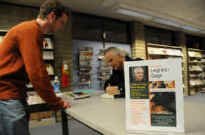
Visiting author Leighton Gage signing a
book for a visitor to the Authors At The Teague series. |
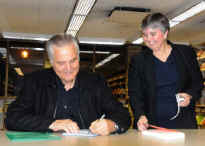
Visiting author Leighton
Gage signing Lesa Holstine's notes she took during the event. |
|
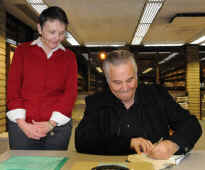
Library Program Manager Bette Sharpe, A
reference Librarian at the Velma Teague Branch of the Glendale Public
Library getting book signed by visiting author Leighton Gage |

Visiting author Leighton
Gage, wife Eide,
and Lesa Holstine examine an uncorrected
proof of one of Gage's works. |
|
Louise
Ure was born in Arizona, although she now lives
in San Francisco. Forcing Amaryllis, published in
2005 was her debut mystery. The Fault Tree has just
been published.
The Fault Tree
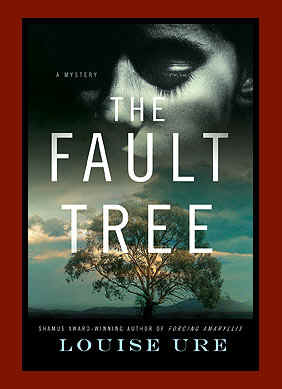 When Louise
Ure's first Arizona mystery, Forcing When Louise
Ure's first Arizona mystery, Forcing
Amaryllis, debuted in June 2005, I was impressed with
the compelling story and the stunning cover. It went
on to win the Private Eye Writers of America's Shamus
Award for Best First Novel.
The Fault Tree, the second book in Ure's Arizona
trilogy, was just released, and it won't disappoint
any of her fans. Hopefully, it will introduce a whole
new audience to this talented author.
Cadence Moran is thirty-one, and an auto mechanic who
works nights at Walt's Auto Shop in Tucson. Walking
home from work one night, she hears a scream,
laughter, and a car tear away. Cadence has just heard
the end of a murder. Although Cadence is a witness,
she's blind, and can only depend on her other senses
to tell the police what she "knows".
Cadence is reluctant to get involved. Eight years
earlier, she was the driver in the accident that
blinded her, and killed her niece. She's lived with
her blindness, and her blame every since. One of the
officers on the case is reluctant to believe her, but
Detective Dupree has a feeling that Cadence is
reliable.
As the police blindly search for killers who seem to
have no connection to the victim, the killers are
searching for Cadence. She's suddenly a target, a
witness to a crime that the killers don't realize she
never actually saw. Ure increases the tension, telling
the story of Cadence's fear and her clues, the police
investigation, and the killers' attempt to eliminate
any witnesses. Cadence's clues lead the police in the
wrong direction, while the killers make serious
mistakes. The three storylines increase the suspense,
driving the three groups together.
Louise Ure has written a powerful story of
disfunctional families, blame, and responsibility.
It's a mystery that starts on a somber, but riveting,
note. "At the end, there was so much blame to spread
around that we could all have taken a few shovelfuls
home and rolled around in it like pigs in stink." The
rest of The Fault Tree captures the reader, and
doesn't let you go until the final sentence.
It's early in the year to predict another award
winner, but I predict that Ure's The Fault Tree will
once again vie for the mystery awards. Readers
interested in a fascinating character, or one of the
best mysteries you'll read in 2008, should pick this
one up.
Louise Ure's website is www.louiseure.com
__________________________________________
If you're interested in authors and books, Authors at
the Teague might be of interest to you. On Jan. 24 at
7 pm, Leighton Gage, author of Blood of the Wicked,
will be appearing at the Velma Teague Library, 7010 N.
58th Ave., Glendale, AZ.
Contact Lesa - lholstine@yahoo.com
Book Topics- Glendale
Daily Planet http://www.glendaledailyplanet.com/book_topics.htm
book blog: http://lesasbookcritiques.blogspot.com
-
Lesa Holstine
-
Glendale, Arizona,
United States
|
|
Dilys Award Nominees
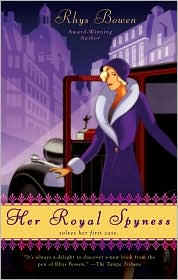 Congratulations
to this year's nominees for the Dilys Congratulations
to this year's nominees for the Dilys
Award, sponsored by the Independent Mystery
Booksellers Association, recognizing the book that
member bookstores most enjoyed handselling.
Nominees are: Her Royal Spyness by Rhys Bowen
Thunder Bay by William Kent Krueger
The Spellman Files by Lisa Lutz
Silent in the Grave by Deanna Raybourn
The Blade Itself by Marcus Sakey
The winner will be announced at Left Coast Crime in
Denver, March 6-9.
This award has local interest because Rhys Bowen,
author of Her Royal Spyness, will be appearing at the
Velma Teague Library, 7010 N. 58th Ave. in Glendale on
Sunday, Feb. 10 at 2 pm. Bowen will be discussing and
signing her books. No signup is required.
Contact Lesa - lholstine@yahoo.com
Book Topics- Glendale
Daily Planet http://www.glendaledailyplanet.com/book_topics.htm
book blog: http://lesasbookcritiques.blogspot.com
-
Lesa Holstine
-
Glendale, Arizona,
United States
|
-
Lesa Holstine
-
Glendale, Arizona,
United States
-
- Blood of the Wicked
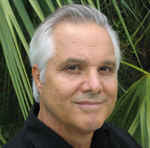 As part of
the Authors at the Teague series, Leighton As part of
the Authors at the Teague series, Leighton
Gage will be appearing at the Velma Teague Library on
Jan. 24 at 7 pm. He's a man who sounds as fascinating
as the lead character in his debut mystery, Blood of
the Wicked. The book has already received rave
reviews, but it doesn't hurt to add my praise. It's a
brutal, graphic story at times, but Gage's notes at
the end show he knows the Brazilian world he portrays.
Leighton Gage's knowledge of the political, economic,
and religious problems in Brazil is shown in his vivid
descriptions of the cruelty of life.
Blood of the Wicked introduces Mario Silva, Chief
Inspector for Criminal Matters in the Brazilian
Federal Police. He's a well-educated man, with a law
degree and training with the FBI. And, he's a
complicated character. It's well known in the country
that Brazilian justice is subject to bribes, money and
power. When Silva's father his brother-in-law were
killed in the early years of Mario's career, he took
matters into his own hands. Silva understands that
sometimes "Brazilian justice" isn't actually justice.
Silva's latest case starts out as a problem, and only
grows more complicated. Before it's over, it involves
landowners and the landless, the state police, the
media, street kids, and the Catholic Church. It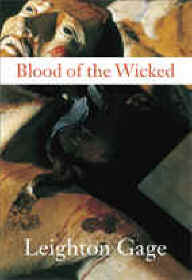
begins, and ends, with the death of priests. When a
bishop is assassinated, Silva's dislikable political
boss sends him to take charge. He arrives to find his
case entwined with a recent death of a family in the
landless movement. Brazil has a constitutional
obligation to confiscate untilled land and give it to
the landless. The landowners fight back. The landless
occupy land they don't own, and violence results. And,
the corrupt police support the landowners in many
areas.
As Silva and his small team from the Federal Police
investigate, they only face opposition from the state
police and the landowners. Before Silva can put
together the facts, he finds events escalating out of
control, as reporters are murdered, the families
occupying land are massacred, and each clue leads to
more violence. And, suspicion alone can't solve the
case.
Leighton Gage has written a powerful debut mystery. He
brings Brazil to life, with the complex politics, and
ugliness of the poverty, and, at times, the life. For
those who object to the brutality in the book, the
author explains that documented deaths are over 1,500
in Brazil's land wars. Gage shows the extremes of
poverty and wealth, capturing it vividly in two scenes
linked by one character, the mother of a street boy.
He tells of the family tragedies in Brazil, and the
crime. And everything is linked together, the
lifestyles, the police, the politics, and the Church.
Chief Inspector Mario Silva himself, is a complex man,
who has witnessed, and lived, the contradictions of
Brazilian life and "Brazilian justice."
I'm waiting for the return of Silva in the sequel to
Blood of the Wicked. And, I can't wait to meet the man
who can bring a character, and a country, so vividly
to life.
Leighton Gage will be appearing at the Velma Teague
Library in Glendale, AZ on Thursday, Jan. 24 at 7 pm.
Gage's website is www.leightongage.com
Blood of the Wicked by Leighton Gage. Soho Crime,
©2008, ISBN 1569474702 (hardcover), 324p.
Contact Lesa - lholstine@yahoo.com
Book Topics- Glendale
Daily Planet http://www.glendaledailyplanet.com/book_topics.htm
book blog: http://lesasbookcritiques.blogspot.com
-
-
Lesa Holstine
-
Glendale, Arizona,
United States
-
|
-
New Foreign Crime Novelist
Stops in Glendale on U.S. Tour
"Authors At The
Teague" Series Presentation
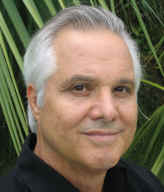 GLENDALE,
Ariz. – New author Leighton Gage has lived all over the world
– Australia, Europe, South America, plus traveled widely in Asia
and Africa. He has had a background in the literary arts for years
as a copywriter, an advertising creative director, a magazine
editor, and a writer/producer/director of documentary films and
industrial videos. GLENDALE,
Ariz. – New author Leighton Gage has lived all over the world
– Australia, Europe, South America, plus traveled widely in Asia
and Africa. He has had a background in the literary arts for years
as a copywriter, an advertising creative director, a magazine
editor, and a writer/producer/director of documentary films and
industrial videos.
Now a part-time Brazilian resident, Gage,
is taking his experiences and turning them into a new
craft—mystery writing. He has fashioned Mario Silva, the chief
inspector for criminal matters of the federal police of Brazil.
The engaging 65-year-old crime writer will
be on an author tour, crisscrossing the U.S., and stop in Glendale
at the Velma Teague Branch Library, 7010 N. 58th Ave., on Thursday,
Jan. 24 at 7 p.m.
In his first Mario Silva novel, “Blood of
the Wicked,” Gage begins the story in the remote Brazilian town of
Cascatas do Pontal, where landless peasants are confronting the
owners of vast estates. The bishop arrives by helicopter to
consecrate a new church and is assassinated. Silva is dispatched to
the interior to find the killer. The pope himself has called
Brazil’s president; the pressure is on for Silva to perform.
Assisted by his nephew, Hector Costa, also
a federal policeman, Silva must battle the state police and a
corrupt judiciary as well as criminals who prey on street kids, the
warring factions of the Landless League, the big landowners and the
church itself, in order to solve the initial murder and several
brutal killings that follow.
Gage brings a lot to the table with his
experiences in foreign countries. He visited Spain in the time of
Franco, Portugal in the time of Salazar, South Africa in the time of
apartheid, Chile in the time of Pinochet, Argentina in the time of
the junta, and Prague, East Germany and Yugoslavia under the
Communist yoke. He is fluent in three languages and has a good
working knowledge of three more.
During his advertising career, he won over
130 awards for creative excellence. He served as a jury member in
all of the world’s major advertising film festivals. He has been a
featured speaker in a variety of locations, including Helsinki, Hong
Kong and Bombay.
“Blood of the Wicked” will be available
for purchase at the program. No reservations are necessary. For more
information, call 623-930-3431.
|
|
Authors at the Teague
Series |
|
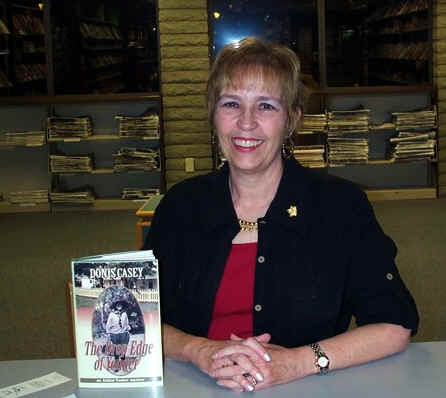
On Thursday, Nov.
29 at 7 pm, award-winning mystery author
Donis Casey discussed and signed
her latest mystery,
The Drop End of Yonder.
Did you miss this presentation?
In a continuing series the Velma Teague
Library presents authors for you to meet.
The Place: Velma Teague Library,
7010 North 58th Avenue, Glendale, presents Authors at the Teague.
No reservations are necessary. For more
information, call 623-930-3431. |

-
Lesa Holstine
-
Glendale, Arizona, United States
|
|
Authors at the Teague
Series
Donis Casey
|
|

Thursday, Nov. 29th, award-winning mystery author
Donis Casey appeared at the Velma Teague Library in
Glendale, AZ, as one of the Authors at the Teague.
Casey just won the Arizona Book Award for Best Mystery
for her first book, The Old Buzzard Had It Coming.
Casey introduced the character of Alafair Tucker in
that first book. Donis grew up in Oklahoma, and her
family is from that part of Oklahoma where the books
are set. She said she takes stories from family
history, particularly her husband, Don's family, for
some of the book. Her mother told her about incidents,
or her in-laws did. She jokes that the worst crimes
are taken from his family history, and not hers.
She does a great deal of research, reading, and
discussing family stories to write her books. The
murder in her latest book, The Drop Edge of Yonder, is
based on an actual murder. One of the last scenes in
the book, a powerful one, is based on an article she
read over 30 years ago. A man told about someone he
"killed" in a battle, who kept attacking him, even
after he was basically dead.
Alafair Tucker, Casey's lead character, is not
particularly interested in being a detective. She's a
farm wife, with a husband and ten kids. What she is
interested in is her kids, and keeping them out of
trouble. In each book, one of the grown children gets
in trouble, and needs their mother to get them out of
it. Each book is about a different grown child.
Phoebe, a gentle girl, is featured in The Old Buzzard
Had It Coming. Alice, Phoebe's twin, is a headstrong
girl who doesn't appreciate her mother's interference,
is the lead in Hornswoggled. The third, and most
recent mystery, The Drop Edge of Yonder, stars Mary,
the good-natured daughter. Mary knows she holds a
vital clue to a murder in her mind. She's been
traumatized, but knows if she's left in peace, it
might float to the surface. The problem is her mother.
Alafair is desperate to keep her daughter safe from a
killer who is still out there, so she hovers and
snoops.
Donis Casey was raised in Oklahoma. She said in
writing these books, she discovered people don't know
anything about Oklahoma. She sarcastically thanked
John Steinbeck for that. She said in the 1910's,
Oklahoma was a brand new state, and some people were
very rich, with cattle, oil and land. Others who were
poor and lawless poured into the state from all over.
In some ways, Oklahoma was still the wild, wild west,
but in the cities, it was cutting edge. It was
racially different from other parts of the country.
The Indians in Oklahoma were prosperous, educated, had
their own nation, their own newspapers and schools.
They were not happy with the influx of people. Nor
were the blacks. There were black towns in Oklahoma,
settled after the Civil War. They were not happy with
their change in status. Some in the state were very
left-wing, not at all interested in the war brewing in
Europe.

Donis Casey and
Lesa Holstine
Casey said in writing a historical mystery, the author
must know about the place and time. The world was much
larger, and much different in the 1910's. Crime
investigation depended on where you lived. In London
in 1914, a detective might have access to
fingerprints, and other "modern" techniques. In
Oklahoma in 1914, the local law knew the family and
friends of the victim, and in Boynton, the local
sheriff might have had a cousin like Alafair. People
were inclined to tell her things, since she was
"everyone's mother."
Alafair Tucker believes that loving can make you
dangerous. Intuition, not intellect, might be the
highest form of "knowing".
The pictures on the covers of Casey's first two books
are her relatives. The one on the cover of The Drop
Edge of Yonder was found at the Tempe Historical
Museum. It looks like her father's favorite aunt, Mary
Morgan, the character Mary was based on. The house on
the cover is her grandfather's house in Boynton,
Oklahoma, the model for Alafair's house.
In her most recent books, she includes a family tree,
so readers can keep the family straight. She also
includes recipes in the back of the books, and tells
how to eat that food. She chooses titles that are
ethnic sounding. The Drop Edge of Yonder is an old
Texas saying that implies a place halfway between this
world and the next.
Casey plans to do ten books, if she can maintain the
high level of quality. She already has ideas for all
ten. She's working on the fourth book right now. It
will be set in 1915, and Martha, the oldest daughter,
is the focus. It's a travel book, because Alafair,
Martha, and Grace, the baby of the family, travel. The
fifth book will be set in 1917. The world is changing.
It's a time of turmoil, with some similarities to the
current state of the world.
Farm families back then raised a labor force. At this
stage of her life, Alafair can investigate crimes
because her older daughters do much of the work around
the house. Alafair is based a lot on what Casey
observed about her grandmothers, her own mother, and
heard of her mother-in-law. Women were less
constrained on the frontier than in places such as New
York City. The women were laconic, with terse
deliveries. They talked straight.
Hornswoggled and The Drop Edge of Yonder are just out
is audio, so they're now available in book or audio
form. Readers will be waiting for the fourth book.
Thank you to Bette
Sharpe, librarian at the Velma
Teague Library, for arranging for Donis Casey's
appearance at the library, and to Poisoned Pen
Bookstore in Scottsdale, for sales of the books.
The next Authors at the Teague appearance will be by
Leighton Gage, author of Blood of the Wicked. Gage
will be coming from Brazil to speak at the library at
7 p.m. on Thursday, Jan. 24th.

Donis Casey and Bette Sharpe
Contact Lesa - lholstine@yahoo.com
Book Topics- Glendale
Daily Planet http://www.glendaledailyplanet.com/book_topics.htm
book blog: http://lesasbookcritiques.blogspot.com
Published GDP 12/02/07 |
|
 |
-
Lesa Holstine
-
Glendale, Arizona, United States
|
Forcing
Amaryllis
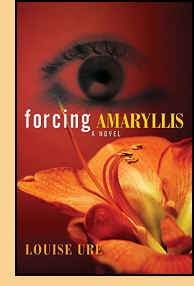 The
last time I was so excited about a first-time mystery writer, I was
reading Jonathon King's The Blue Edge of Midnight, which went on to win
the Edgar Award for first novel. Forcing Amaryllis by Louise Ure is a
powerful novel, with a fascinating protagonist. I know some readers were
fed up with Calla, the main character, and others said the book's style
indicated that it was a first novel, but I don't think they read far
enough in the book. The
last time I was so excited about a first-time mystery writer, I was
reading Jonathon King's The Blue Edge of Midnight, which went on to win
the Edgar Award for first novel. Forcing Amaryllis by Louise Ure is a
powerful novel, with a fascinating protagonist. I know some readers were
fed up with Calla, the main character, and others said the book's style
indicated that it was a first novel, but I don't think they read far
enough in the book.
Calla Gentry is a trial consultant in Tucson, a woman who only served as
a consultant on civil cases because she was afraid to deal with criminal
cases. Seven years earlier, Gentry had been a strong woman who worked in
advertising. But, that was before her sister's brutal rape at knife
point. Calla lost her sister, Amaryllis, when her failed suicide attempt
put her in a coma. Calla also lost her own confidence and sense of
security. Amaryllis' rape incapacitated Calla so much that their aunt
told Calla she needed to take her life back. She told her, "Just
like Amy. It's a life of suspended animation."
When Calla's boss forces her to take on a rape/murder case, she is
struck by the similarities between that case and her own sister's.
Together with two friends and a private investigator, Calla attempts to
link other rapes with Amaryllis'. The descriptions of the rapes,
although not written in graphic detail, are not easy to read. The jury
selection process in the book, and the trial itself are fascinating.
But, it is the change in Calla's character, as she forces herself to
move out of her safe surroundings, that is the most fascinating.
Give Calla a chance. In my opinion, Forcing Amaryllis by Louise Ure
deserves to be nominated for this year's Edgar for best first mystery.
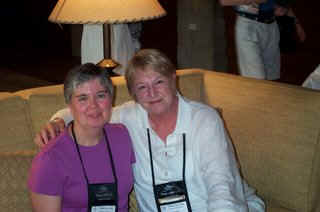
Lesa
Holstine and Louise Ure
Followup -
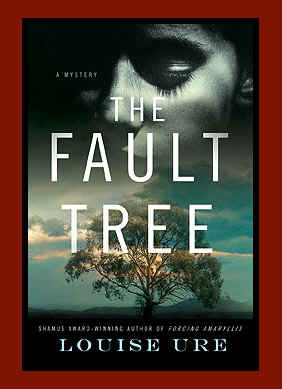 Forcing Amaryllis
by Louise Ure went on to win the Forcing Amaryllis
by Louise Ure went on to win the
Shamus Award for Best First Novel, an award presented by the Private Eye Writers Association.
Ure's next novel, The Fault Tree, is set in Tucson.
It's scheduled for publication in January. Ure's
family is from Tucson.
You can meet other authors when the Velma Teague Library, 7010 North 58th Avenue, Glendale, presents
Authors at the Teague. On Thursday, Nov. 29 at 7 pm, award-winning mystery author Donis Casey will discuss
and sign her latest mystery, The Drop End of Yonder.
Published
GDP 12/1/07
Her
Royal Spyness
 Rhys Bowen is known for bringing a time period and setting to life in
her mysteries, and her latest ones, Her Royal Spyness is no exception.
With the Evan books, she takes readers to Wales. Her Molly Murphy books
transport readers to the world of an Irish immigrant in New York. Now,
we're transported to England in the 1930s to spend time with a family
member considered minor royalty.
Rhys Bowen is known for bringing a time period and setting to life in
her mysteries, and her latest ones, Her Royal Spyness is no exception.
With the Evan books, she takes readers to Wales. Her Molly Murphy books
transport readers to the world of an Irish immigrant in New York. Now,
we're transported to England in the 1930s to spend time with a family
member considered minor royalty.
Lady Victoria Georgiana Charlotte Eugenie is the daughter of a deceased
Duke, and the sister of one. Georgie is impoverished, and the only
savior on the horizon is marriage. Knowing her relatives want to marry
her off, she escapes to London, only to find herself having tea with
Queen Mary. The Queen wants her to attend a party in order to spy on her
son, David, who seems to be linked with an American woman who is still
married.
Before the house party, Georgie has time to find and lose a job at
Harrods, become a cleaning woman for wealthy women, and find a body in
the bathtub at her brother's London home. Unfortunately, the deceased
had recently met with her brother, Binky, and had papers to claim their
family estate. Now, Georgie may find herself not only a spy for the
Queen, but also an investigator trying to save her brother from a murder
charge.
I haven't read Bowen's award-winning Molly Murphy series, but Her Royal
Spyness shares a humorous tone with the Evan Evans series. How does
someone thirty-four times removed from the throne make a living in 1932?
It's fun to watch Georgie take on society and a murder case. She's a
strong, brave woman who conforms with some of society's expectations,
while breaking new ground. Hopefully, Her Royal Spyness will return with
more adventures.
Rhys Bowen's website is www.rhysbowen.com
Her Royal Spyness by Rhys Bowen. Berkley Prime Crime, ©2007. ISBN
978-0-425-31567-8 (hardcover), 324p.
-------Followup - Rhys
Bowen has been nominated for every
major award in mystery writing, and has won seven,
including both the Anthony and Agatha Awards. Bowen
has just purchased a winter home in the Valley, and
she will be appearing at the
Velma Teague Library on Sunday,
Feb. 10, 2008, as part of the Authors at the Teague series.
__________________
Donis Casey, another award-winning mystery author,
will be the next author to appear for the Authors at
the Teague series. The Tempe resident will talk and
sign books at 7 pm on Thursday, Nov. 29 at the Velma
Teague Branch Library, 7010 N. 58th Ave. Casey's
books will be available for purchase at the program.
No reservations are necessary. For more information,
call 623-930-3431.
Published GDP 11/10/07
McCafferty's Nine By Elizabeth Gunn
Elizabeth Gunn brings back Jake Hines, Chief of
Detectives in Rutherford, Minnesota, in McCafferty's Nine. It's a welcome
return for those of us who have been waiting to see what's happening in
Jake's life.
Gunn does an outstanding job combining Jake's personal life with a police
procedural set in a medium-sized community. During the course of this
seven boo k series, readers have grown to know Jake, and the police force
that work with him. Now, while Jake anxiously awaits the birth of his
first child, he also deals with two odd cases confounding the police. One
series of crimes involves an odd cluster of assaults, women who have been
mugged by a runner the police have dubbed "The Sprinter." Ray
Bailey, head of the Peoples Crime section fears the runner is getting more
violent. The other group of crimes involves an entire neighborhood that
seems to have bogus charges on their credit cards. Although it's not
usually a problem the police deal with, Jake gives the Property Crimes
division a little leeway to work the case. Everything grows more
complicated the night a police sting coincides with a murder. k series, readers have grown to know Jake, and the police force
that work with him. Now, while Jake anxiously awaits the birth of his
first child, he also deals with two odd cases confounding the police. One
series of crimes involves an odd cluster of assaults, women who have been
mugged by a runner the police have dubbed "The Sprinter." Ray
Bailey, head of the Peoples Crime section fears the runner is getting more
violent. The other group of crimes involves an entire neighborhood that
seems to have bogus charges on their credit cards. Although it's not
usually a problem the police deal with, Jake gives the Property Crimes
division a little leeway to work the case. Everything grows more
complicated the night a police sting coincides with a murder.
And, Jake? He works hard to juggle the cases under his jurisdiction. At
the same time, he's haunted by a warning dream of a wolf, one that always
portends trouble in his life. He can't lose focus at work, although he
worries about the forthcoming birth.
McCafferty's Nine succeeds in the best tradition of a police procedural.
It allows the reader to follow a police investigation, while peering
inside the personal lives of the police, particularly Jake Hines.
Elizabeth Gunn's website is www.elizabethgunn.com
McCafferty's Nine by Elizabeth Gunn. Severn House, ©2007, ISBN
978-0-7278-6514-4 (hardcover), 216p.
Followup -
Gunn, a Tucson resident, has a taste for adventure.
She has been a private pilot, sky diver, SCUBA diver,
and liveaboard sailor. She appeared at the Velma
Teague Library as part of the Authors at the Teague
series.
Donis Casey, the award-winning mystery author, will be
the next author to appear for the Authors at the
Teague series. The Tempe resident will talk and sign
books at 7 pm on Thursday, Nov. 29 at the Velma Teague
Branch Library, 7010 N. 58th Ave. Casey's books will
be available for purchase at the program. No
reservations are necessary. For more information,
call 623-930-3431.
Published GDP 10/02/07
Contact Lesa - lholstine@yahoo.com
Book Topics- Glendale
Daily Planet http://www.glendaledailyplanet.com/book_topics.htm
book blog: http://lesasbookcritiques.blogspot.com
 |
-
Name:
Lesa Holstine
-
Location:
Glendale, Arizona, United States
|
|
| Zoë
Sharp, UK Mystery-Adventure Author, Visits
Glendale Library |
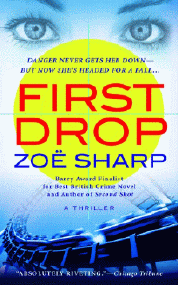
|
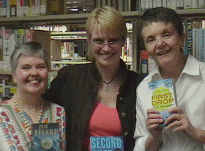
Lesa Holstine, Zoë Sharp
and Bette Sharpe
at Velma Teague Library in Glendale
(Photo by Ed Sharpe)
|

Zoë Sharp
and attendee
(Photo by Ed
Sharpe) |
|
|
Lesa's
Book Critiques - Zoё Sharp at the Velma Teague
Library
- By Lesa Holstine |
Sunday,
Sept. 16
Zoё
Sharp, author of First Drop and Second Shot, the Charlie Fox
thrillers that are set in the U.S., appeared today at the
Velma Teague Library in Glendale, AZ. She and her husband,
Andy, arrived early enough that Zoё was able to judge
the final pictures in our library photo contest.
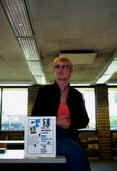 If you get the chance to hear Zoё speak, grab it. She
started out discussing her background, and then talked about
her books. She said she photographs things, usually race cars.
She hangs out of fast-moving cars. So, when they visited
Daytona Beach, they went to car shows, and a car stereo show.
At the time, she thought it would be a wonderful place for
someone on the run with a teenager, because the place is
filled with teens.
If you get the chance to hear Zoё speak, grab it. She
started out discussing her background, and then talked about
her books. She said she photographs things, usually race cars.
She hangs out of fast-moving cars. So, when they visited
Daytona Beach, they went to car shows, and a car stereo show.
At the time, she thought it would be a wonderful place for
someone on the run with a teenager, because the place is
filled with teens.
Sharp's character, Charlie Fox, came out of the military under
a cloud. She trained as a bodyguard, and her first job was in
the U.S. Naturally, as the newest one on the team, she got the
nasty job of looking after a fifteen-year-old. This is the
background for First Drop, just released in paperback.  After she and the boy finish riding a roller coaster at an
amusement park, someone shoots at them.
After she and the boy finish riding a roller coaster at an
amusement park, someone shoots at them.
Zoё said since she and Andy have made about 35 trips to
the U.S., part of the problem is trying to keep Charlie's
Britishness. She said she likes to visit unusual places, so
she can add elements to her books. She said a cab driver in
Oklahoma City couldn't figure out why anyone would come there.
She believes setting is as much a part of the book as another
character. Road Kill, the book in between First Drop and
Second Shot, is set in Ireland, and she used the location as
part of character. Second Shot is set in North Conway, New
Hampshire, and she wanted the small town feel.
Sharp said she does a great deal of research. The internet can
put you in touch with people who really know details. You can
discover resources through the internet, but you can't get
snippets such as smells if you don't go the location. She said
she does research, and then less than 90% of research gets in
the book. She may keep only 10%, just what is needed. She said
she talked to someone who was shot to get the feel that comes
through in Second Shot. Zoё said she's a lazy reader who
is a lazy writer. She skips over much of the narration.
Zoё told us that you can't shoot anymore in Britain, so
she takes the opportunity to get out and shoot guns when she
comes to the U.S. She likes to have shot the guns she uses in
the books. They had just been in Houston, where they shot.
Last year, at Bouchercon, she put a prize up for bid,
breakfast and a chance to go to the gun range with the author.
The woman who won had been blind since birth, and always
wanted to shoot. They bought radios at Radio Shack, and hung
them over the targets. She did so well, that they brought out
a submachine gun.
One of the audience members asked her about her method of
writing. She said she makes time. She has a full-time day job,
photography. She and Andy have travelled 30,000 miles a year
in England alone for the job. So, writing has to work around
her day job. She works on the laptop in the car. She sets
herself a monthly target, so many words a month.
Zoё plots her books because the editor wants to know the
plot. However, she doesn't plot out her characters behavior,
and they can change. In discussing one of her characters who
had the name of a librarian, she mentioned that libraries in
the U.K. have been supportive. There are not as many
independent bookstores as in the U.S., so libraries and book
clubs there have been important.
Charlie Fox's military career has not yet been written about
in an entire book. Sharp tries to reveal a little of the
backstory in each book, without spoiling previous books for
those who haven't read them. Charlie Fox was ill-prepared for
civilian life. Special Forces backgrounds are good for close
protection. Women, especially, don't stand out. Charlie's job
is to blend in, because if someone is a target, the first
intent is to kill the bodyguard. If you can't identify the
bodyguard, it makes it harder. Backstory indicates that
Charlie has had some successful jobs. In Sharp's latest
thriller, Second Shot,  Charlie doesn't have the physical self-assurance because she's
been injured. Zoё said she read a number of the authors
whose female characters seemed passive, in need of rescuing.
She wanted to create a woman who did her own rescuing.
Charlie doesn't have the physical self-assurance because she's
been injured. Zoё said she read a number of the authors
whose female characters seemed passive, in need of rescuing.
She wanted to create a woman who did her own rescuing.
In discussing photography, she reminds people she is a
photographer, not paparazzi. Her long lens is for motorsports,
not looking in people's windows.
The question was asked, are you Charlie Fox. The answer was,
they do have a lot of the same interests. Zoё did
competitive rifle shooting. She rides motorbikes. They are no
longer allowed to shoot in the U.K., following a school
shooting about ten years ago, when guns were banned. Unlike
Charlie, Zoё only shoots on ranges.
Sharp was asked about the beginning of her books. Her response
was that first lines are so difficult. They usually aren't the
start of the story, just a jumping off point. It takes her a
while to get the beginning. She finds it important to find the
voice for a book. She has to find the rhythm of words. She
writes a fairly straight forward style.
When she was asked about Charlie's background, she said there
is a bias against women in the military in the U.K. They don't
believe women can do the job. Charlie is still searching for
respect, particularly from her parents.
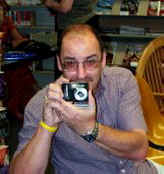 Zoё Sharp always knew she wanted to write. She wrote her
first book at fifteen, one that is unpublished. But, she did
submit it at the time, and received rave rejections. She did
all kinds of odd jobs. When she bought her first car, it was
an old Triumph Spitfire. She rebuilt it, which led to writing
about car restorers, then all kinds of stuff about cars.
Eventually, they asked her to take pictures to go with the
words. Now, she really only does the photography, and her
husband, Andy, writes.
On this trip, though, Andy has been pressed into service as
the photographer.
Zoё Sharp always knew she wanted to write. She wrote her
first book at fifteen, one that is unpublished. But, she did
submit it at the time, and received rave rejections. She did
all kinds of odd jobs. When she bought her first car, it was
an old Triumph Spitfire. She rebuilt it, which led to writing
about car restorers, then all kinds of stuff about cars.
Eventually, they asked her to take pictures to go with the
words. Now, she really only does the photography, and her
husband, Andy, writes.
On this trip, though, Andy has been pressed into service as
the photographer.
Zoё was writing a classic car column for a magazine when
she started getting death threats. Was it because she was a
woman? When she started writing in 1988, few women were
writing about cars. She's still the only woman photographer in
the U.K. doing car shoots. And, now that she's writing
thrillers, she recognizes that some people feel that women
can't write thrillers.
She's currently writing a standalone. The next book in the
Charlie Fox series, Third Strike, has already been submitted
to the publisher. That one starts in New York, goes to Boston,
and then to Houston. She's done a number of short stories,
including ones that feature Charlie. For the U.S. paperback
release of First Drop, she wrote a story that's included in
that book.
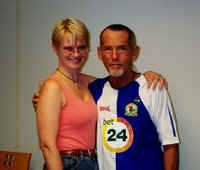
Following Zoё's book signing,
we took some pictures.
I took one of my husband, Jim, with her. And, before we
finished up, Jim took a nice picture of me with Zoё.
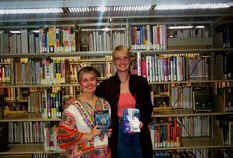
|
|
 After
pictures, we invited everyone over to a local coffee shop, A
Shot of Java . The owner, Lisa Dowd, was nice enough to open
up just for us. Nine of us went over, and had the chance to
talk to Zoё and Andy. It was the perfect ending for our
day. Their day? They were heading off to a gun club. After
pictures, we invited everyone over to a local coffee shop, A
Shot of Java . The owner, Lisa Dowd, was nice enough to open
up just for us. Nine of us went over, and had the chance to
talk to Zoё and Andy. It was the perfect ending for our
day. Their day? They were heading off to a gun club.
If you get a chance to meet Zoё Sharp, you'll enjoy it.
It will make you appreciate the Charlie Fox books even more.
The books set in the U.S. are First Drop, and now, Second
Shot.
And, check out Zoё's website, www.zoesharp.com
where she has a blog of
her U.S. trip.
|
 |
 |
 |
 |
| Zoё
Sharp & Lesa Holstine |
(Left)
Some of the group
over at A Shot of Java
(Right) Zoё Sharp |
Lisa
Dowd, owner, A Shot of Java |
Contact Lesa - lholstine@yahoo.com
Book Topics- Glendale
Daily Planet http://www.glendaledailyplanet.com/book_topics.htm
book blog: http://lesasbookcritiques.blogspot.com
 |
-
Name:
Lesa Holstine
-
Location:
Glendale, Arizona, United States
|
I
began my Library career as Director of a Public Library on the
shores of Lake Erie at the age of 22. My husband & I lived
in Florida for 18 years, where I was a
Librarian/Administrator, before moving to beautiful Glendale,
AZ. I am presently a Library Manager and a contributing Book
Reviewer for Library Journal and various websites. Lesa's Book
Critiques is syndicated through Blogburst, and reviews have
been picked up by Reuters, USA Today and other news
distributors.
Published GDP
09/17/07
|
The Old Buzzard Had It Coming
I discovered a wonderful new character I hated to
leave behind when I finished Donis Casey's first mystery, The Old
Buzzard Had It Coming. Hopefully, this will be the first of many
mysteries to feature Alafair Tucker, the matriarch of an Oklahoma farm
family. Alafair is only 38, but as the strong, wise mother of nine, she
certainly deserves to be called matriarch. And, she'll fight for her
children, and those she feels deserves help.
It's a nasty January day in 1912 when Harley Day dies. No one regrets
the death of the drunk, abusive man, including Alafair, but when it's
discovered that he was murdered, Alafair begins to worry. Everyone
wanted him dead, but his son, John Lee, is a suspect. And, Alafair was
just learning how much her seventeen year old daughter, Phoebe, cared
for John Lee. Like a mother hen, Alafair is going to protect her
daughter. If her daughter loves John Lee, there must be some good in
him, so Alafair determines she'll find Harley Day's killer.
Alafair Tucker makes a logical detective. She understands people, knows
the people in this community, and has a great deal of common sense. As
the mother of a large family, she should have a number of opportunities
to solve problems.
Casey also does a wonderful job with the details of day-to-day life in
Oklahoma in 1912. Her description of wash day for a family of eleven
shows the amount of work a farm woman did, just in one day. The entire
book is filled with such descriptions of daily life.
History, mystery and romance combine in this terrific first mystery.
Check out Donis Casey's web site at www.doniscasey.com
The
Drop Edge of Yonder
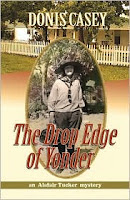
The summer of 1914 is already sweltering in Oklahoma, but murder makes
life even more oppressive in Donis Casey's latest mystery, The Drop Edge
of Yonder. Casey, who just won the Arizona Book Award for Best Mystery
for her debut, The Old Buzzard Had It Coming, brings back Alafair Tucker
in this third mystery, to cope with a family murder.
Alafair is a farmer's wife in Oklahoma, and a mother of ten. Daily life
of cooking, cleaning and washing for the family keeps her busy, but her
main concern is protecting her family. She thought nothing of allowing
two daughters, Mary and Ruth, to accompany their uncle, Bill McBride, on
an afternoon horseback ride with his girlfriend, Laura. However, Bill is
shot, his girlfriend abducted, and Mary is left unconscious on the
ground, suffering from a head injury. As Mary struggles to remember the
events that lead to Bill's death, Alafair eyes the neighbors and her own
farm hands, suspecting everyone. When Laura and Mary's lives are
threatened, Alafair knows her family will not be safe until the killer
is found.
Life and death hit home for Alafair Tucker in this latest mystery. The
sorrow and anger over Bill's death is balanced by the joy of a birth in
the family. Fear for one family member who is threatened by a killer is
balanced by fear for another who is giving birth.

The Alafair Tucker mysteries are suspenseful page turners. While telling
a story of an Oklahoma farm family in the early twentieth century, Donis
Casey is capable of playing with the reader's anxieties. The Drop Edge
of Yonder is the third intriguing mystery in this series. Don't miss the
earlier two, The Old Buzzard Had It Coming and Hornswoggled. You'll want
to get to know Alafair Tucker and her family.
Donis Casey was an academic librarian for many years at Arizona State University in Tempe. She's a third generation Oklahoman
who grew up on a farm and in small towns. The Tempe resident will talk
and sign books at 7 pm on Thursday, Nov. 29 at the Velma Teague Branch
Library, 7010 N. 58th Ave. in Glendale, AZ. Casey's books will be
available for purchase at the program. No reservations are necessary. I
hope to see you there!
Donis Casey's website is www.doniscasey.com
The Drop Edge of Yonder by Donis Casey. Poisoned Pen Press, ©2007. ISBN
978-1-59058-446-0 (hardcover), 217p.
Followup - Donis Casey's first book, The
Old Buzzard
Had It Coming, just won the Arizona Book Award for
Best Mystery. The Arizona Book Award is given out
every two years. Eligible books had to have been
published between Jan. 1, 2005 and Dec. 31, 2006.
Casey was an academic librarian for many years at
Arizona State University in Tempe, Arizona. She left
academia in 1988 to start a Scottish import gift shop
in downtown Tempe. Eventually, she devoted herself to
full-time writing. She has lived in Tempe for over
twenty years.
Casey will be appearing at the Velma Teague Branch
Library, 2010 N. 58th Ave. at 7 pm on Thursday, Nov.
29.
Published GDP 11/20/07
Contact Lesa - lholstine@yahoo.com
Book Topics- Glendale
Daily Planet http://www.glendaledailyplanet.com/book_topics.htm
book blog: http://lesasbookcritiques.blogspot.com
 |
-
Name:
Lesa Holstine
-
Location:
Glendale, Arizona, United States
|
I
began my Library career as Director of a Public Library on the
shores of Lake Erie at the age of 22. My husband & I lived
in Florida for 18 years, where I was a
Librarian/Administrator, before moving to beautiful Glendale,
AZ. I am presently a Library Manager and a contributing Book
Reviewer for Library Journal and various websites. Lesa's Book
Critiques is syndicated through Blogburst, and reviews have
been picked up by Reuters, USA Today and other news
distributors.
|
Evolution, Me & Other
Freaks of Nature
 Evolution, Me & Other Freaks of Nature may be Robin Brande's first
novel, but if this one is any indication, she's going to be a star in
teen literature. Her book has humor, irreverence, common sense, and a
little romance. It's a romantic comedy addressing serious issues. It's a
novel many adults would also enjoy.
Evolution, Me & Other Freaks of Nature may be Robin Brande's first
novel, but if this one is any indication, she's going to be a star in
teen literature. Her book has humor, irreverence, common sense, and a
little romance. It's a romantic comedy addressing serious issues. It's a
novel many adults would also enjoy.
Mena Reece's first day of high school isn't going well. Her former best
friend, the pastor's daughter, is snubbing her, along with all of her
ex-friends from Sunday School. Mena sent a letter to a young man,
confessing that the church, and her friends, had targeted him. Families
were sued, Mena's an outcast, and her parents aren't speaking to her
because they might lose their business.
So, it's a lonely teenager who enters biology class on the first day of
school, to be greeted by an eccentric, award-winning science teacher,
and a boy named Casey who becomes her lab partner. Casey is bright,
funny and offers a friendship Mena needs.
If things weren't bad enough at school, when Ms. Shepherd starts to
teach evolution, everything goes haywire. Mena's former friends protest,
demanding to be taught intelligent design. The pastor shows up, church
members run for the school board, and Casey's sister, Kayla, editor of
the school newspaper, jumps on the story. Suddenly, Mena is caught
between the science she has learned to respect, and the religious
beliefs of her family and the church that threw her out. With Casey's
family, she not only finds a refuge, but a blog online in which she can
express her beliefs as Bible Grrrl.
Mena is a likable teen, caught up in issues that are very real today. As
she struggles to find her own identity, and her own moral compass, she
is every teenager.
There will be some who object to Brande's treatment of the members of
Mena's church. However, I feel she offered a fair discussion of
evolution vs. intelligent design, science vs. religion. If readers are
willing to finish, they'll discover that Mena finds that religion and
science both have their place, and the beliefs are not incompatible.
Evolution, Me & Other Freaks of Nature would be an interesting book
for discussion, even with an adult group. I can't wait to see Robin
Brande challenge readers in her next book.
Evolution, Me & Other Freaks of Nature by Robin Brande. Alfred A.
Knopf, ©2007, ISBN 978-0-375-94349-2 (hardcover), 268p.
Robin Brande has two websites. One is www.robinbrande.com
. The other site is www.biblegrrrl.com.
Followup: Robin Brande has been a
trial attorney,
yoga instructor, black belt, entrepreneur, community
college professor, Wilderness First Responder,
insurance agent, outdoor adventurer, Girl Scout
leader, and Sunday school teacher. She lives in Tucson.
Contact Lesa - lholstine@yahoo.com
Book Topics- Glendale
Daily Planet http://www.glendaledailyplanet.com/book_topics.htm
book blog: http://lesasbookcritiques.blogspot.com
 |
-
Name:
Lesa Holstine
-
Location:
Glendale, Arizona, United States
|
I
began my Library career as Director of a Public Library on the
shores of Lake Erie at the age of 22. My husband & I lived
in Florida for 18 years, where I was a
Librarian/Administrator, before moving to beautiful Glendale,
AZ. I am presently a Library Manager and a contributing Book
Reviewer for Library Journal and various websites. Lesa's Book
Critiques is syndicated through Blogburst, and reviews have
been picked up by Reuters, USA Today and other news
distributors.
Published GDP 10/02/07 |
|

|
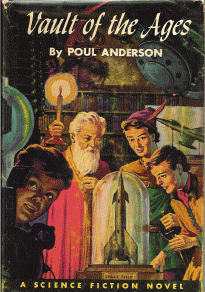
(Click on cover for a larger
view)
|
| |
|
When I first read Vault
of the Ages it was an exciting book; in reviewing it as an adult
close to 40 years later as an adult I find it still an enjoyable
read. Looking back on the stories I read in my youth this had to be
the first in the series of this genre of post doomsday chronicles
that I continued to enjoy...
This book emphasizes messages about human responsibility and the
importance of using science only for good almost as though
accentuated with a bright yellow Hi-Lighter Pen.
The story is set in the Alleghenies roughly 500 years after a
nuclear holocaust, Vault of the Ages tells the story peaceful
farming tribes vs. fierce warriors. Carl, our lead hero and son of
the village Chief is responsible for trading with the people from
the ruined city to obtain metal and other needed materials form the
remains of skyscrapers etc...
Carl and his companions discover a "time vault," basically
a large time capsule remaining from the pre-holocaust civilization,
containing numerous tools, books, models of apparatus and more
depicting the sciences that have since been lost. With the aid of
the newly discovered sciences and much common sense he is able to
help his people.
In rereading the description of the 'VAULT' it brings a smile to my
face when I look around our office, library and museum facilities
here at the Southwest Museum of Engineering, Communications and
Computation here in Glendale Arizona.... I can imagine a facility
such as this being the 'VAULT' spoken of in this story. I wonder
what the world will be like in 500 years and what part the material
preserved by the museum here will play in it....
Ed Sharpe, Archivist for SMECC
See the Museum's Web Site at www.smecc.org
Coury House / SMECC
5802 W. Palmaire Ave. Phone 623-435-1522
Glendale Az 85301 USA |
|
 Deb Baker writes two mystery series. One is her Yooper series, books set
in Michigan's Upper Peninsula, featuring Gertie Johnson. It's fun, but I
prefer the Gretchen Birch Dolls to Die For series. This doll collecting
mystery series is set in Phoenix, and the humor isn't quite as broad.
The books are still funny, including Baker's latest one, Ding Dong
Dead.
Deb Baker writes two mystery series. One is her Yooper series, books set
in Michigan's Upper Peninsula, featuring Gertie Johnson. It's fun, but I
prefer the Gretchen Birch Dolls to Die For series. This doll collecting
mystery series is set in Phoenix, and the humor isn't quite as broad.
The books are still funny, including Baker's latest one, Ding Dong
Dead.



































 Juliet summed that part of the discussion up, saying women show strength in culture, family relationships, romantic relationships, physical, beauty and self-image, strong opinions and politics. Sophie said culture focuses on physical beauty. Her character, Stella, is twenty pounds overweight, ordinary-looking. She acknowledges that she's aging. Some agents were willing to take Sophie on as a client, but they wanted Stella to be more attractive. Fortunately, she found an agent comfortable with the character.
Juliet summed that part of the discussion up, saying women show strength in culture, family relationships, romantic relationships, physical, beauty and self-image, strong opinions and politics. Sophie said culture focuses on physical beauty. Her character, Stella, is twenty pounds overweight, ordinary-looking. She acknowledges that she's aging. Some agents were willing to take Sophie on as a client, but they wanted Stella to be more attractive. Fortunately, she found an agent comfortable with the character.
 Sophie Littlefield brought up Robert
Crais' Elvis Cole. When she thinks of physical strength, she thinks of a bad ass such as Elvis. She said all of the male protagonists in crime novels are strong, and they never seem to work out. Littlefield's character, Stella Hardesty, tries to intimidate men into not being abusive. It's unrealistic for a fifty-year-old woman who hasn't worked out to have physical strength. So, Stella starts a fitness program. She looks for ways to handcuff men, so she buys herself bondage items for restraining men. Sophie said she knew her character needed to restrain them, and she was looking for the plastic handcuffs police use, but the Internet led her to bondage sites, and that's what happened with Stella. When creating women characters, physical strength must be considered. Julie pointed out that Stella has another weapon, a gun. Lily Ivory doesn't need a gun. And, Inez Stannert has guns, and her words.
Sophie Littlefield brought up Robert
Crais' Elvis Cole. When she thinks of physical strength, she thinks of a bad ass such as Elvis. She said all of the male protagonists in crime novels are strong, and they never seem to work out. Littlefield's character, Stella Hardesty, tries to intimidate men into not being abusive. It's unrealistic for a fifty-year-old woman who hasn't worked out to have physical strength. So, Stella starts a fitness program. She looks for ways to handcuff men, so she buys herself bondage items for restraining men. Sophie said she knew her character needed to restrain them, and she was looking for the plastic handcuffs police use, but the Internet led her to bondage sites, and that's what happened with Stella. When creating women characters, physical strength must be considered. Julie pointed out that Stella has another weapon, a gun. Lily Ivory doesn't need a gun. And, Inez Stannert has guns, and her words.


 One
woman who read the latest book, Fire and Ice,
complained about the ending of the book, that she must have
been missing something. Jance went back, and said, no, that's
how it ends. The woman immediately wrote back and told her all
the aspects of the book that she felt had been left dangling.
Judy said she has a quota of 100,000 words, and she'd already
used up her quota.
One
woman who read the latest book, Fire and Ice,
complained about the ending of the book, that she must have
been missing something. Jance went back, and said, no, that's
how it ends. The woman immediately wrote back and told her all
the aspects of the book that she felt had been left dangling.
Judy said she has a quota of 100,000 words, and she'd already
used up her quota.
 She
was asked about not getting into the creative writing program
at University of Arizona. She said the creative writing
teacher, and her ex-husband were both dead by the time her
first book came out. Her first husband died at 42 of chronic
alcoholism the year after she divorced him. For a long time,
she was really angry about not getting into the program. It's
ironic that the publisher of her poetry book, After the
Fire, is the University of Arizona. She received an
honorary Doctorate of Humane Letters a few years ago, but they
never let her do the commencement speech.
She
was asked about not getting into the creative writing program
at University of Arizona. She said the creative writing
teacher, and her ex-husband were both dead by the time her
first book came out. Her first husband died at 42 of chronic
alcoholism the year after she divorced him. For a long time,
she was really angry about not getting into the program. It's
ironic that the publisher of her poetry book, After the
Fire, is the University of Arizona. She received an
honorary Doctorate of Humane Letters a few years ago, but they
never let her do the commencement speech.

 According to
Myers, in publishing cozy mysteries, almost every time an author loses
an editor, the next editor dumps him. He said his first three series had
characters who were single, without many family connections or love
interests. So, for his next series, he wanted to give his character a
big family. Tim's wife is from a large family, so he observes their
holidays and times together. Ben Perkins is the oldest of six who work
in a soap factory. He's the troubleshooter of the family in books with
titles such as Dead Men Don't Lye and A Pour Way to Die.
But the editor of his soapmaking series left, and the new editor wanted
a new series written under a new name. Myers, who had been in Vermont
for a few hours, set a pottery series in that state, picked the name
Melissa Glazer, and named his character Carolyn after author Carolyn
Hart.
According to
Myers, in publishing cozy mysteries, almost every time an author loses
an editor, the next editor dumps him. He said his first three series had
characters who were single, without many family connections or love
interests. So, for his next series, he wanted to give his character a
big family. Tim's wife is from a large family, so he observes their
holidays and times together. Ben Perkins is the oldest of six who work
in a soap factory. He's the troubleshooter of the family in books with
titles such as Dead Men Don't Lye and A Pour Way to Die.
But the editor of his soapmaking series left, and the new editor wanted
a new series written under a new name. Myers, who had been in Vermont
for a few hours, set a pottery series in that state, picked the name
Melissa Glazer, and named his character Carolyn after author Carolyn
Hart. Disher has also written literary novels, but they were not published in
the U.S. He has two series of crime thrillers. The first books featured
a bank robber, Wyatt. Those six books are scarce, and out-of-print. It's
difficult to get copies of those because there is an underground
readership for the Wyatt books. According to Disher, all fiction is
driven by questions. For the Wyatt books, the question is, "Will he
get away with it?" This series was inspired by Donald Westlake, who
wrote about Parker, a bank robber, under the name of Richard Stark.
Disher wanted to write about crime from the other side. The seventh book
in that series will be out next year, after a gap of 10 years. It's at
the editor's right now, with a tentative title of Dirty Old Town.
Disher has also written literary novels, but they were not published in
the U.S. He has two series of crime thrillers. The first books featured
a bank robber, Wyatt. Those six books are scarce, and out-of-print. It's
difficult to get copies of those because there is an underground
readership for the Wyatt books. According to Disher, all fiction is
driven by questions. For the Wyatt books, the question is, "Will he
get away with it?" This series was inspired by Donald Westlake, who
wrote about Parker, a bank robber, under the name of Richard Stark.
Disher wanted to write about crime from the other side. The seventh book
in that series will be out next year, after a gap of 10 years. It's at
the editor's right now, with a tentative title of Dirty Old Town.























 Judge
Lynn Toler, author of My Mother's Rules, and star of TV's
Divorce Court, appeared at the Velma Teague Library as part of
the Authors @ The Teague series on Saturday, Jan. 10. If her
television audiences enjoy her comments half as much as the
audience for her recent appearance did, she must be a ratings
success.
Judge
Lynn Toler, author of My Mother's Rules, and star of TV's
Divorce Court, appeared at the Velma Teague Library as part of
the Authors @ The Teague series on Saturday, Jan. 10. If her
television audiences enjoy her comments half as much as the
audience for her recent appearance did, she must be a ratings
success.
 The Velma Teague Library was fortunate to host Jana Bommersbach for the
latest Authors @ The Teague program. Bommersbach is an award-winning
journalist, and the author of the true crime book, The
Trunk Murderess: Winnie Ruth Judd. Now, she has a new true crime book,
another one about a Phoenix murder, Bones in the Desert.
The Velma Teague Library was fortunate to host Jana Bommersbach for the
latest Authors @ The Teague program. Bommersbach is an award-winning
journalist, and the author of the true crime book, The
Trunk Murderess: Winnie Ruth Judd. Now, she has a new true crime book,
another one about a Phoenix murder, Bones in the Desert.
 Phoenix
Magazine carried Bommersbach's first article about the crime, called
"Where Is My Mother?" Thirteen months later, Loretta's body was
found. Hundreds of people had searched the desert. Jana was so close to
her own mother that this case disturbed her. A family doing rock hounding
found Loretta's bones in the desert, and called the police, and waited.
The autopsy and teeth revealed the body was Loretta's.
Phoenix
Magazine carried Bommersbach's first article about the crime, called
"Where Is My Mother?" Thirteen months later, Loretta's body was
found. Hundreds of people had searched the desert. Jana was so close to
her own mother that this case disturbed her. A family doing rock hounding
found Loretta's bones in the desert, and called the police, and waited.
The autopsy and teeth revealed the body was Loretta's.
 It’s
a special December Authors @ The Teague program when award-winning
journalist and author, Jana Bommersbach, appeared at the
It’s
a special December Authors @ The Teague program when award-winning
journalist and author, Jana Bommersbach, appeared at the
 GLENDALE,
Ariz. – Jana Bommersbach, a well-known author and
journalist, will be stopping by Velma Teague Branch Library, 7010
N. 58th Ave., at 7 p.m. on Thursday, Dec. 4 to talk about her
latest book, “Bones in the Desert: The True Story of a Mother’s
Murder and a Daughter’s Search.”
GLENDALE,
Ariz. – Jana Bommersbach, a well-known author and
journalist, will be stopping by Velma Teague Branch Library, 7010
N. 58th Ave., at 7 p.m. on Thursday, Dec. 4 to talk about her
latest book, “Bones in the Desert: The True Story of a Mother’s
Murder and a Daughter’s Search.”







 This sting in Running
with the Devil began in 2003. The talk in the book of war between
the Hell's Angels and the Mongols, a rival biker gang, foreshadowed
recent events in San Francisco.
This sting in Running
with the Devil began in 2003. The talk in the book of war between
the Hell's Angels and the Mongols, a rival biker gang, foreshadowed
recent events in San Francisco. Mr.
Atkins new book is Moontown and at last night's
performance he read his short story, The Cubists Attorney.
Mr. Hirshberg read a selection from The Two Sams: Ghost
Stories, and is the author of American Morons.
Mr.
Atkins new book is Moontown and at last night's
performance he read his short story, The Cubists Attorney.
Mr. Hirshberg read a selection from The Two Sams: Ghost
Stories, and is the author of American Morons.




 If I Die in Juárez has pink crosses on the cover.
Those pink crosses are in Mexico at sites where bodies of the
young women have been found. The book is dedicated to the hundreds
of young women who have disappeared, las desaparecidos, brutally
murdered in Ciudad Juárez, Chihuahua, Mexico. Juárez is right
across the border from El Paso, Texas, its sister city. Although
most of the women have disappeared from Juárez, some have also
disappeared from El Paso. There are over 5,000 women who have
disappeared from both sides of the border, and their bodies have
never been found.
If I Die in Juárez has pink crosses on the cover.
Those pink crosses are in Mexico at sites where bodies of the
young women have been found. The book is dedicated to the hundreds
of young women who have disappeared, las desaparecidos, brutally
murdered in Ciudad Juárez, Chihuahua, Mexico. Juárez is right
across the border from El Paso, Texas, its sister city. Although
most of the women have disappeared from Juárez, some have also
disappeared from El Paso. There are over 5,000 women who have
disappeared from both sides of the border, and their bodies have
never been found.
















 Maybe
We Are Flamingos
Maybe
We Are Flamingos












 Deborah
Crombie, author of the Duncan Kincaid/Gemma James mysteries, is
appearing at the Velma Teague Library in Glendale, AZ on
Wednesday, July 1 at 3 p.m. She'll be appearing as part of the
Authors at the Teague series to promote her latest book- the twelfth
in the series, Where Memories Lie.
Deborah
Crombie, author of the Duncan Kincaid/Gemma James mysteries, is
appearing at the Velma Teague Library in Glendale, AZ on
Wednesday, July 1 at 3 p.m. She'll be appearing as part of the
Authors at the Teague series to promote her latest book- the twelfth
in the series, Where Memories Lie.
 Deborah Crombie, author of the Duncan
Kincaid/Gemma James mysteries, appeared at the Velma Teague Library today as part of the Authors at the Teague series. We were fortunate to have her squeeze us into her schedule when she was in town to appear at The Poisoned Pen Bookstore in Scottsdale.
Deborah Crombie, author of the Duncan
Kincaid/Gemma James mysteries, appeared at the Velma Teague Library today as part of the Authors at the Teague series. We were fortunate to have her squeeze us into her schedule when she was in town to appear at The Poisoned Pen Bookstore in Scottsdale.


 Book
Topics
Book
Topics




 With her new book due out in a few weeks, award-winning author Rhys
Bowen took the time to appear at the Velma Teague Library, as part of
the Authors at the Teague series. She had an appreciative
audience, eager to hear about her mysteries that have won Agatha and
Anthony Awards.
With her new book due out in a few weeks, award-winning author Rhys
Bowen took the time to appear at the Velma Teague Library, as part of
the Authors at the Teague series. She had an appreciative
audience, eager to hear about her mysteries that have won Agatha and
Anthony Awards. Her
Royal Spyness is the first book in her third mystery series.
Her
Royal Spyness is the first book in her third mystery series. in March. Molly's detective agency has become successful. She has too
many cases, and wants her ex-cop boyfriend, Daniel, to join her. One
winter night, they walk in Central Park, and find the body of a young
woman. While Molly waits with the body, the woman regains
consciousness.. She survives, but she's lost the power of speech and
no one knows who she is. In each Molly book, Rhys can dig into some of
New York's story. This book is about New York theater and the lives of
the chorus girls.
in March. Molly's detective agency has become successful. She has too
many cases, and wants her ex-cop boyfriend, Daniel, to join her. One
winter night, they walk in Central Park, and find the body of a young
woman. While Molly waits with the body, the woman regains
consciousness.. She survives, but she's lost the power of speech and
no one knows who she is. In each Molly book, Rhys can dig into some of
New York's story. This book is about New York theater and the lives of
the chorus girls.









 When Louise
Ure's first Arizona mystery, Forcing
When Louise
Ure's first Arizona mystery, Forcing Congratulations
to this year's nominees for the Dilys
Congratulations
to this year's nominees for the Dilys As part of
the Authors at the Teague series, Leighton
As part of
the Authors at the Teague series, Leighton
 GLENDALE,
Ariz. – New author Leighton Gage has lived all over the world
– Australia, Europe, South America, plus traveled widely in Asia
and Africa. He has had a background in the literary arts for years
as a copywriter, an advertising creative director, a magazine
editor, and a writer/producer/director of documentary films and
industrial videos.
GLENDALE,
Ariz. – New author Leighton Gage has lived all over the world
– Australia, Europe, South America, plus traveled widely in Asia
and Africa. He has had a background in the literary arts for years
as a copywriter, an advertising creative director, a magazine
editor, and a writer/producer/director of documentary films and
industrial videos.



 The
last time I was so excited about a first-time mystery writer, I was
reading Jonathon King's The Blue Edge of Midnight, which went on to win
the Edgar Award for first novel. Forcing Amaryllis by Louise Ure is a
powerful novel, with a fascinating protagonist. I know some readers were
fed up with Calla, the main character, and others said the book's style
indicated that it was a first novel, but I don't think they read far
enough in the book.
The
last time I was so excited about a first-time mystery writer, I was
reading Jonathon King's The Blue Edge of Midnight, which went on to win
the Edgar Award for first novel. Forcing Amaryllis by Louise Ure is a
powerful novel, with a fascinating protagonist. I know some readers were
fed up with Calla, the main character, and others said the book's style
indicated that it was a first novel, but I don't think they read far
enough in the book.
 Forcing Amaryllis
by Louise Ure went on to win the
Forcing Amaryllis
by Louise Ure went on to win the










 After
pictures, we invited everyone over to a local coffee shop, A
Shot of Java . The owner, Lisa Dowd, was nice enough to open
up just for us. Nine of us went over, and had the chance to
talk to Zoё and Andy. It was the perfect ending for our
day. Their day? They were heading off to a gun club.
After
pictures, we invited everyone over to a local coffee shop, A
Shot of Java . The owner, Lisa Dowd, was nice enough to open
up just for us. Nine of us went over, and had the chance to
talk to Zoё and Andy. It was the perfect ending for our
day. Their day? They were heading off to a gun club.







